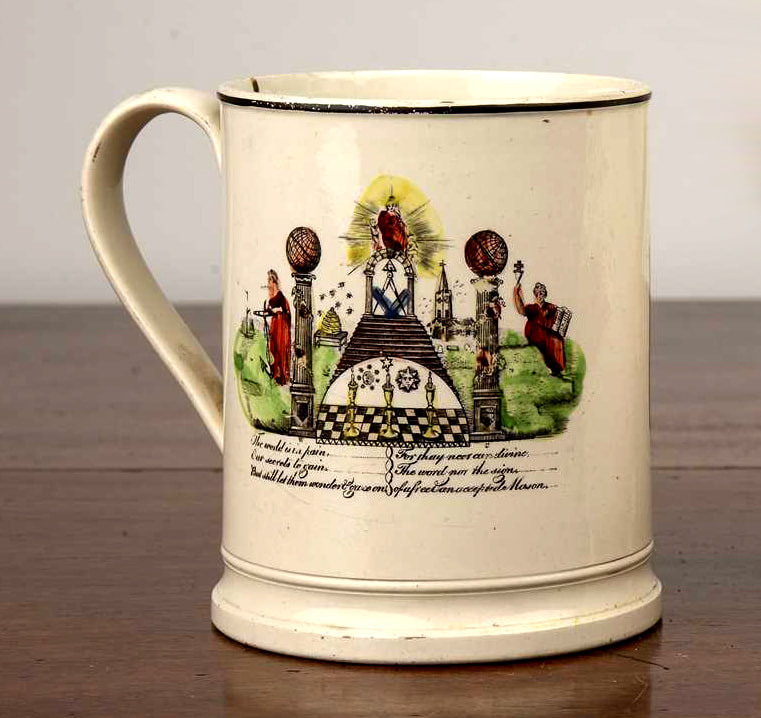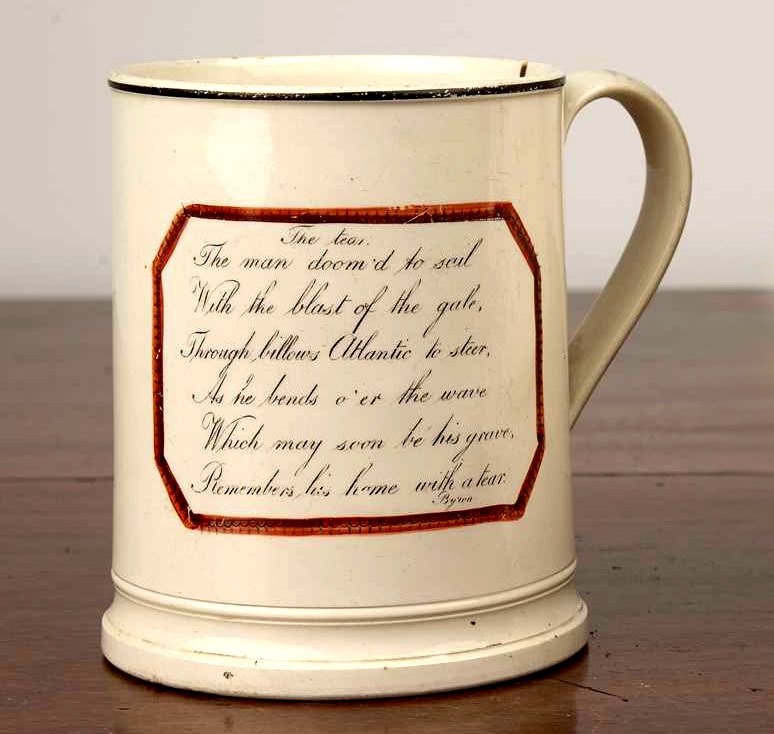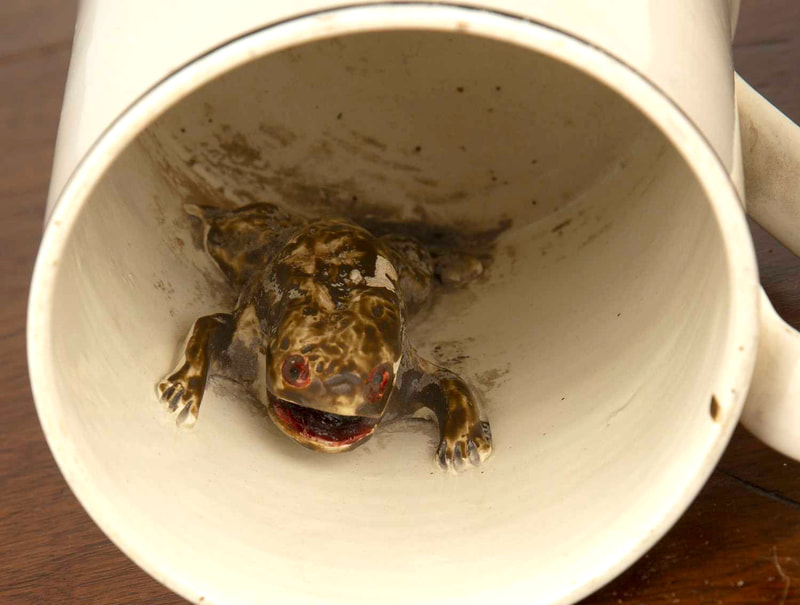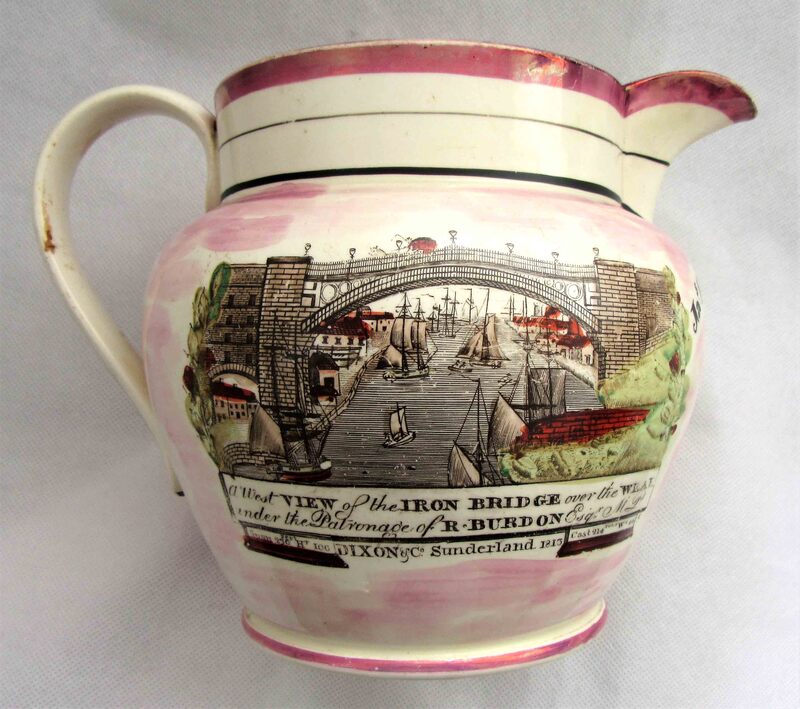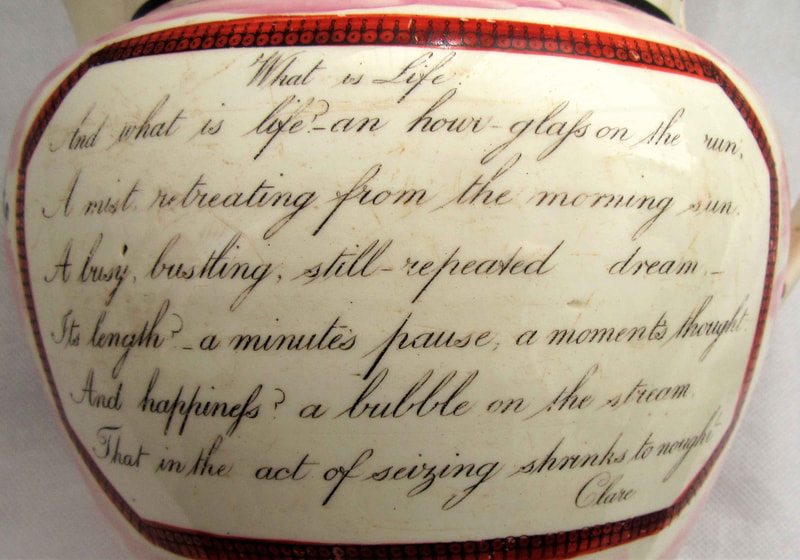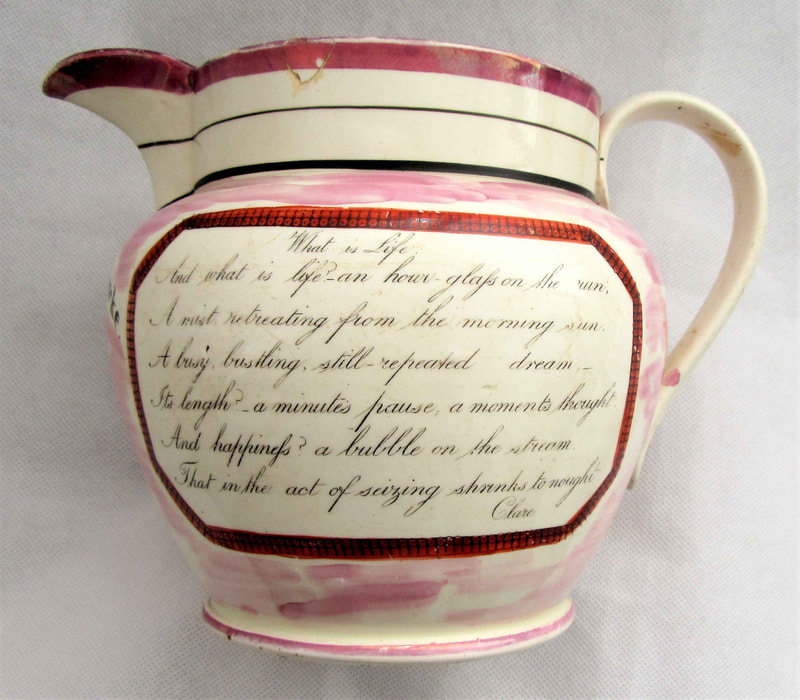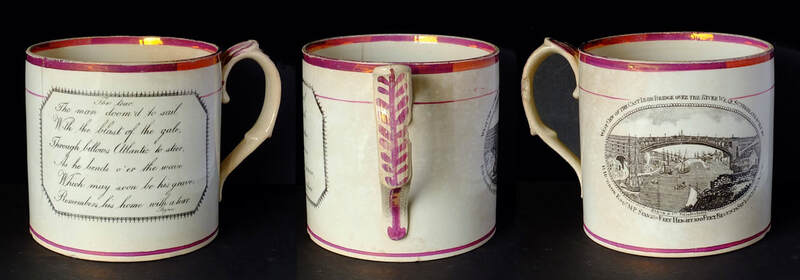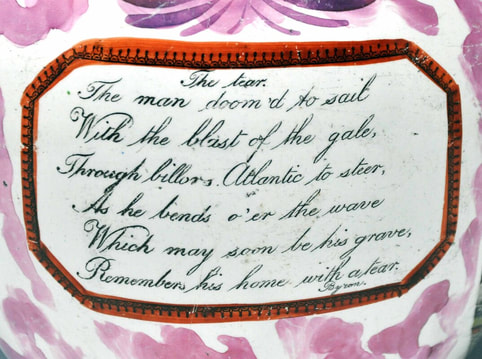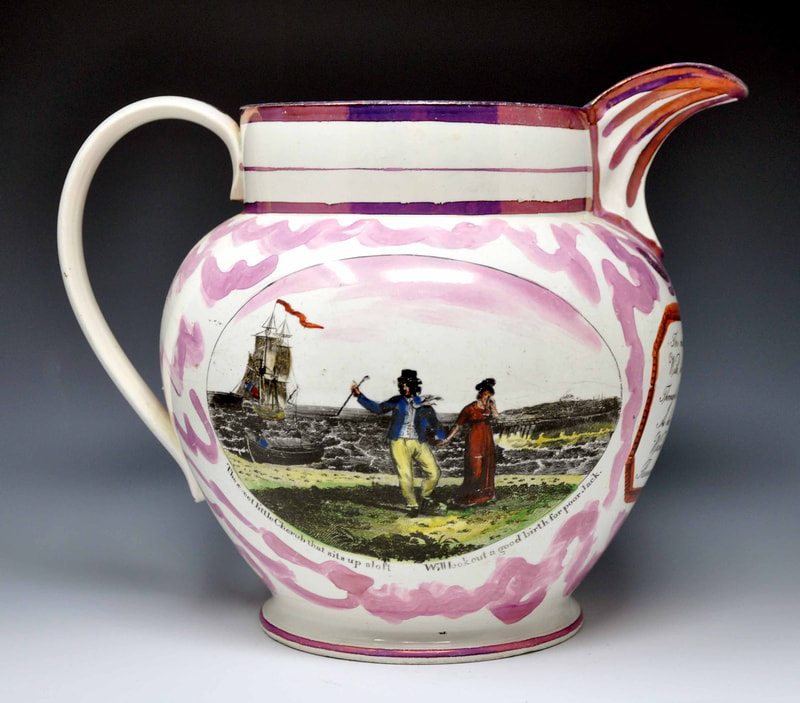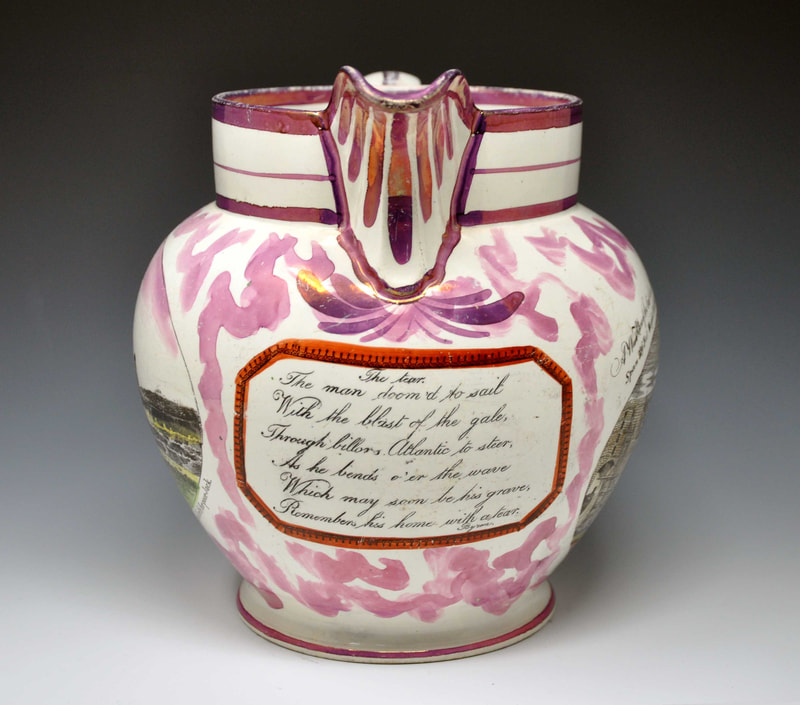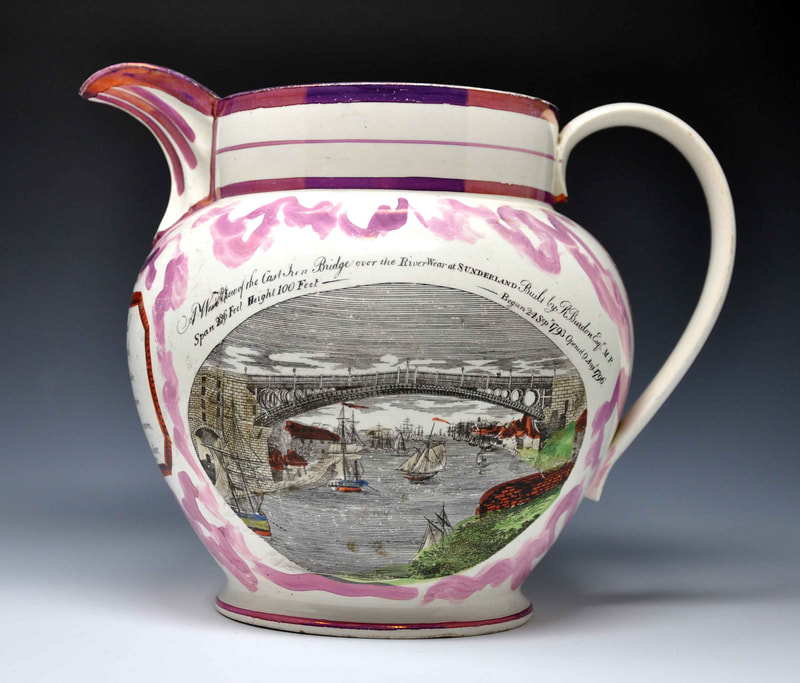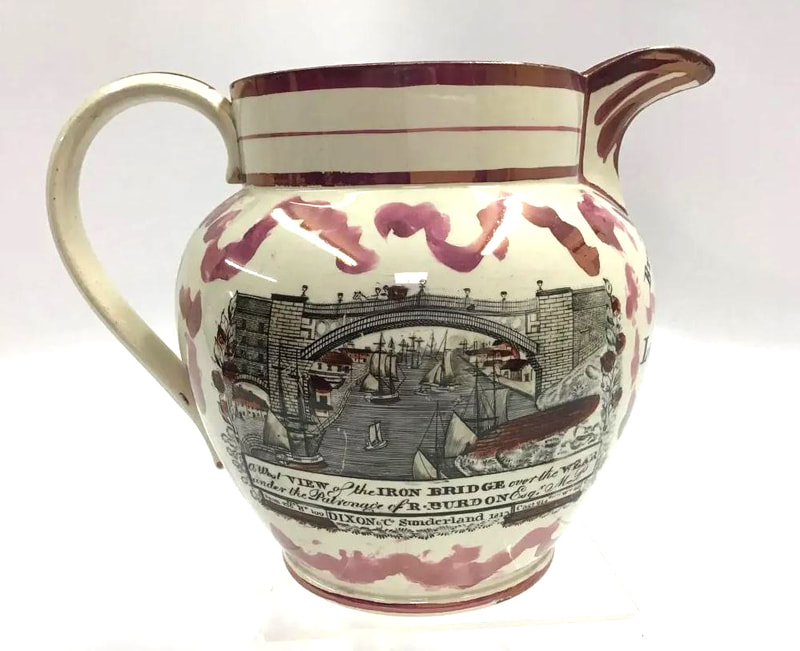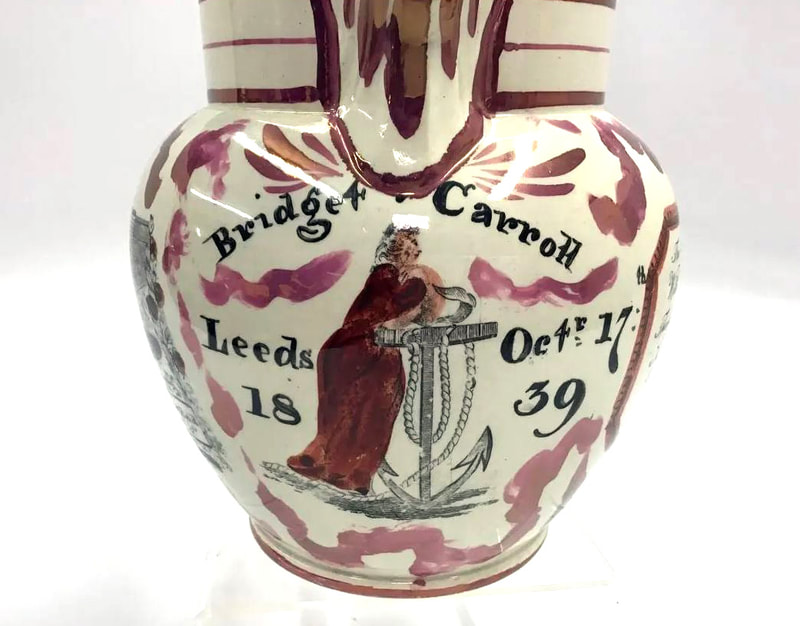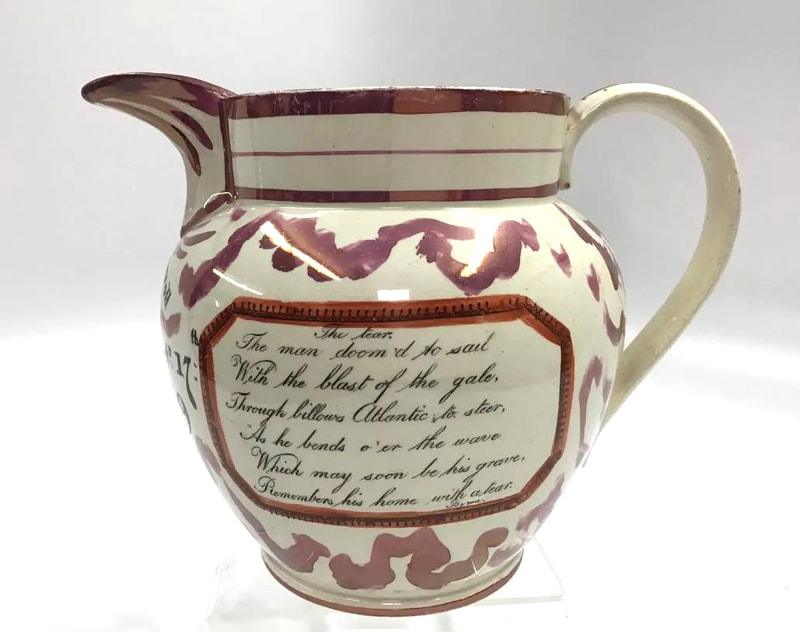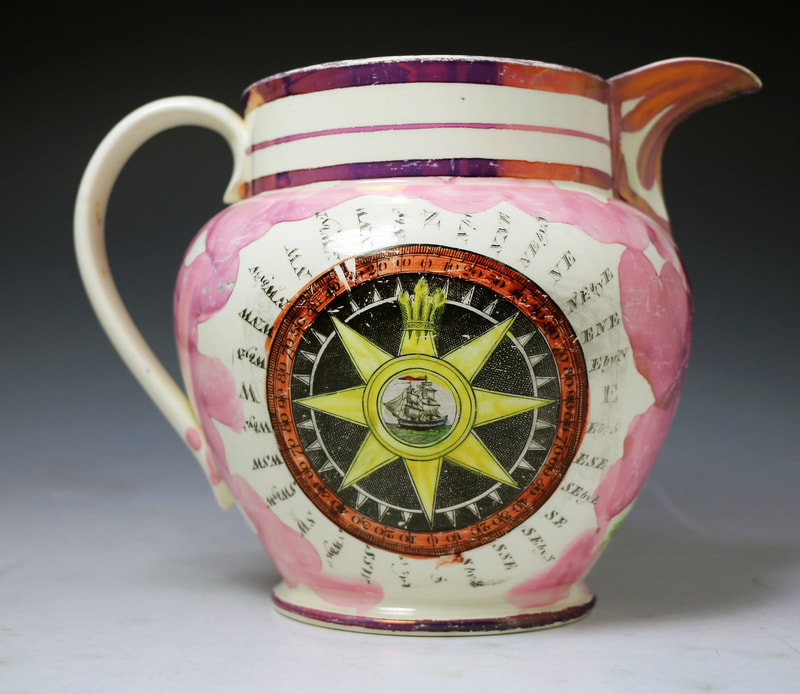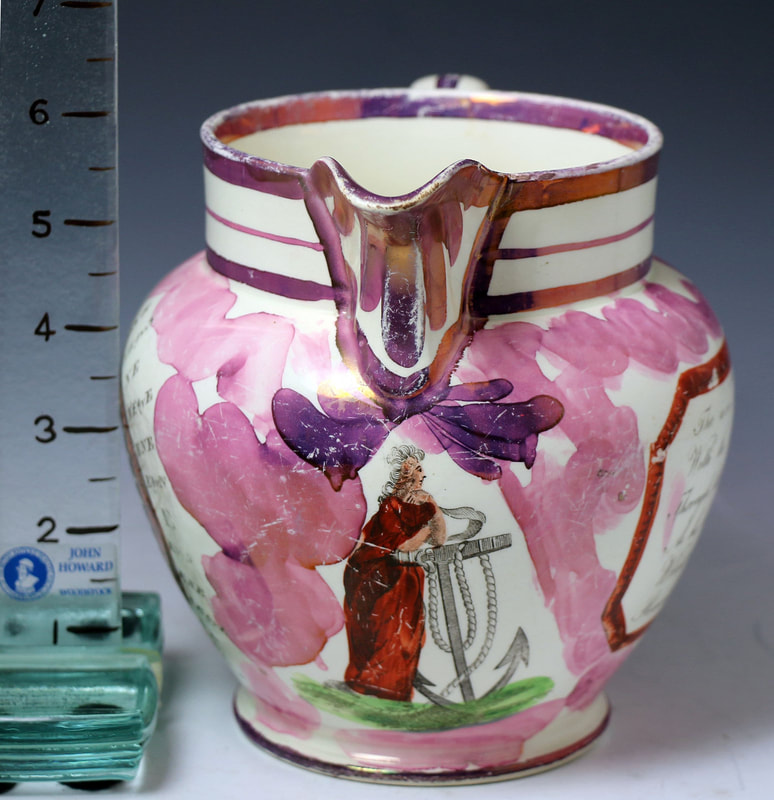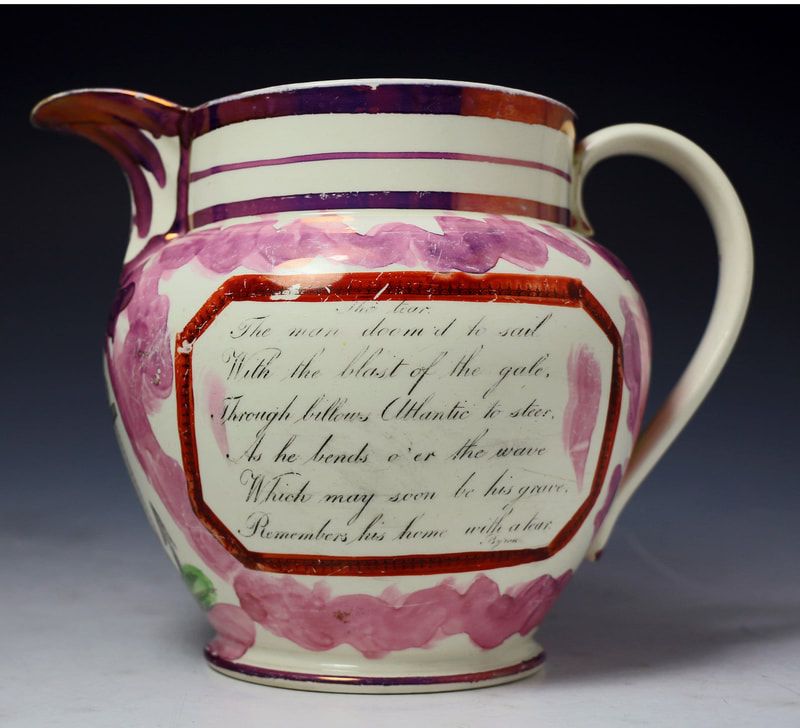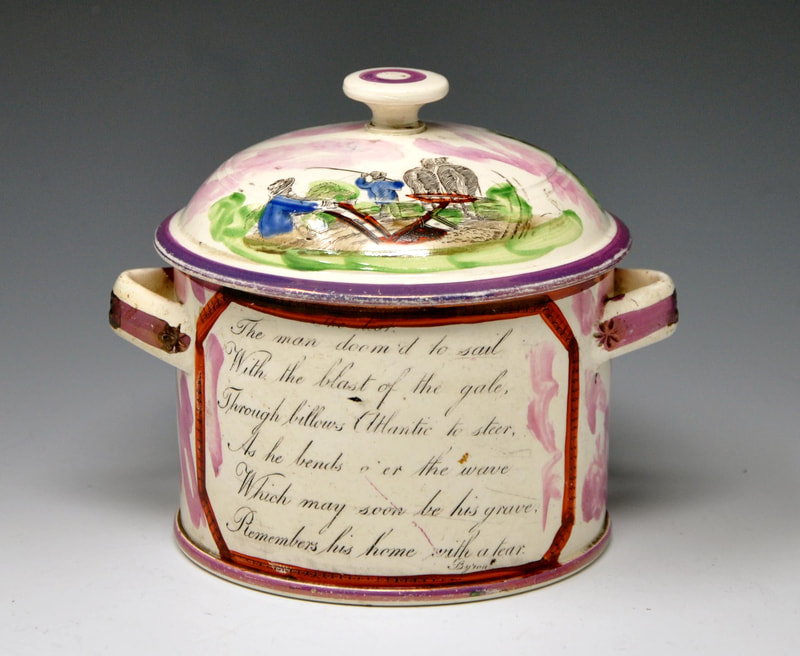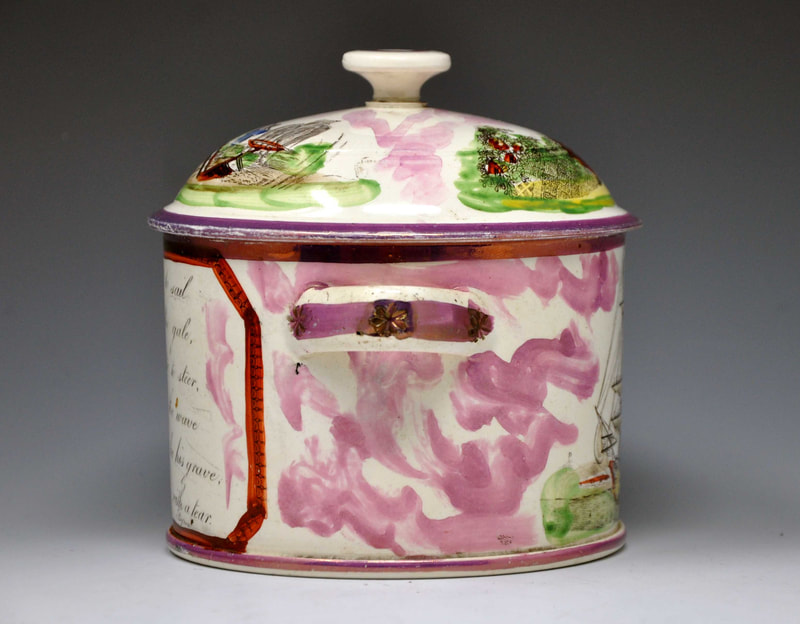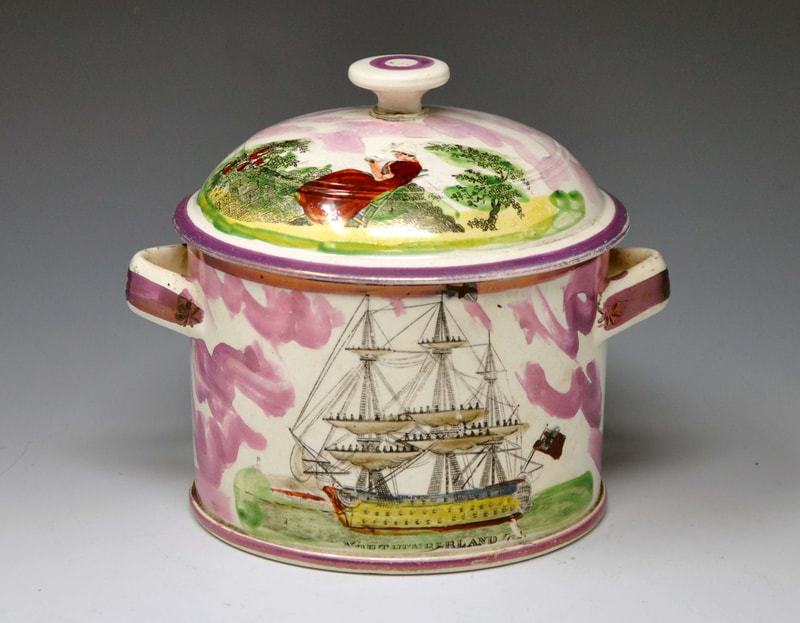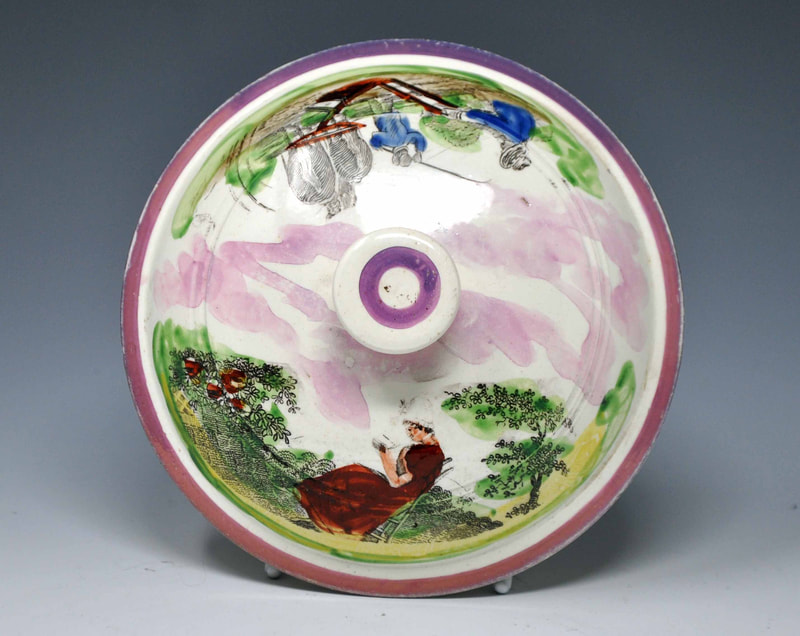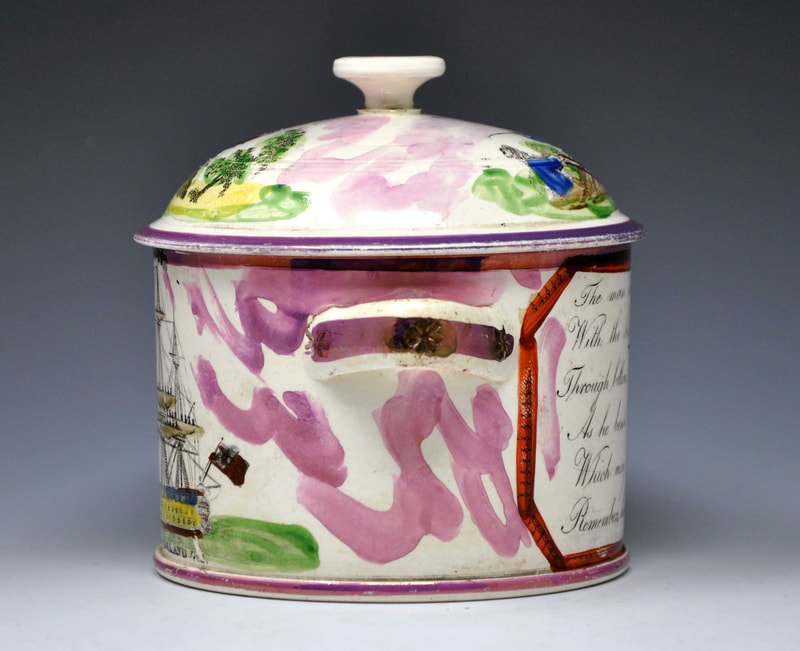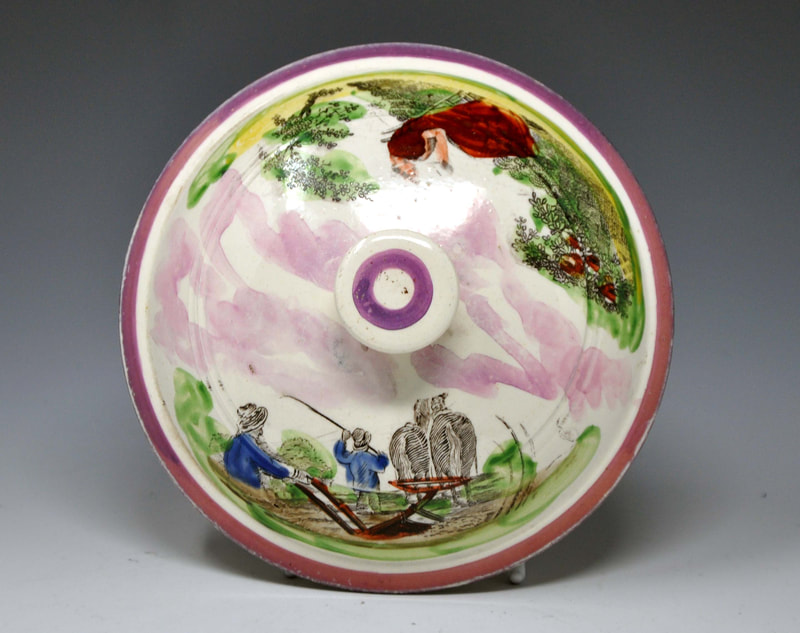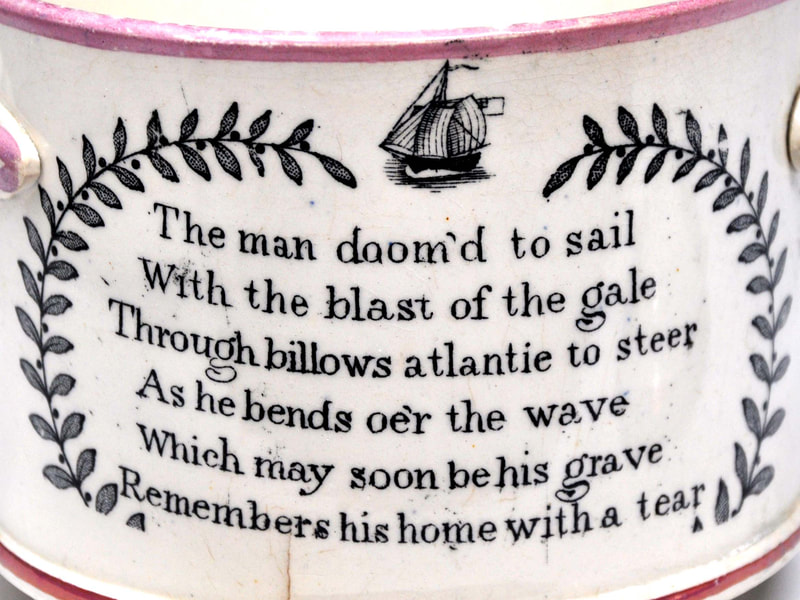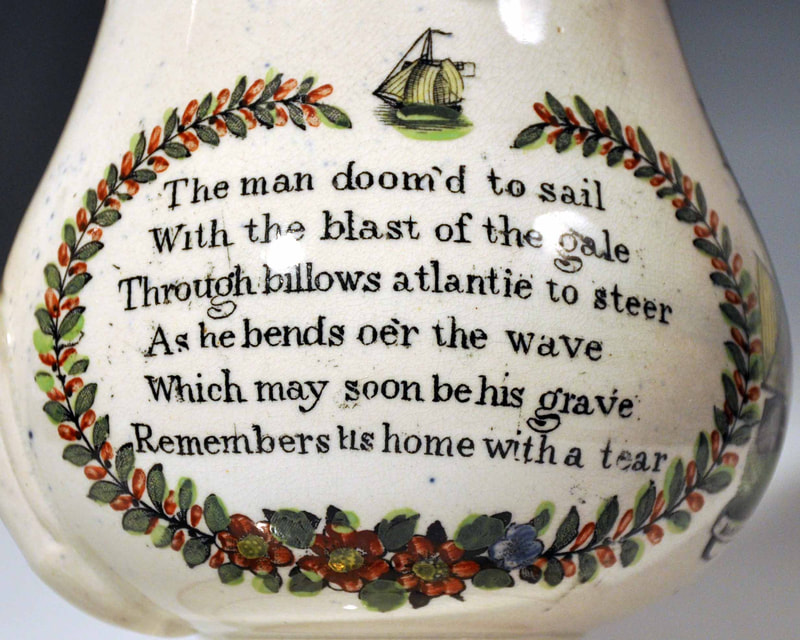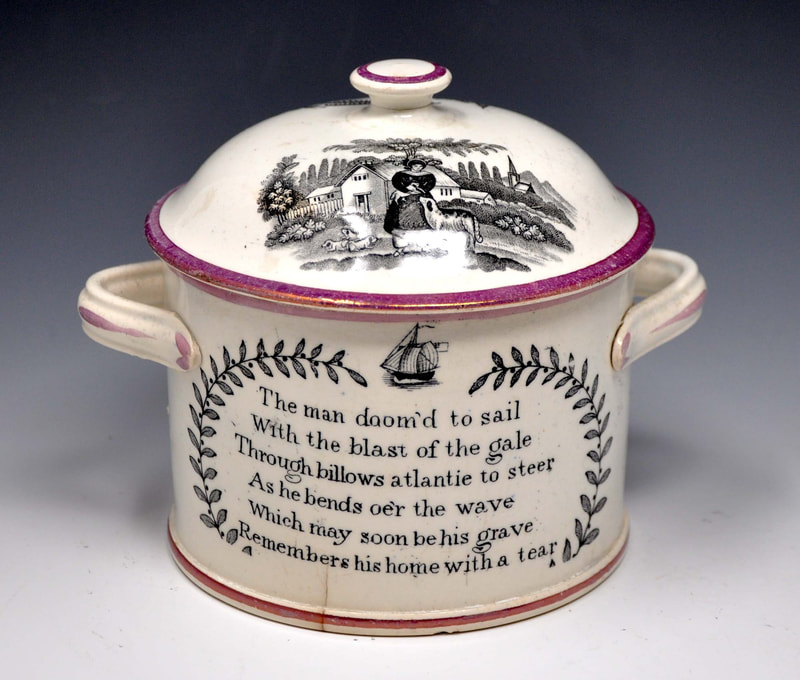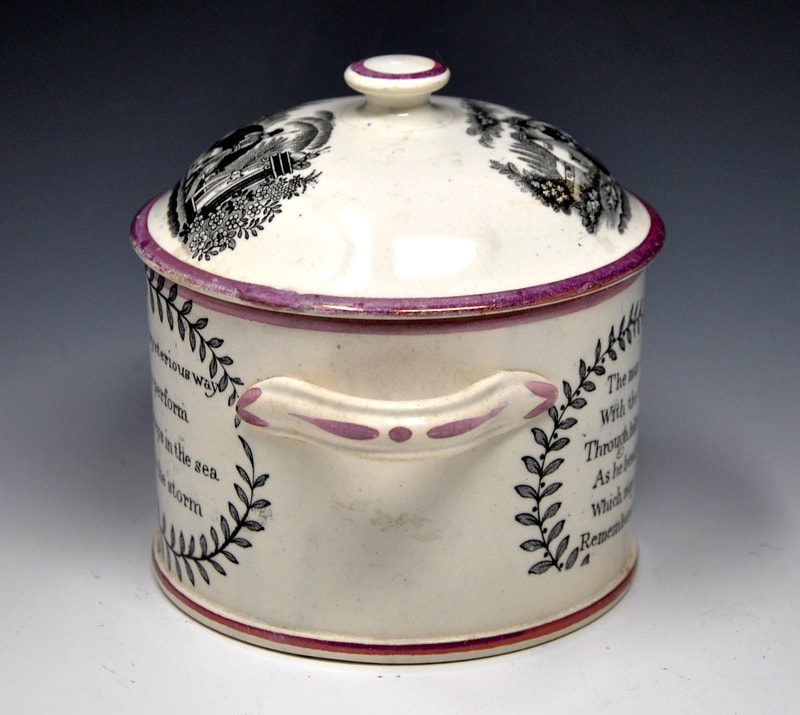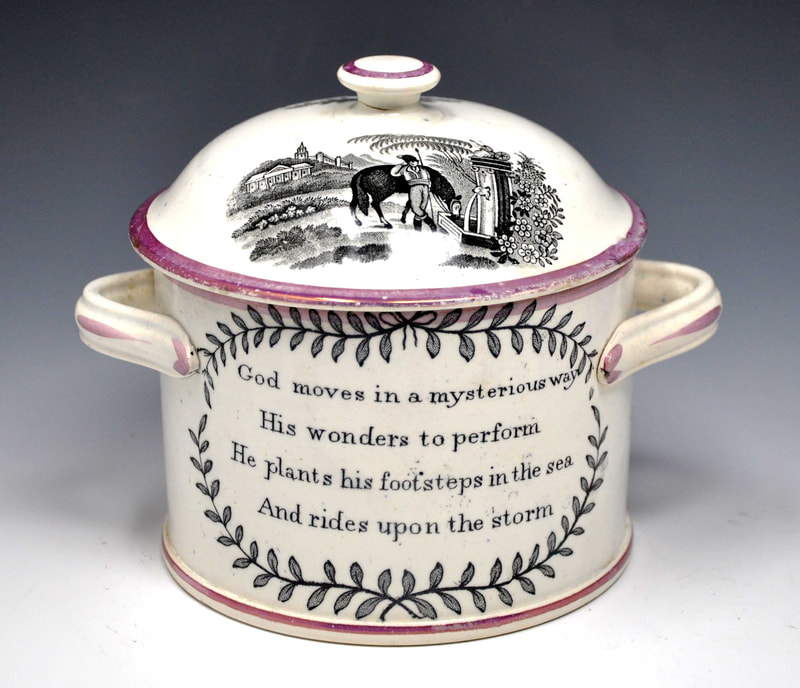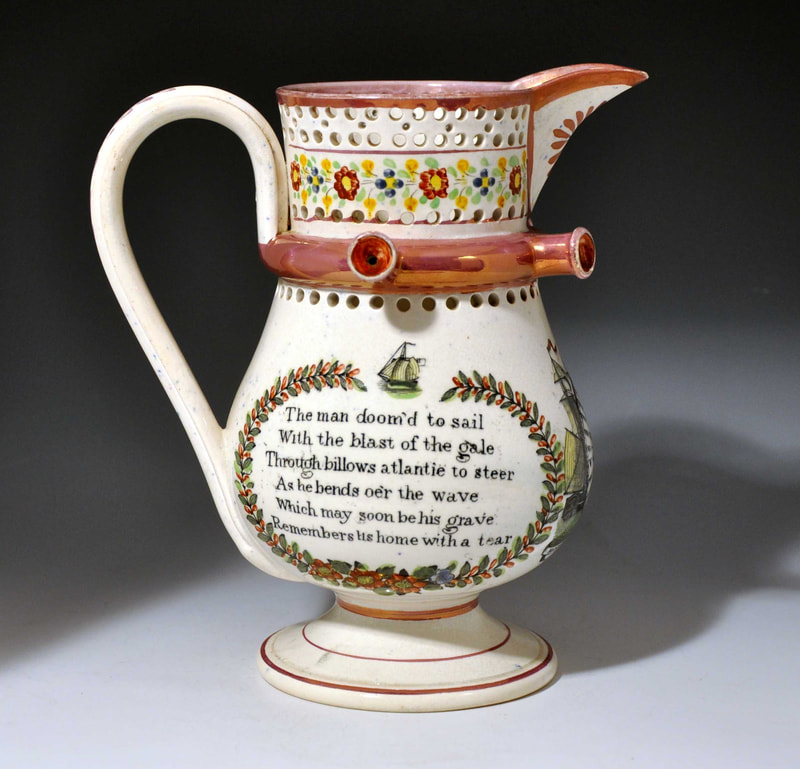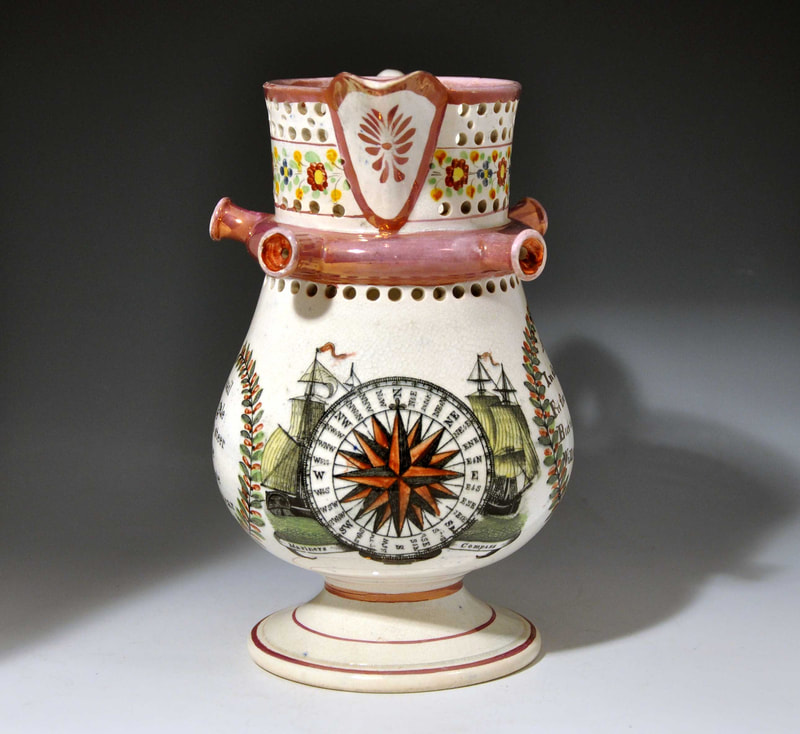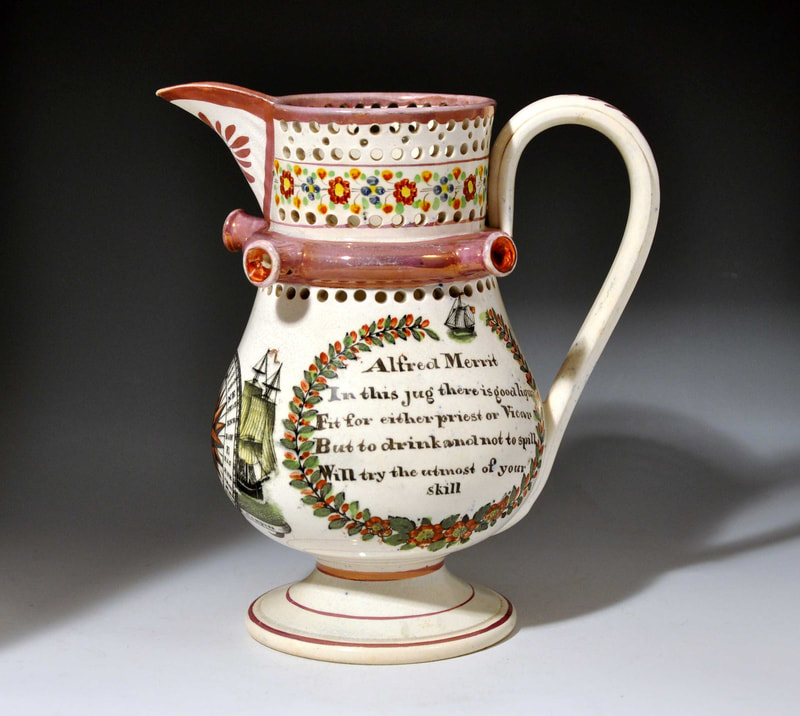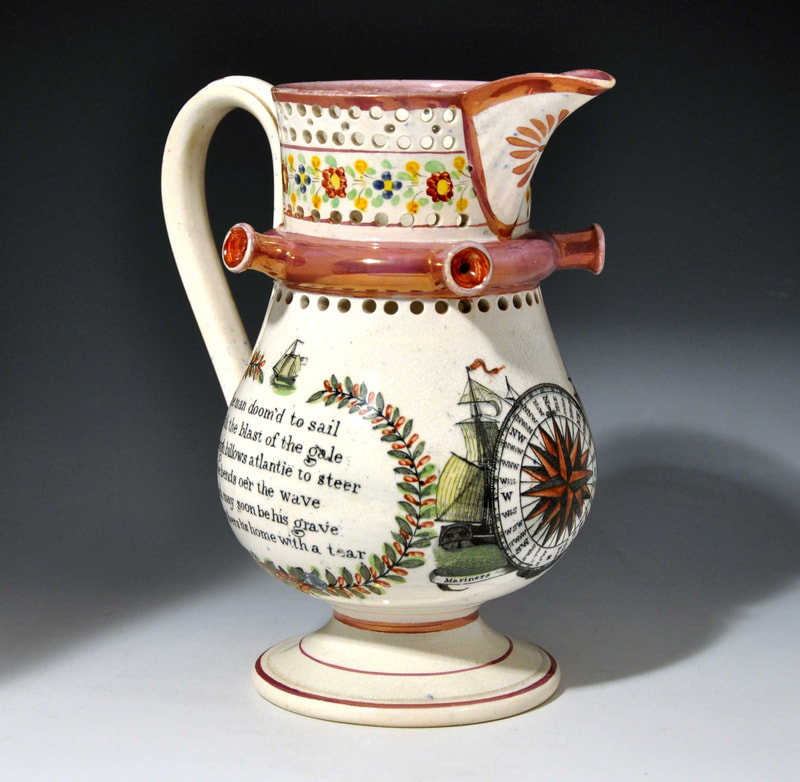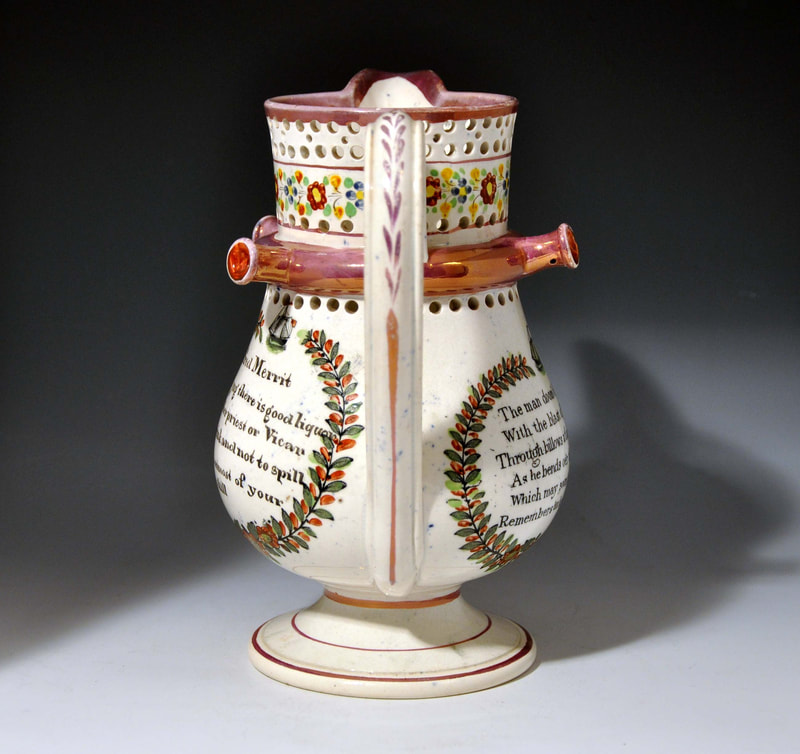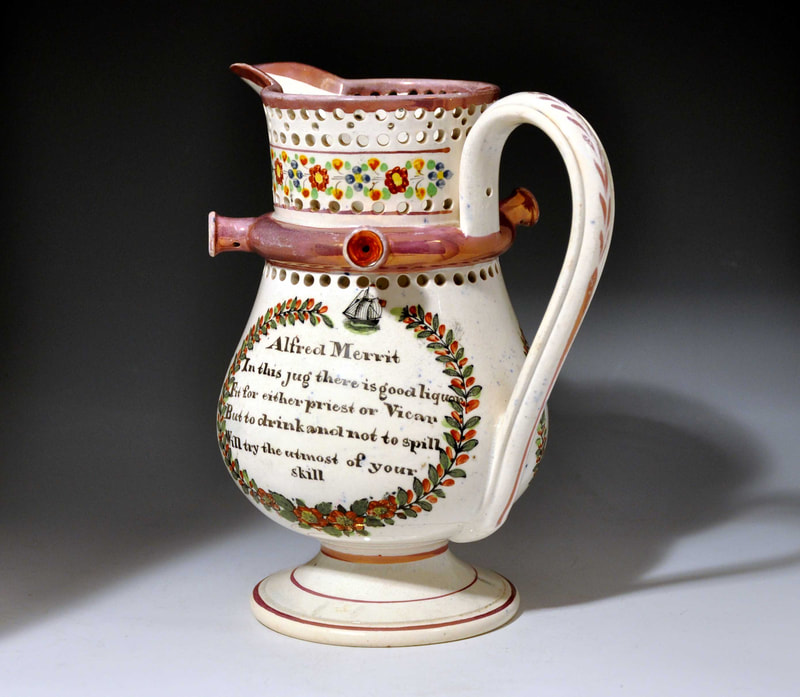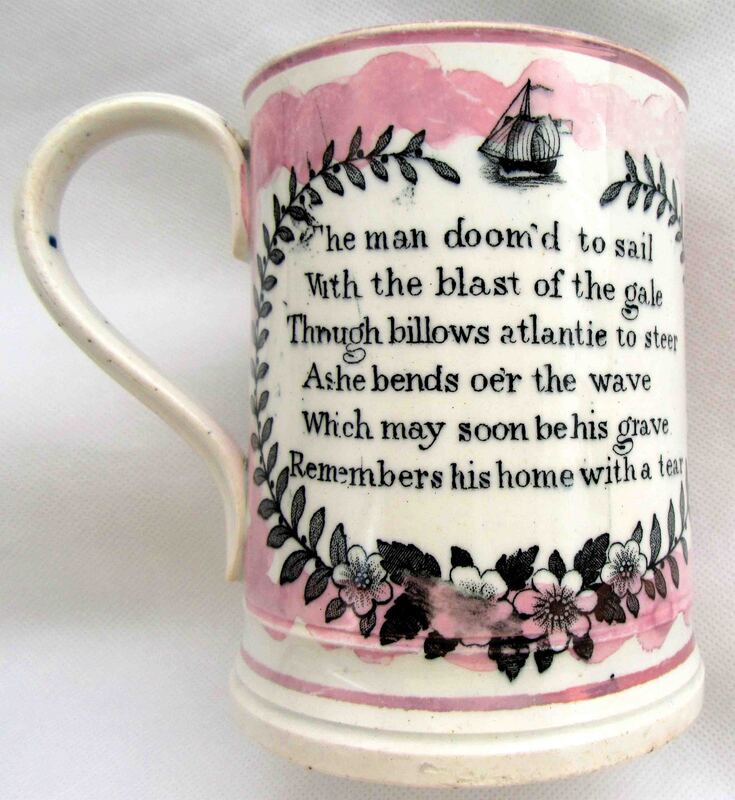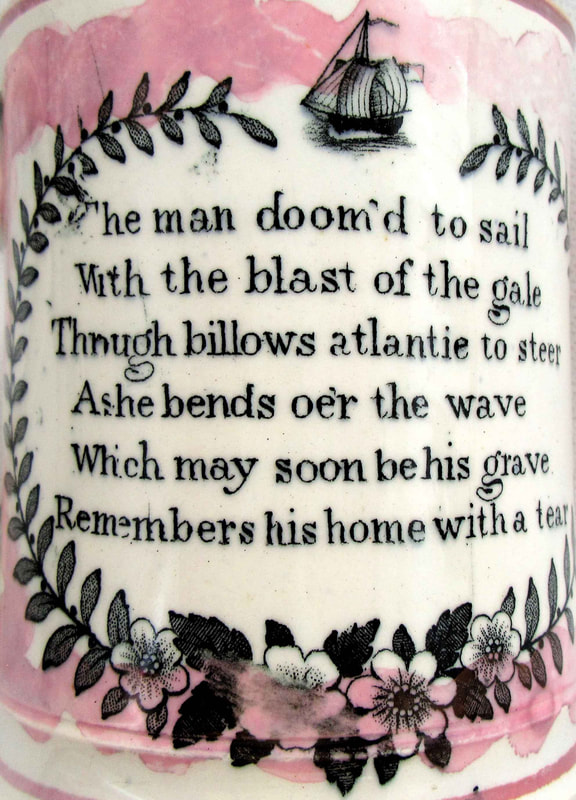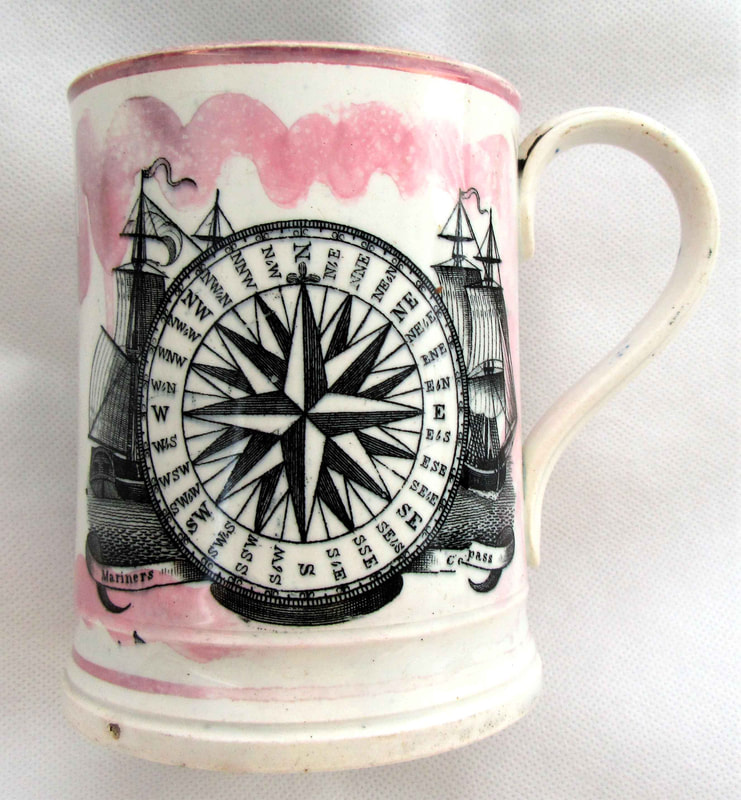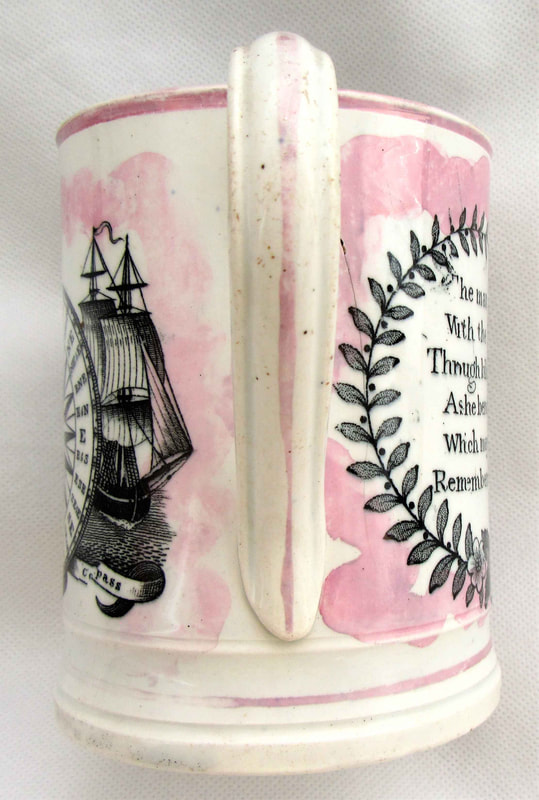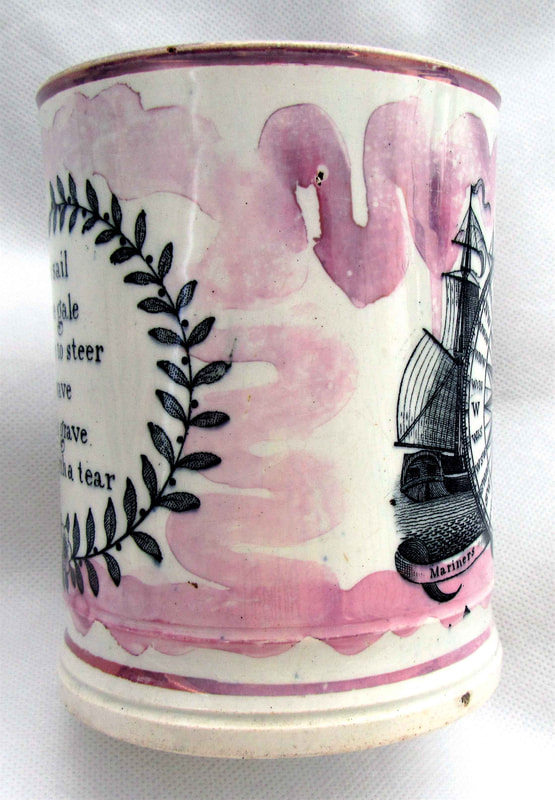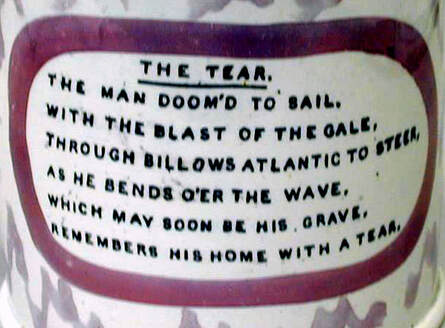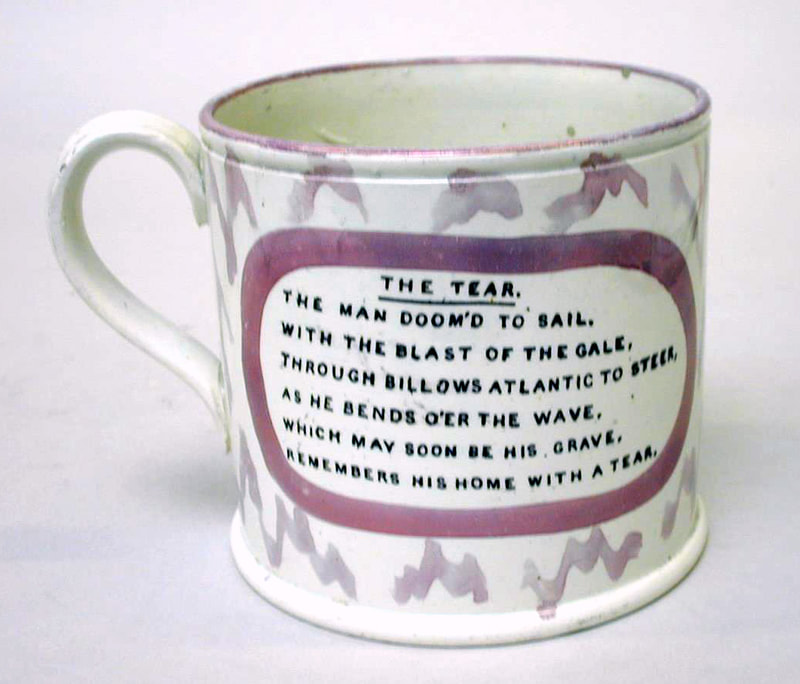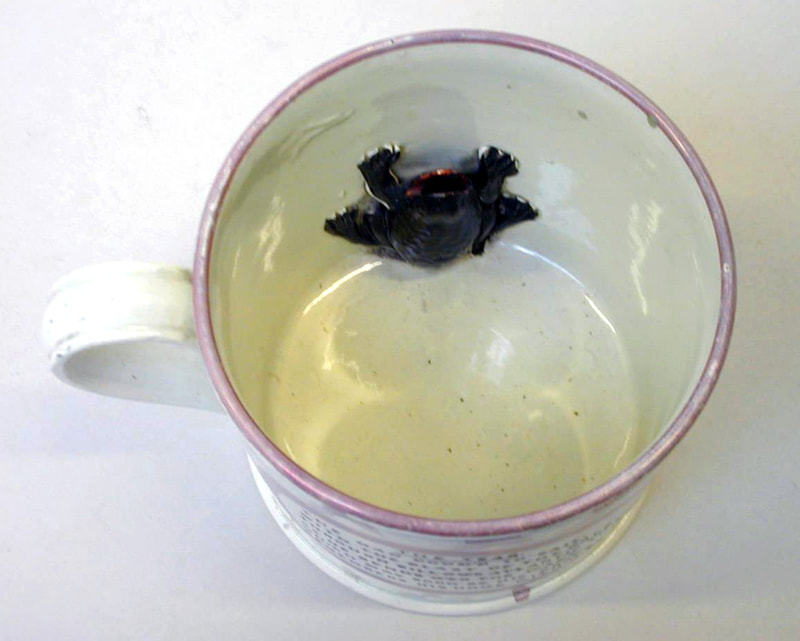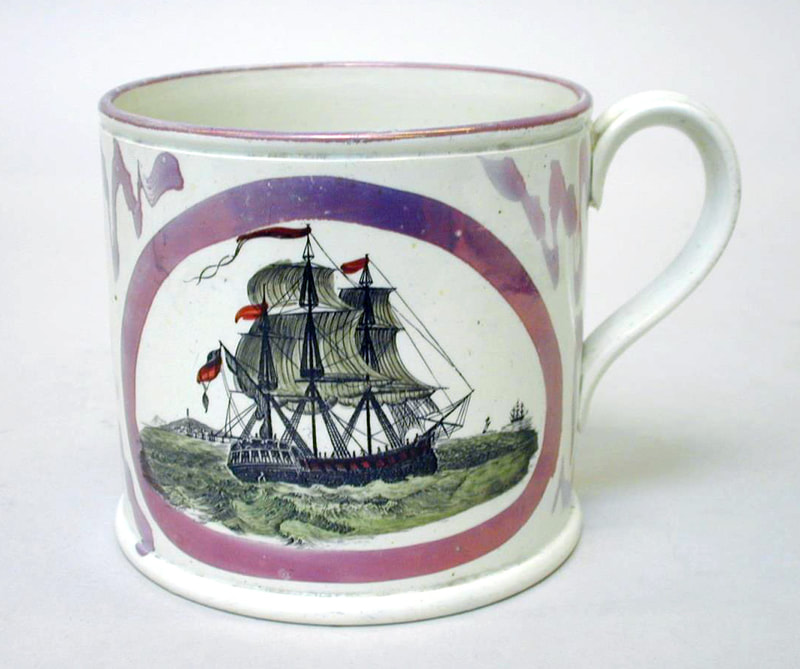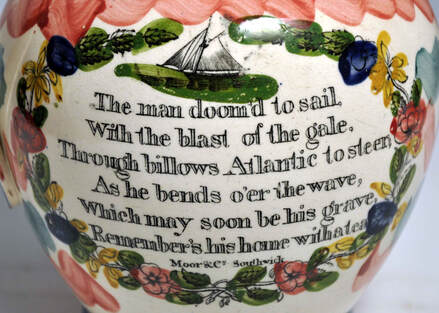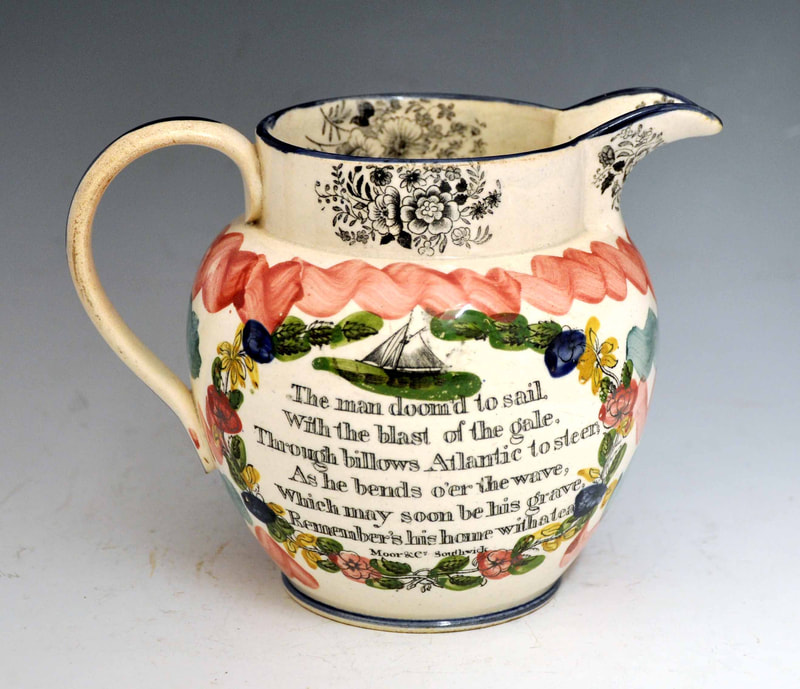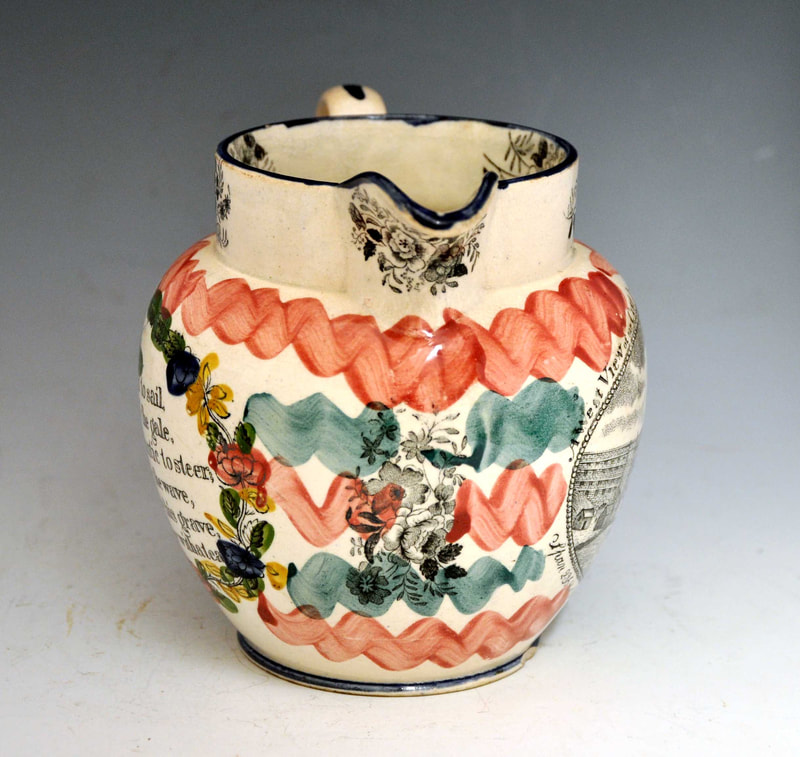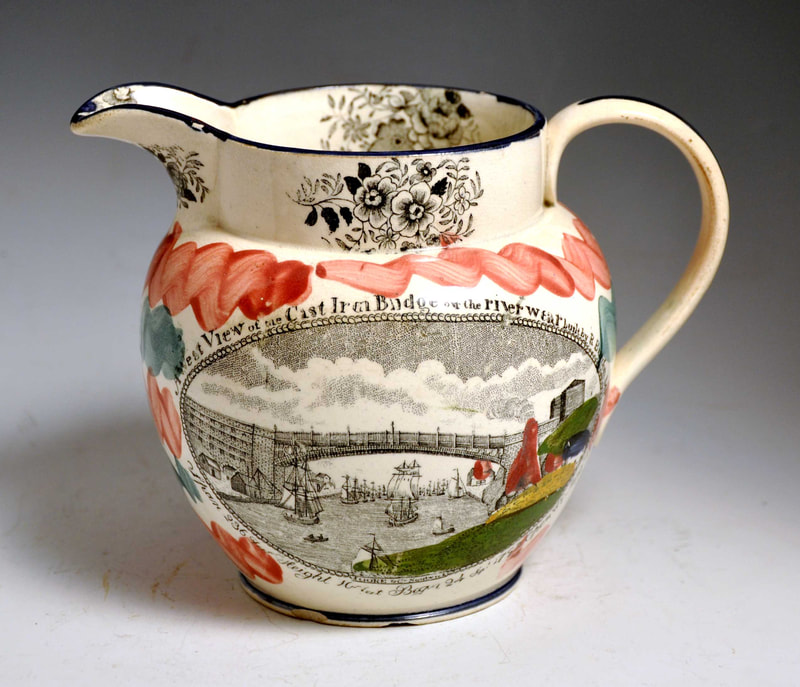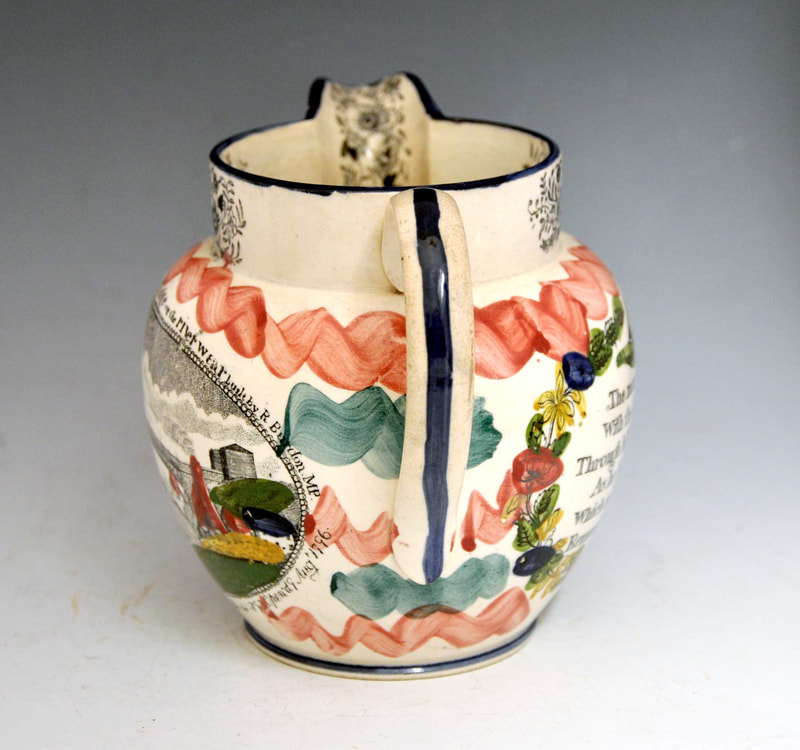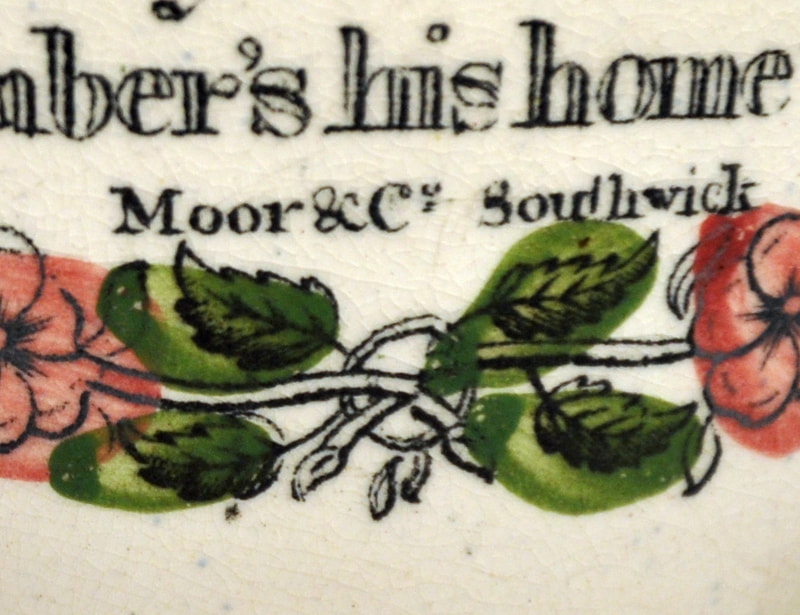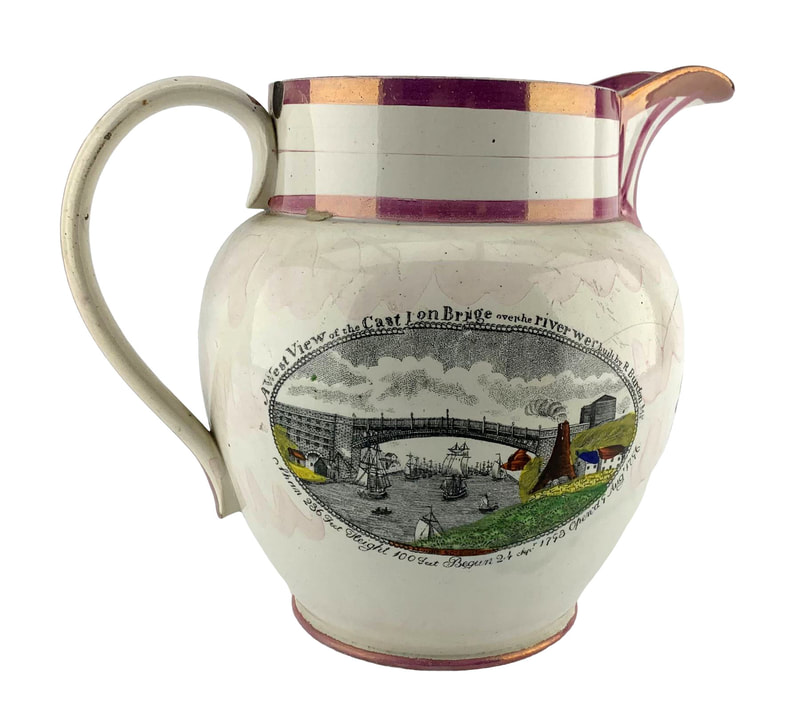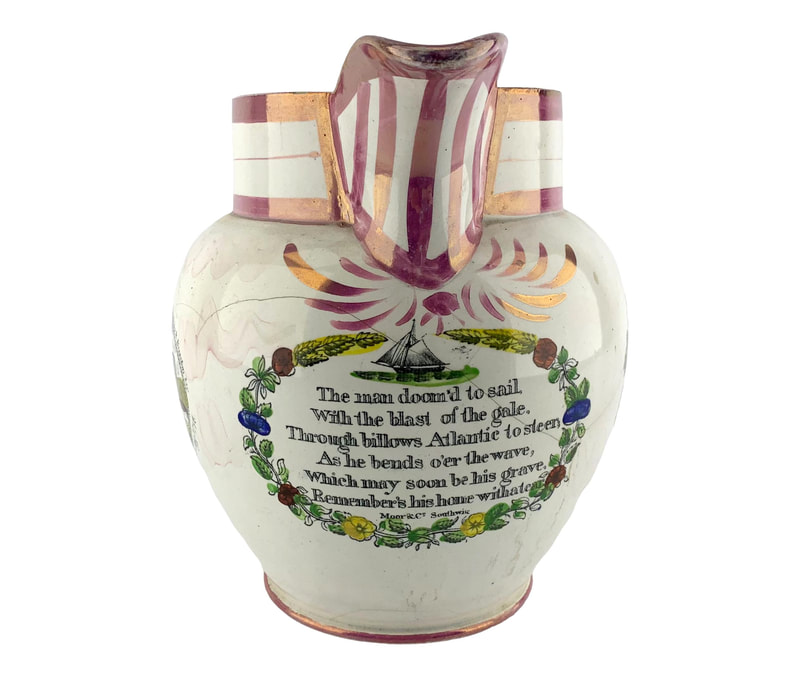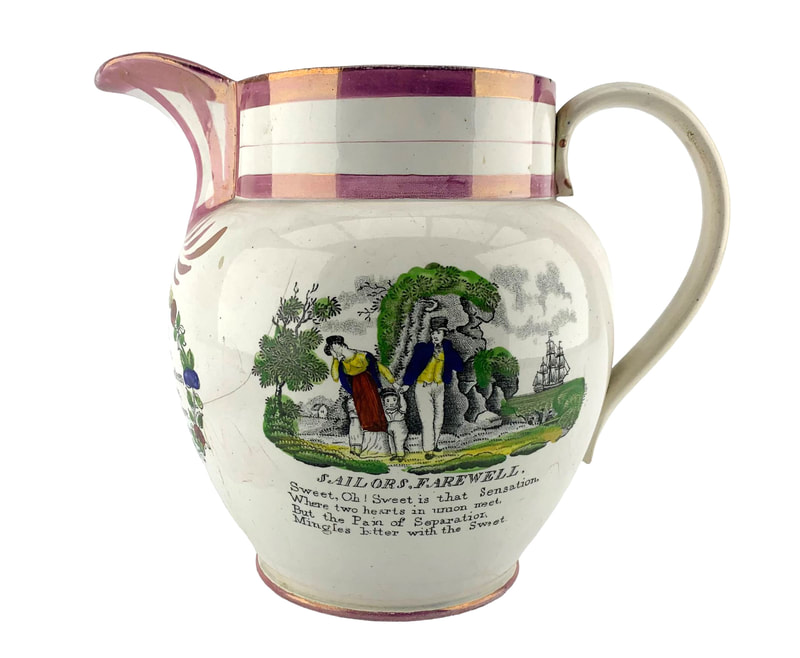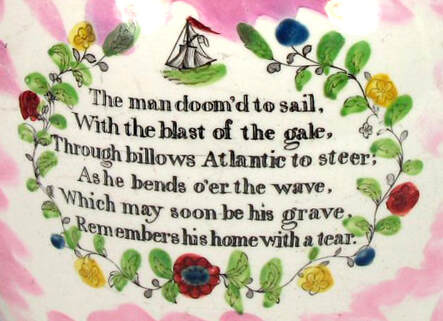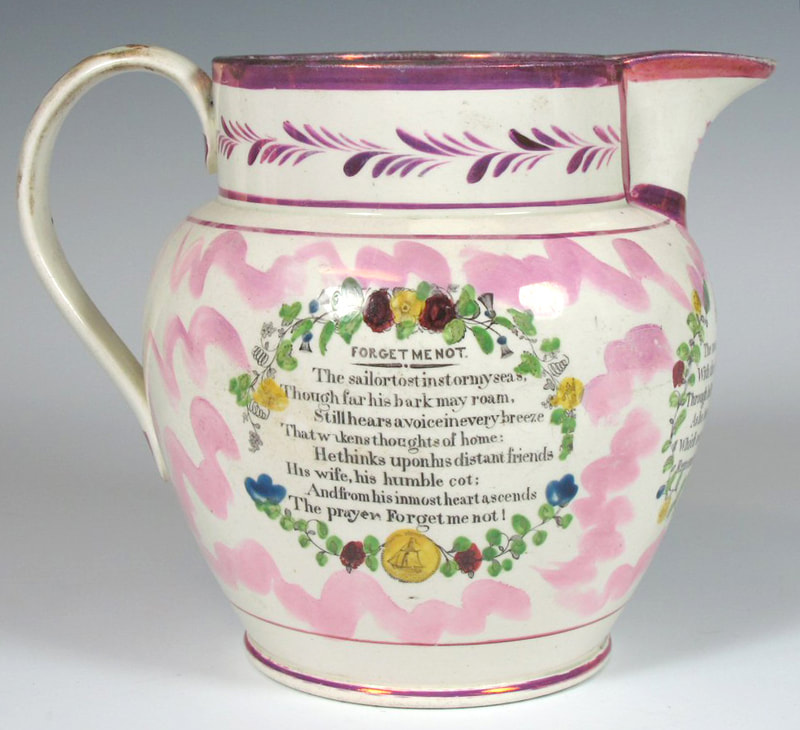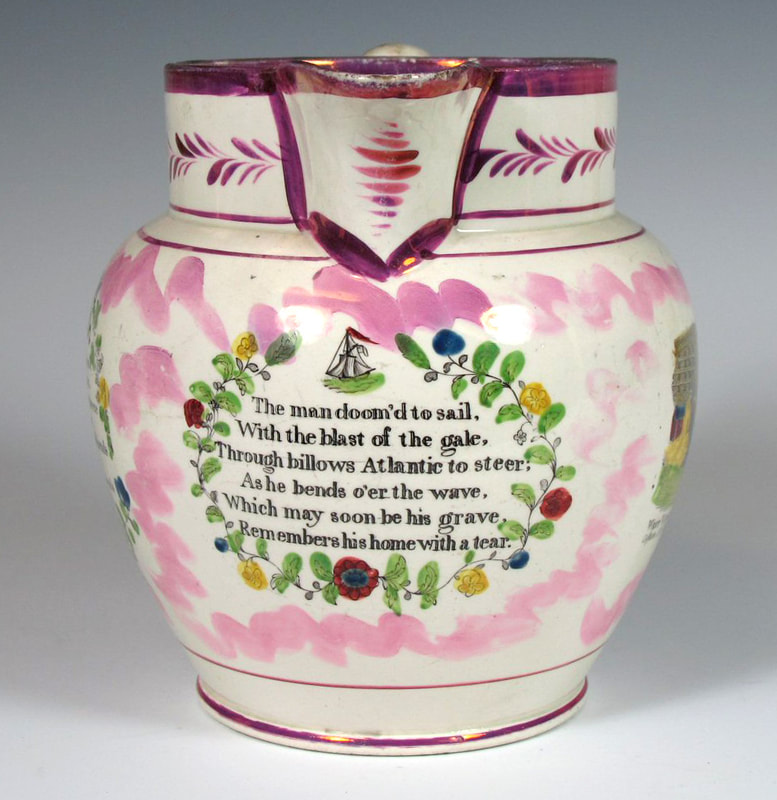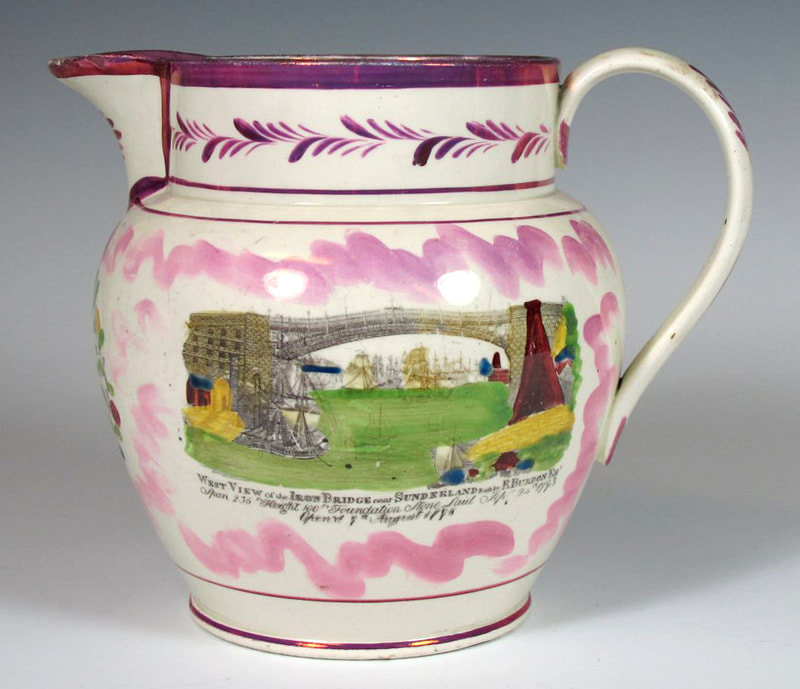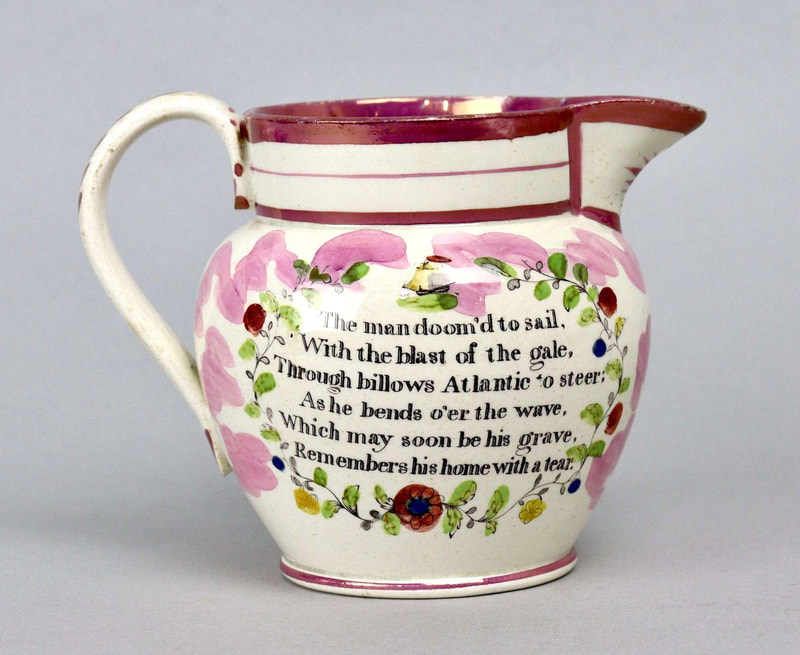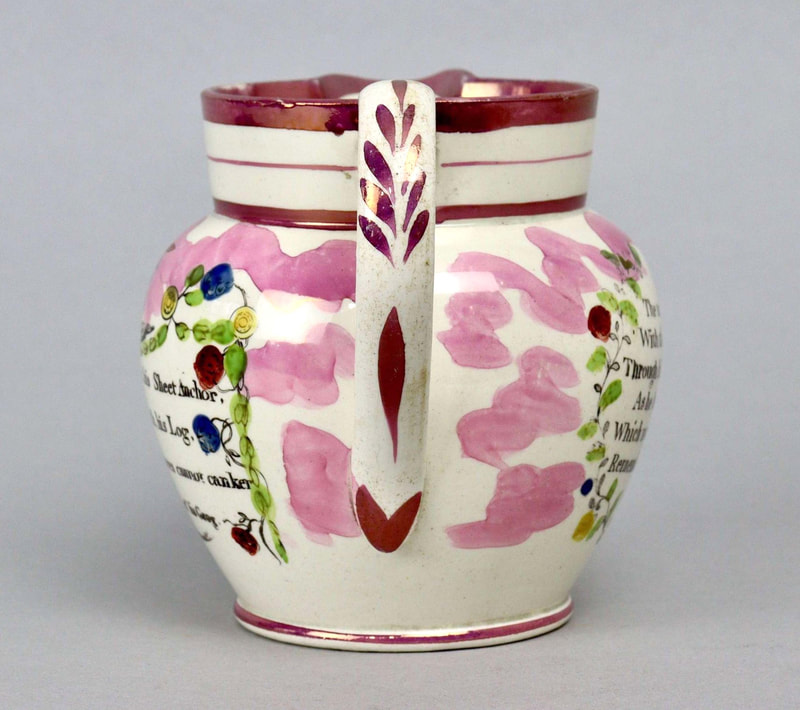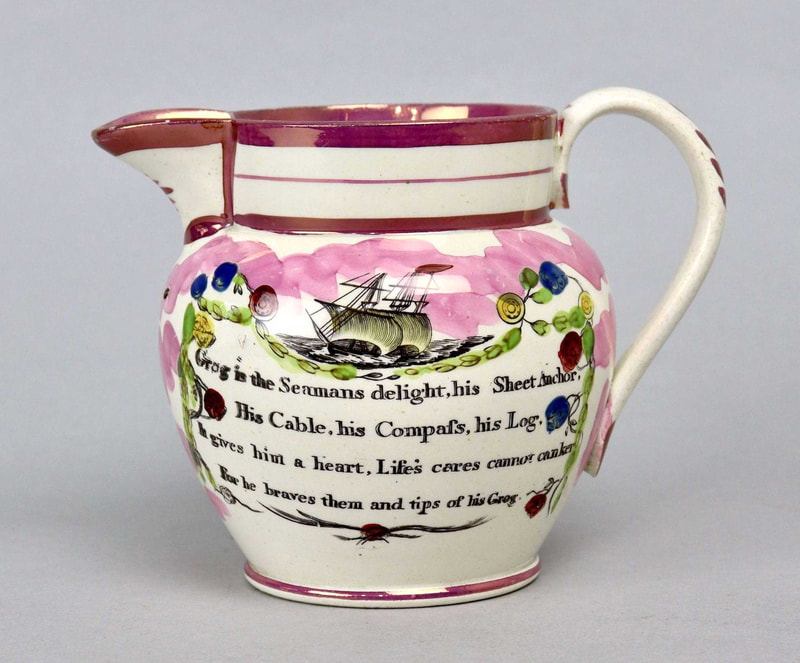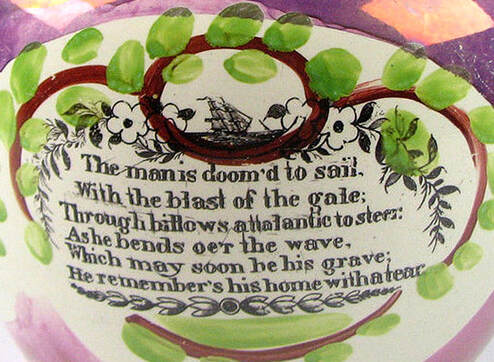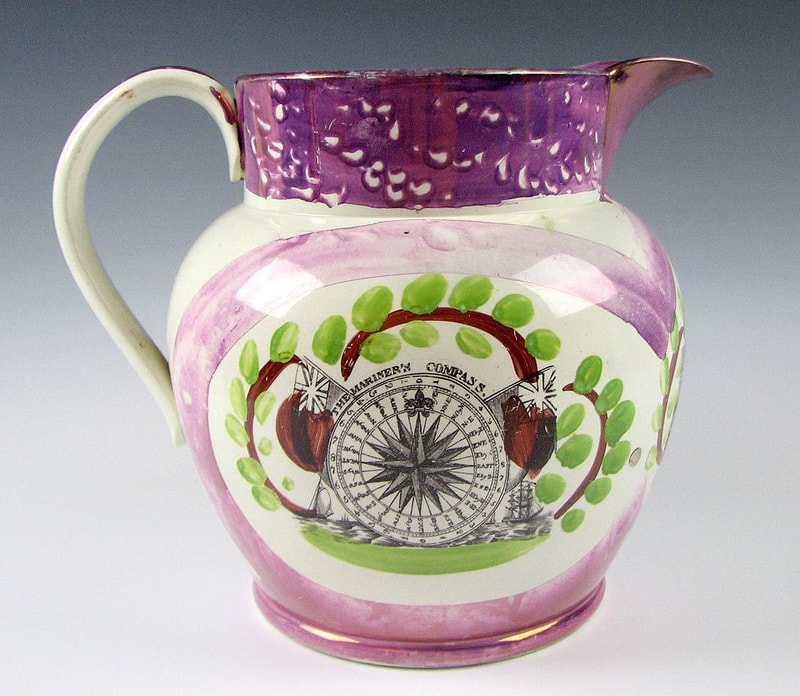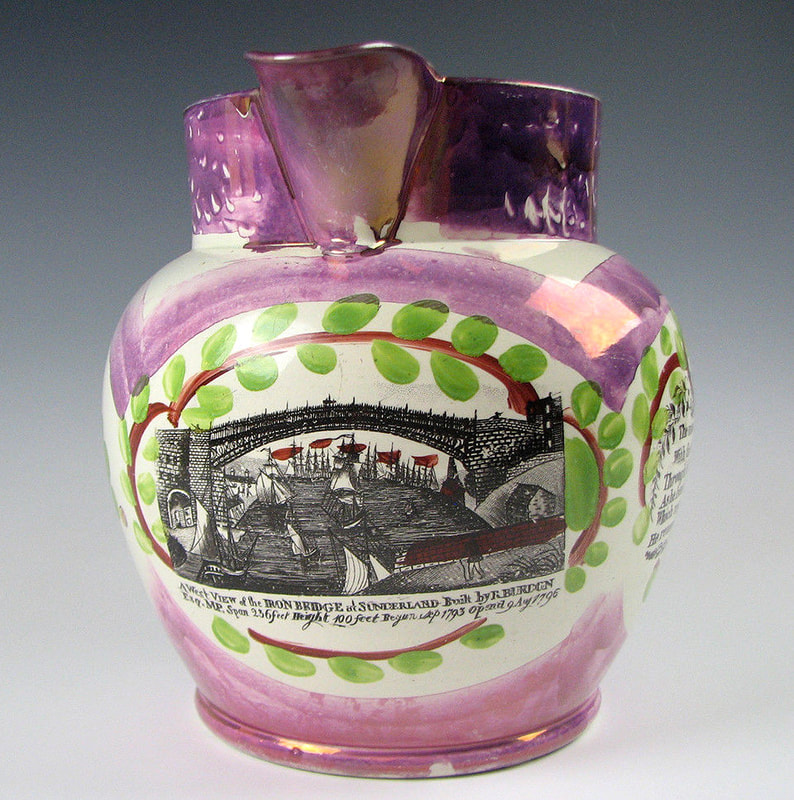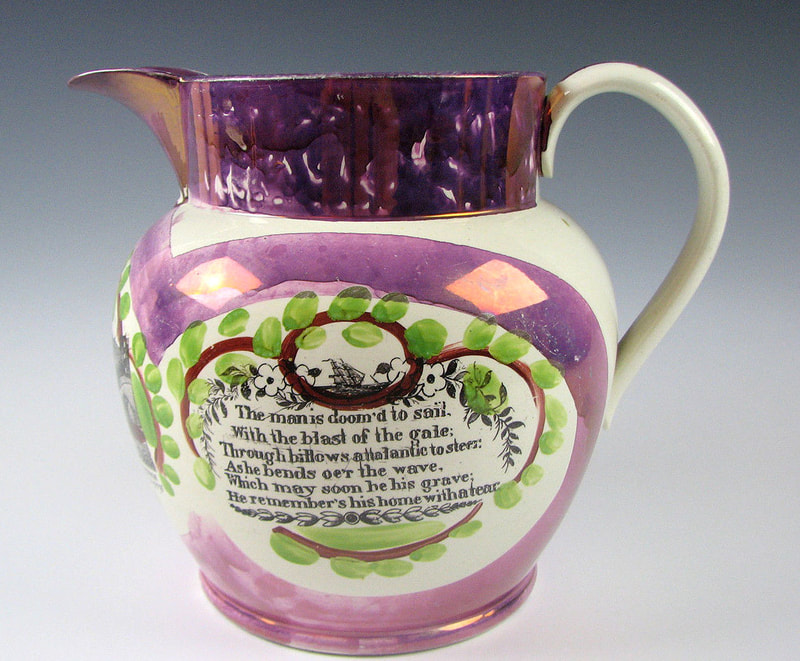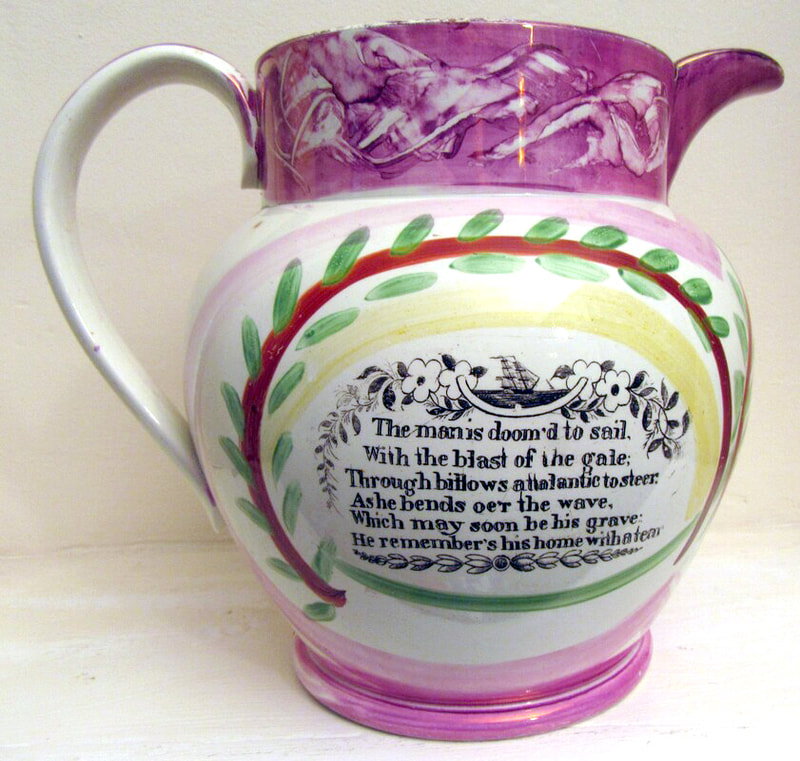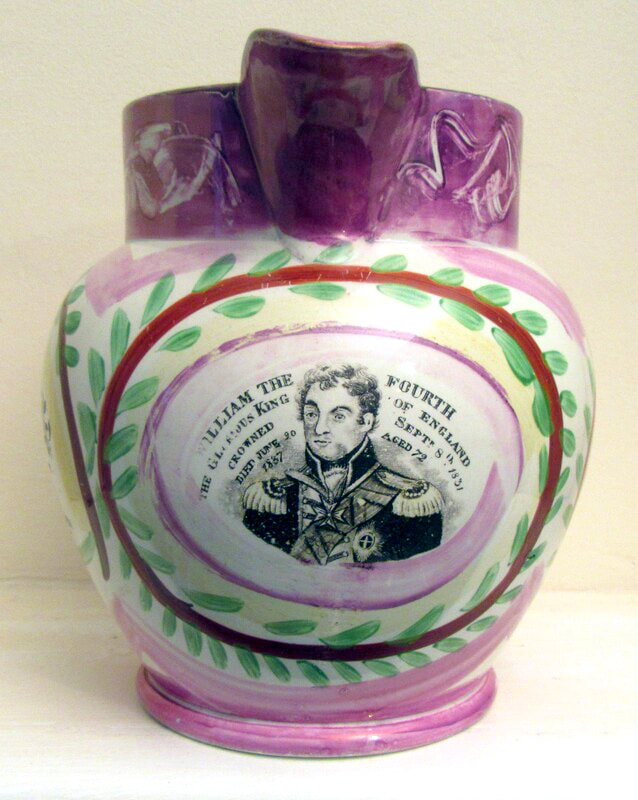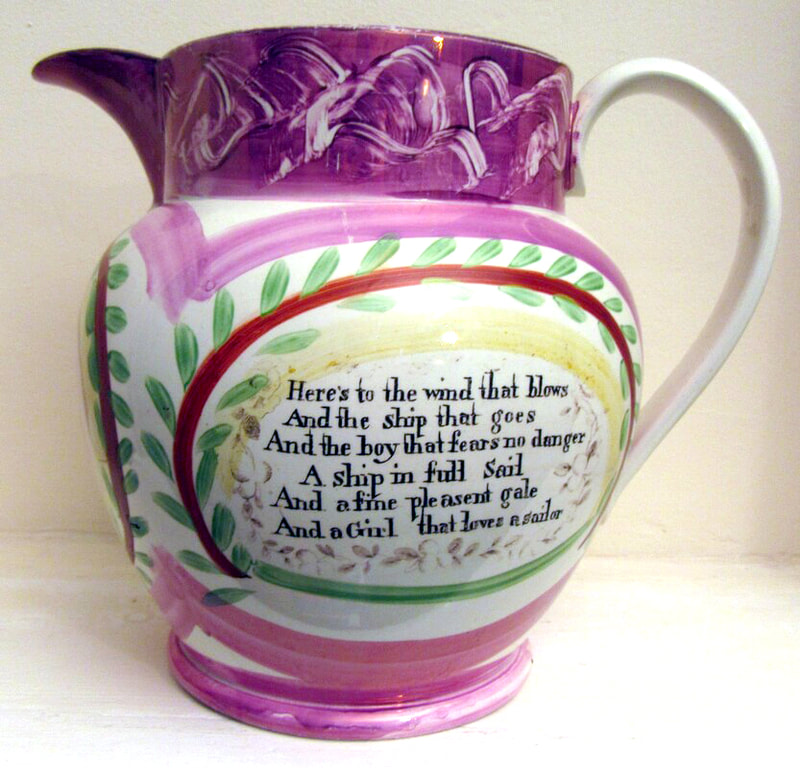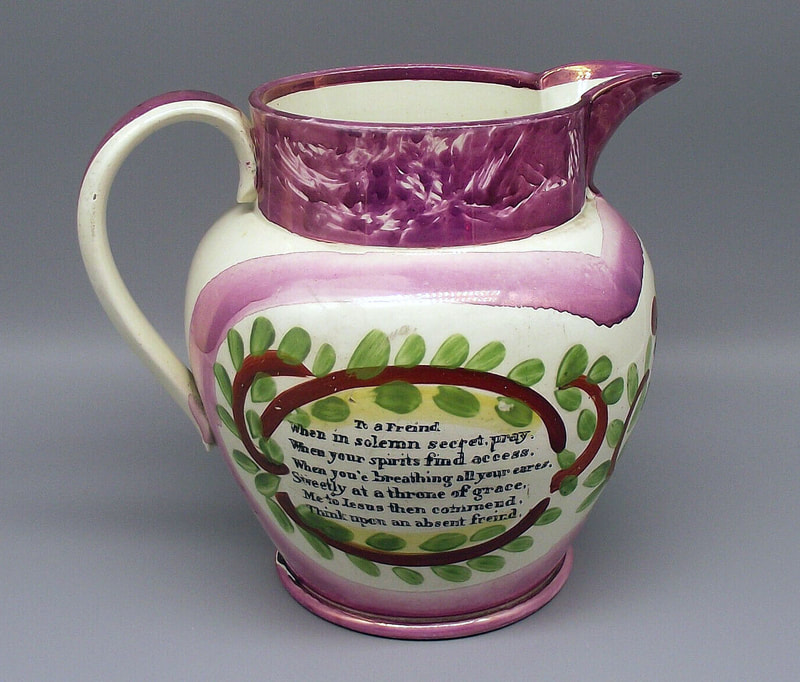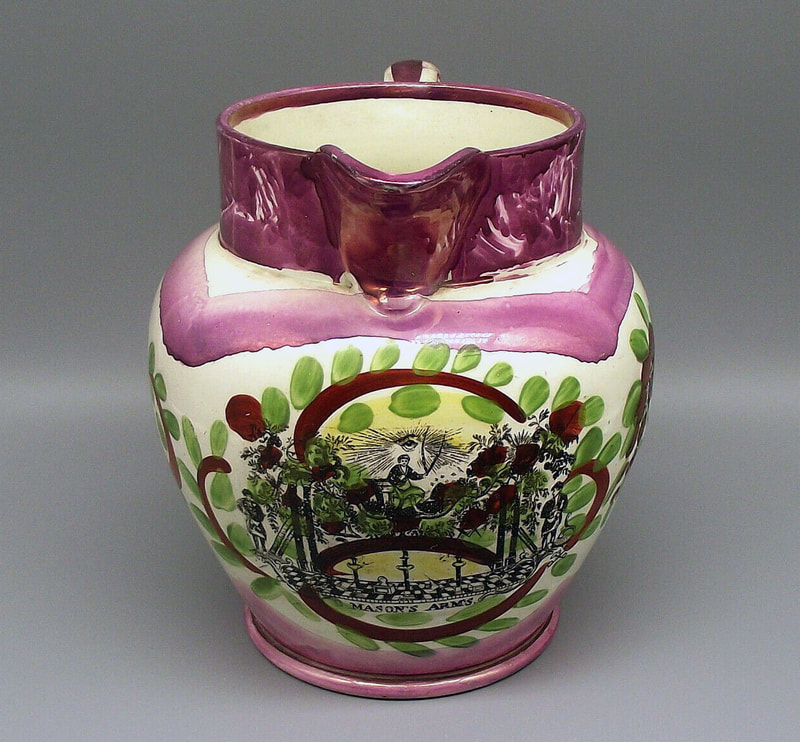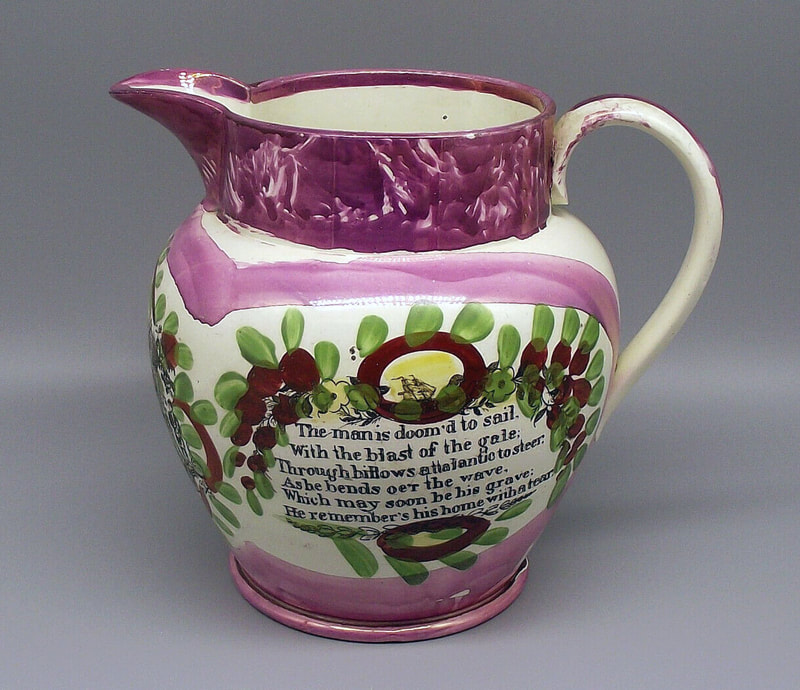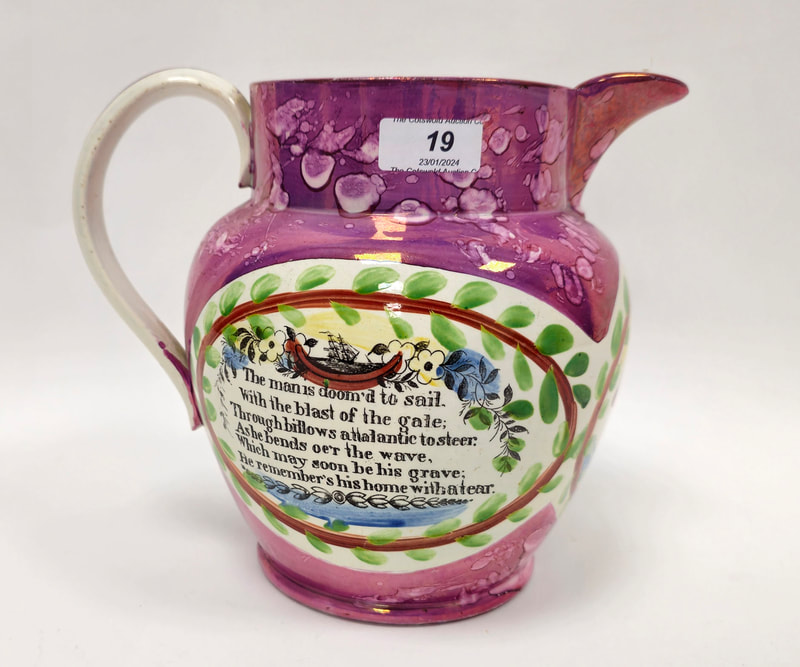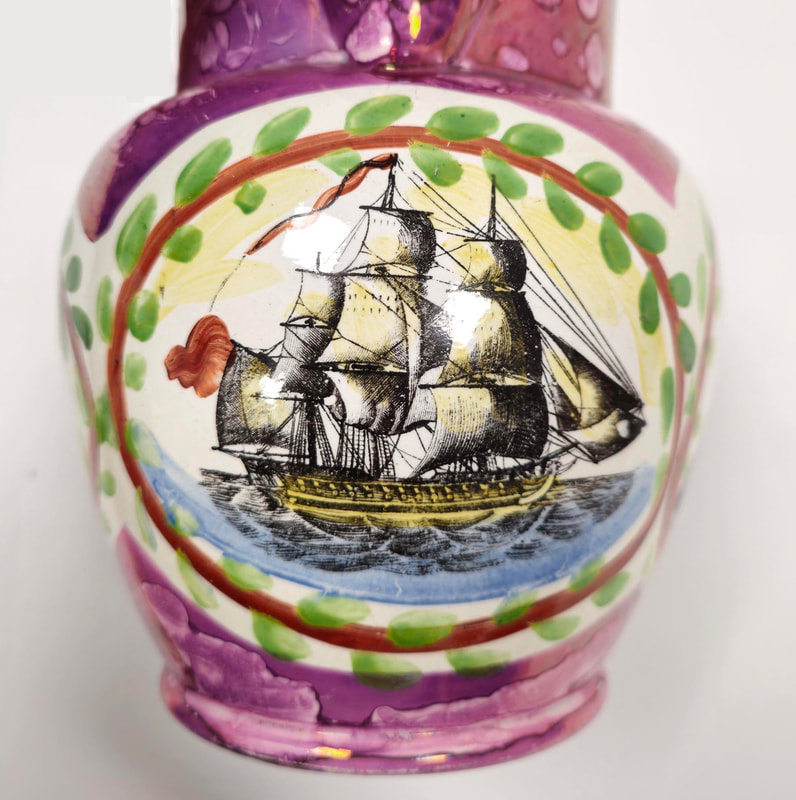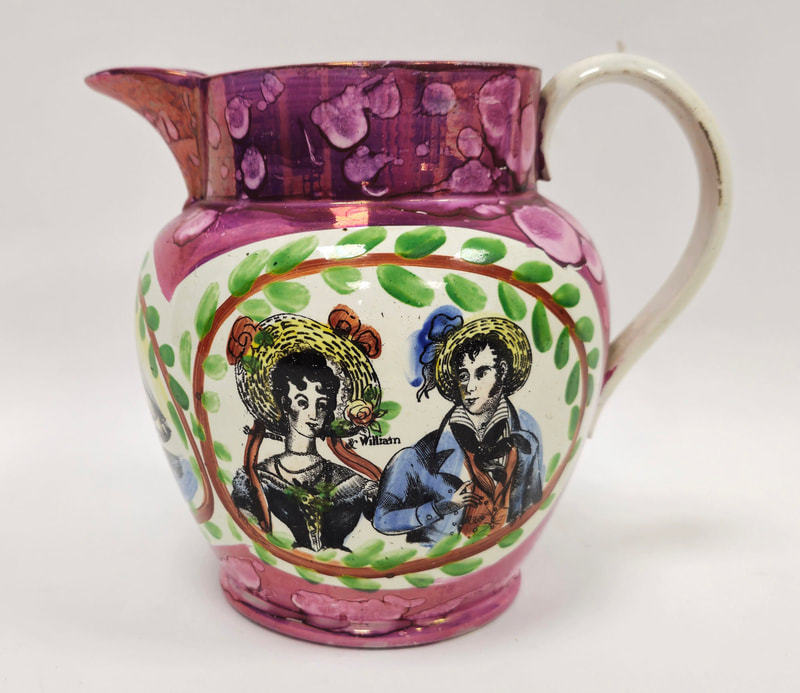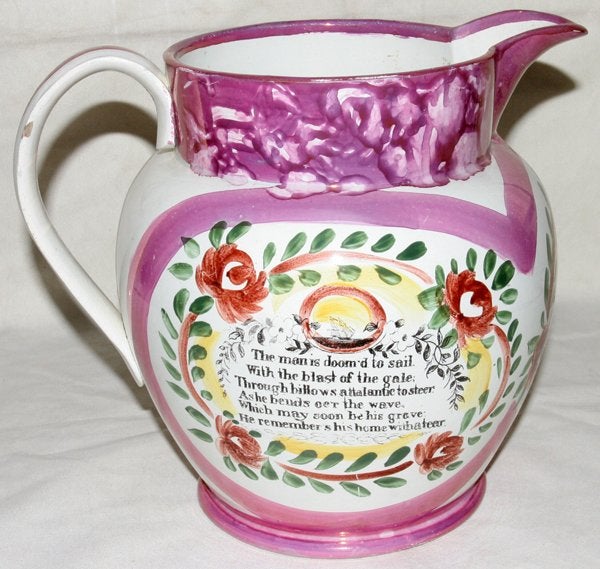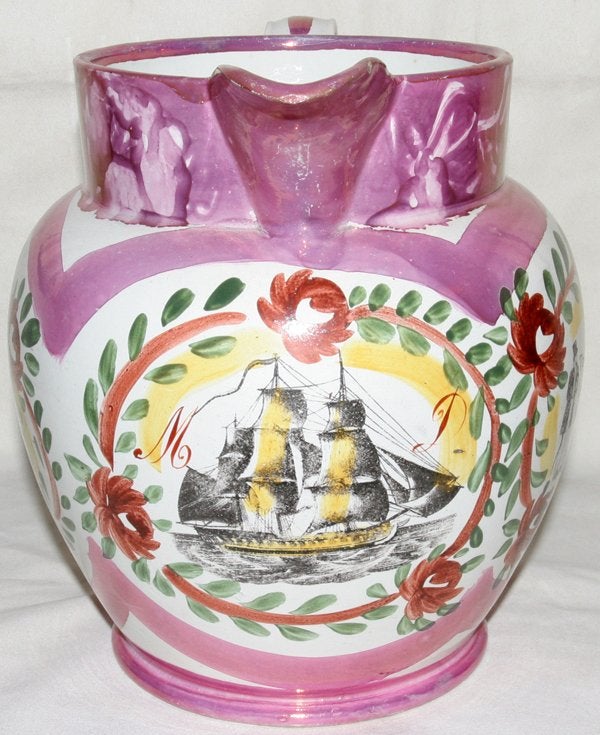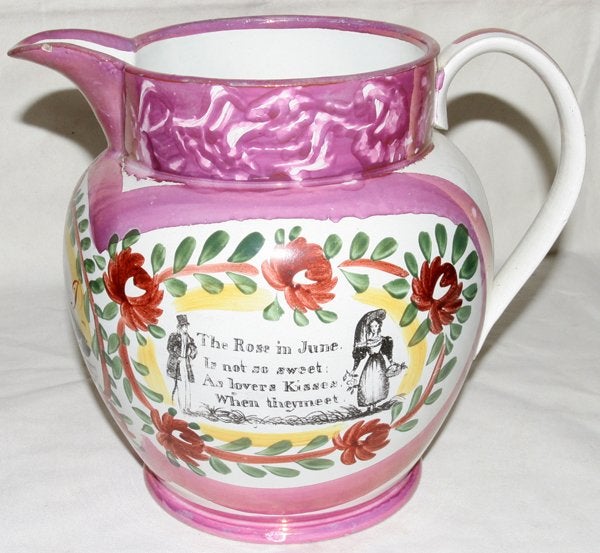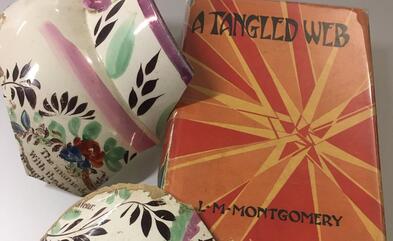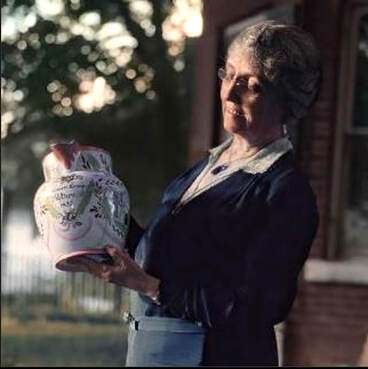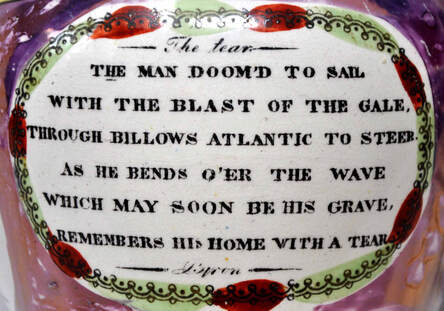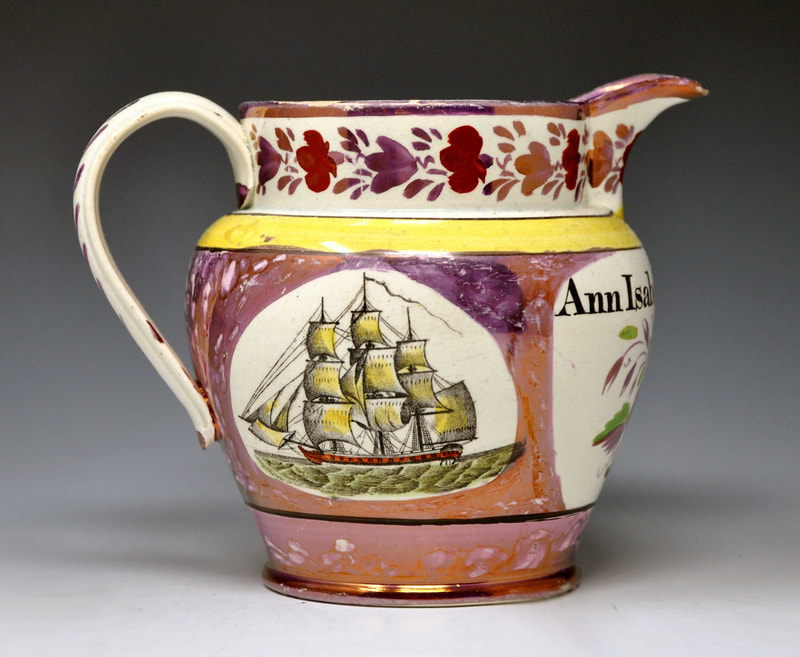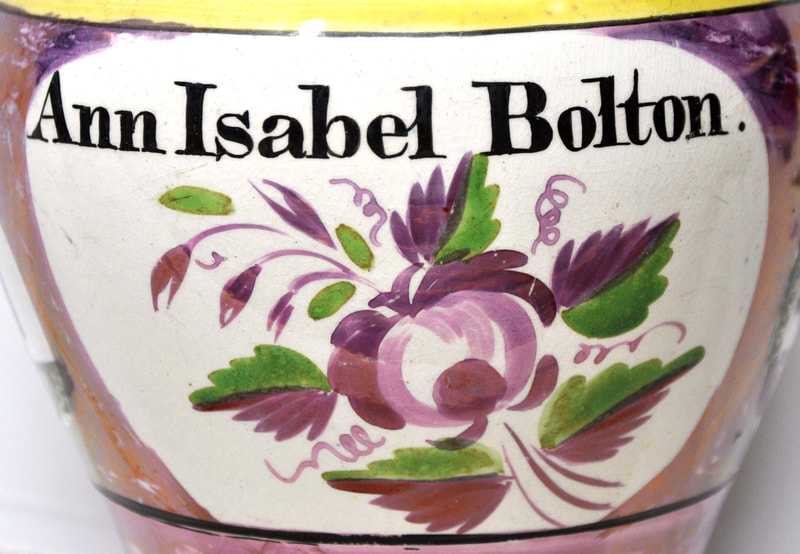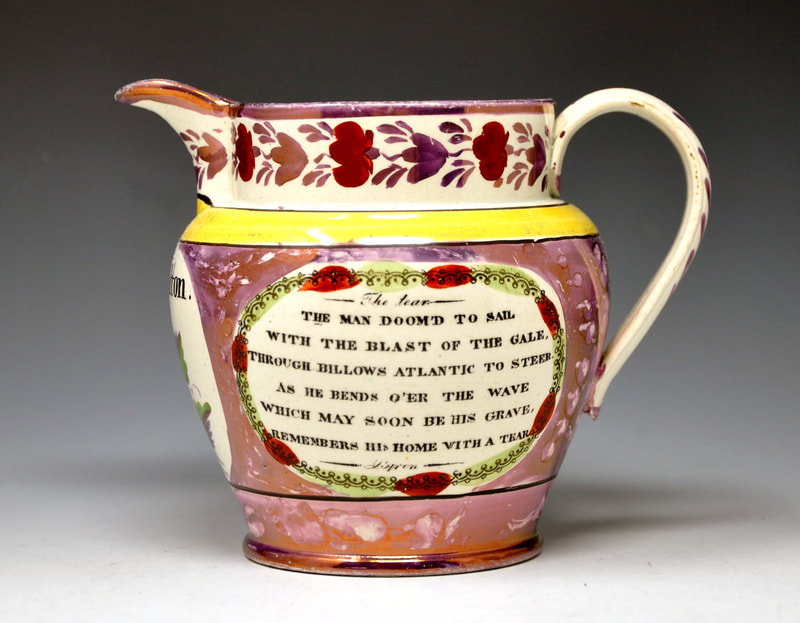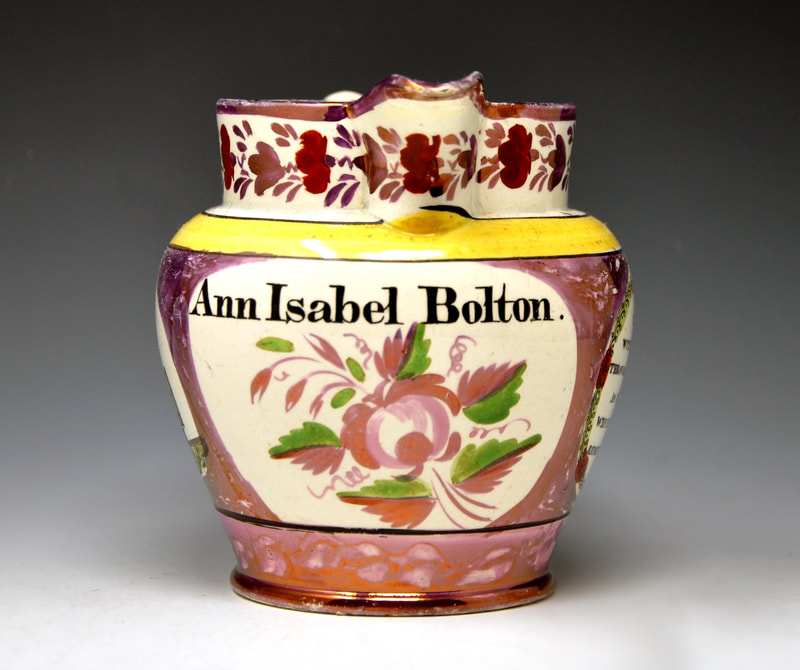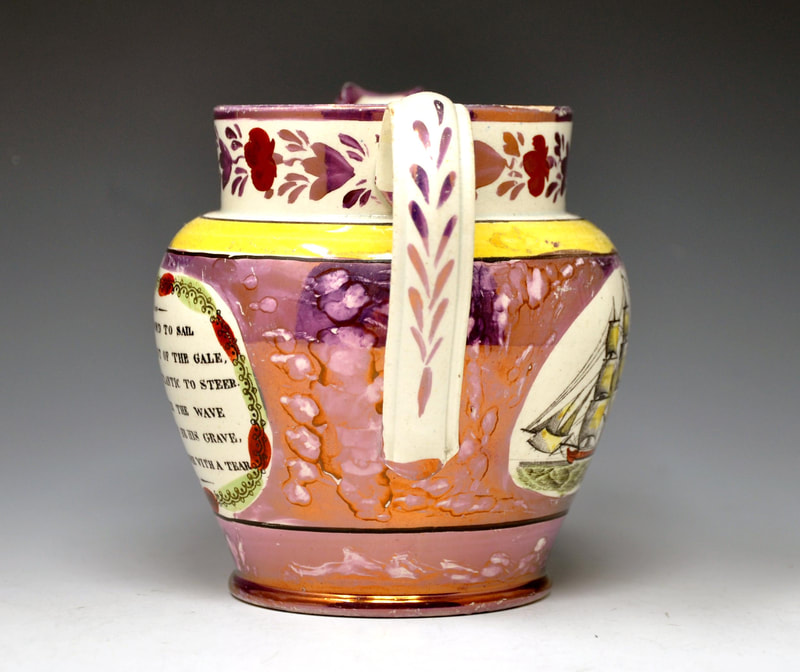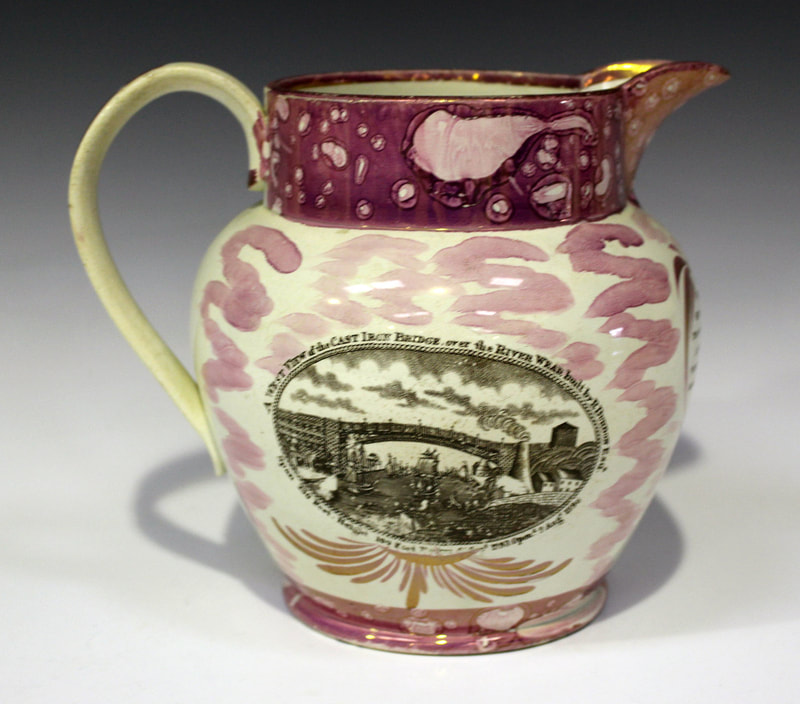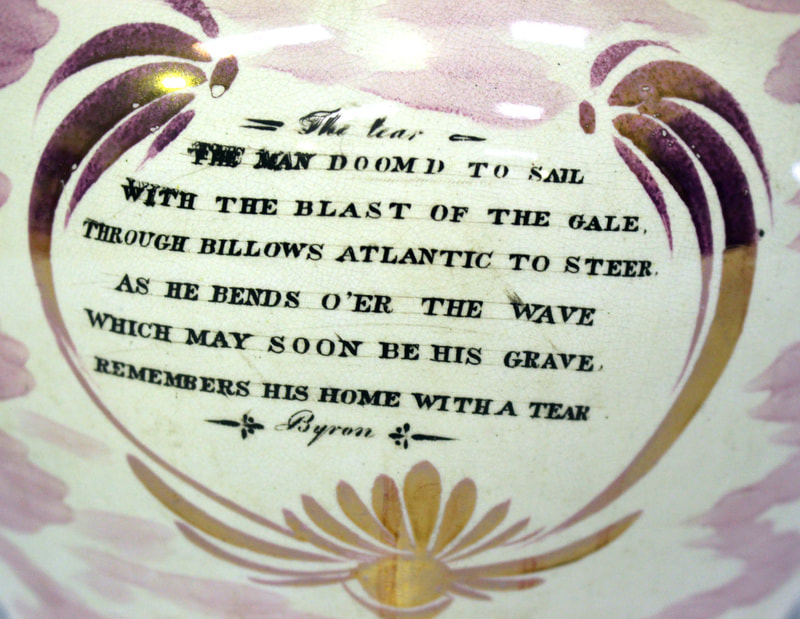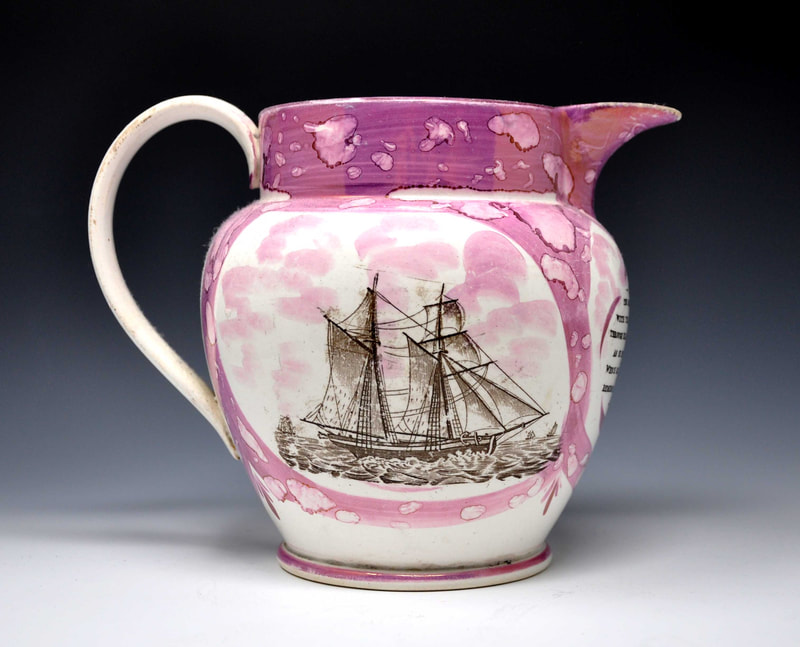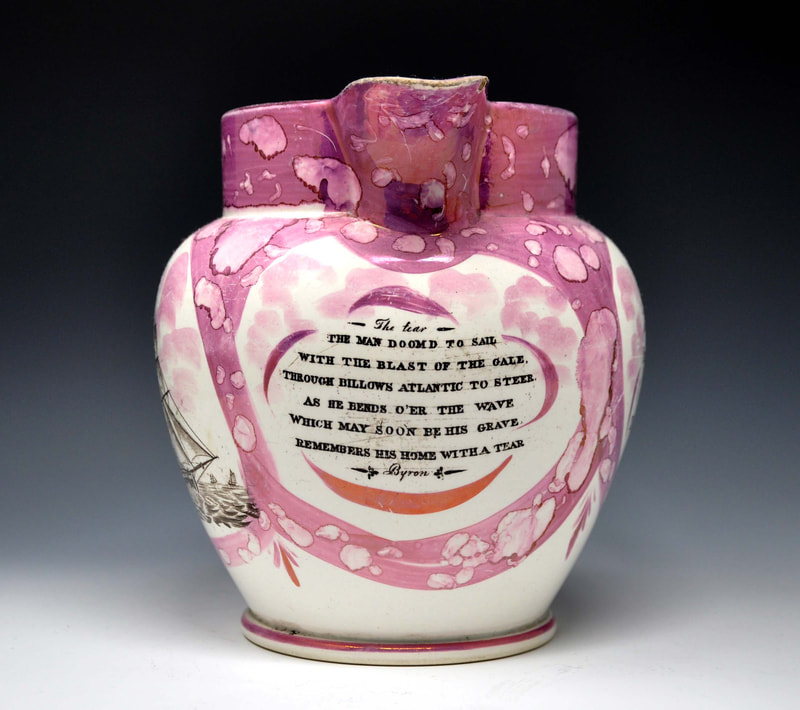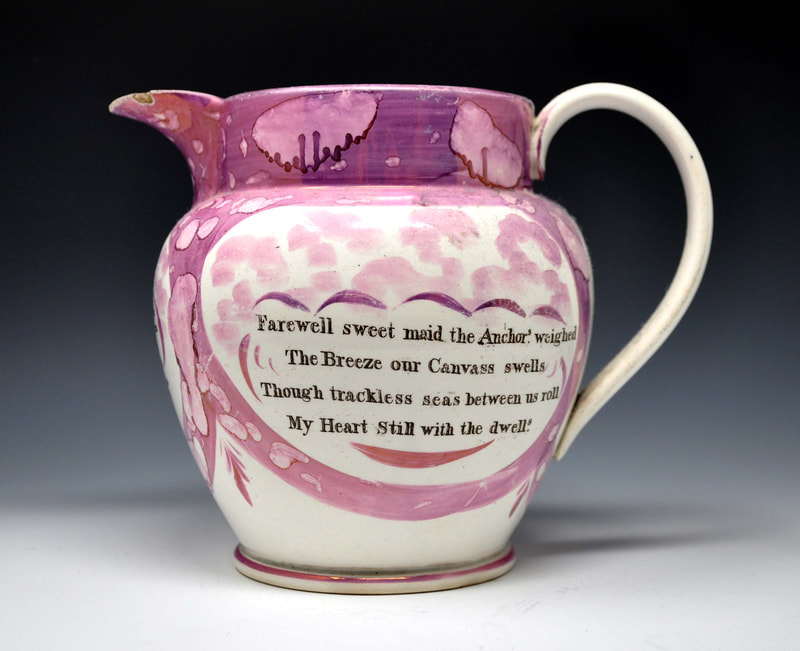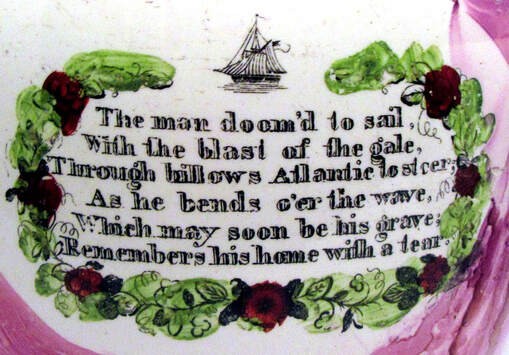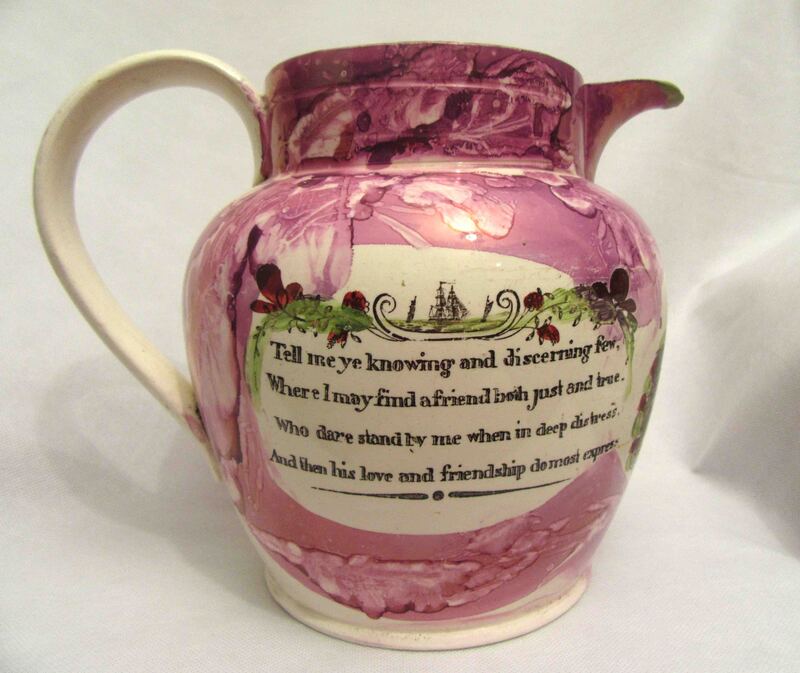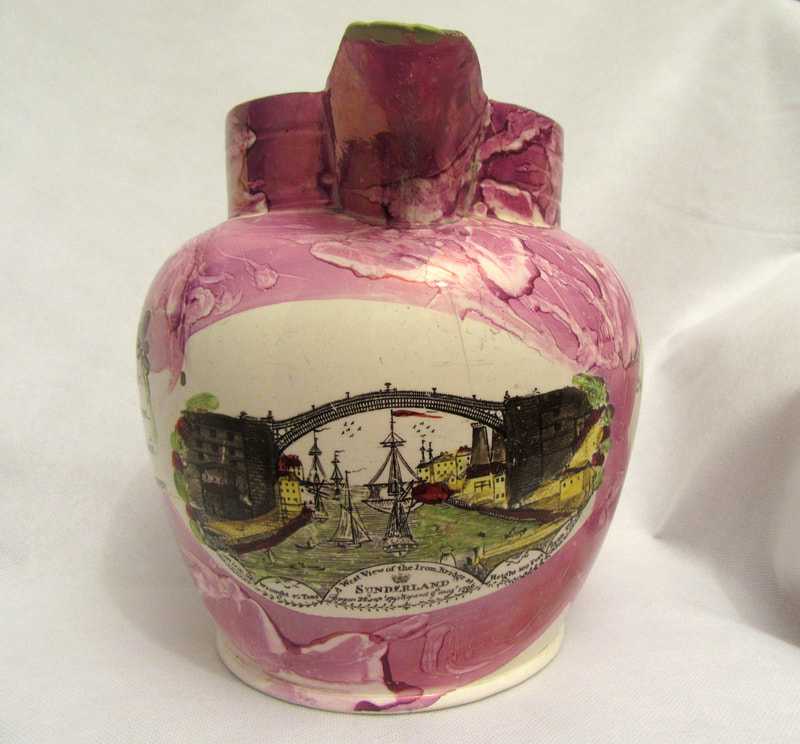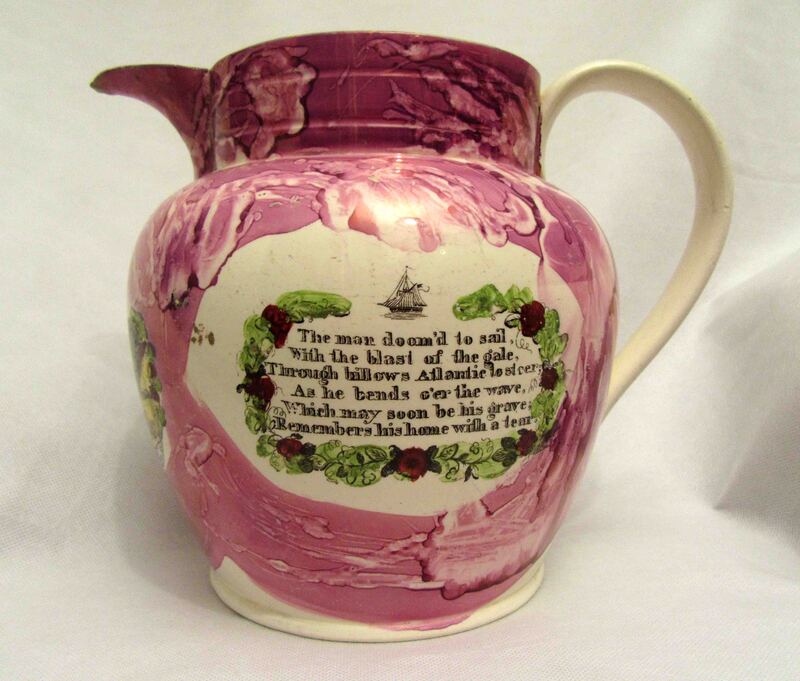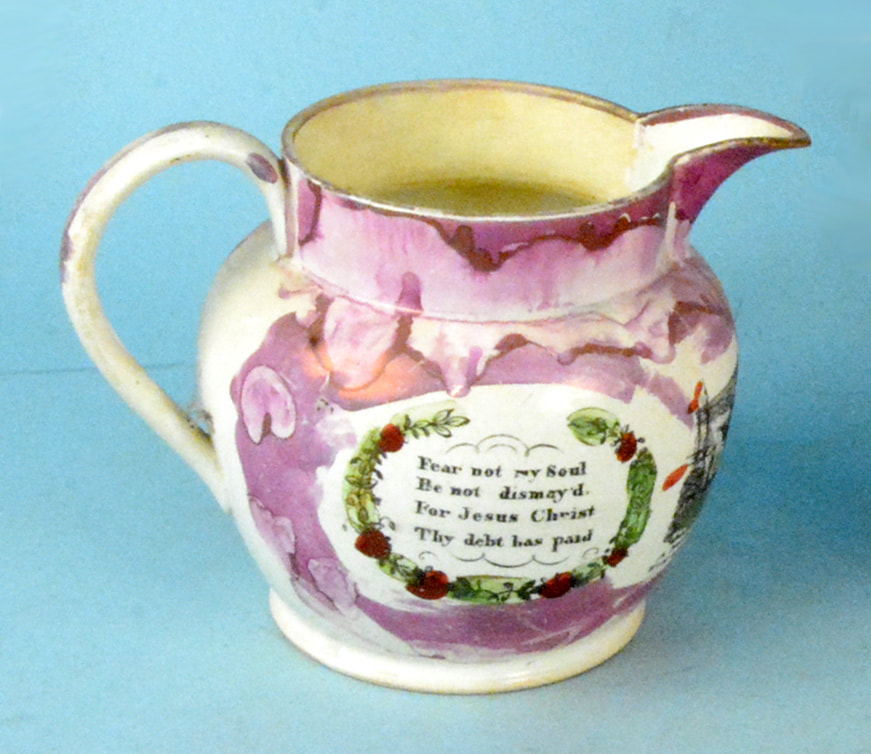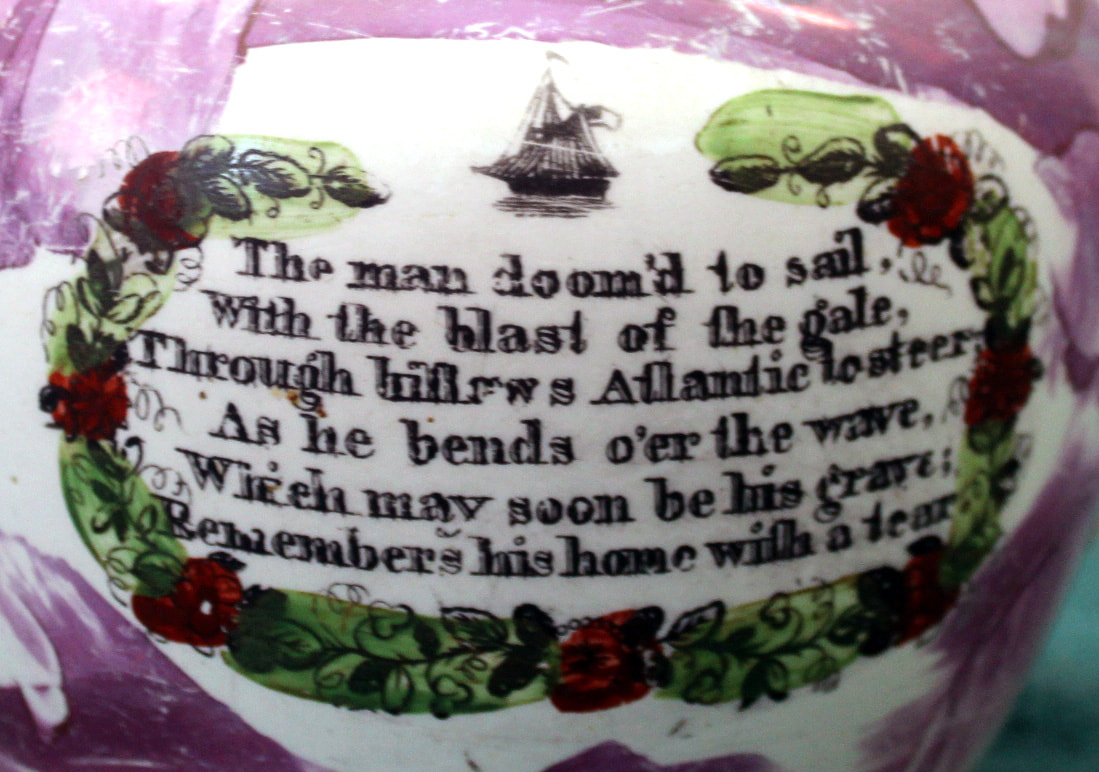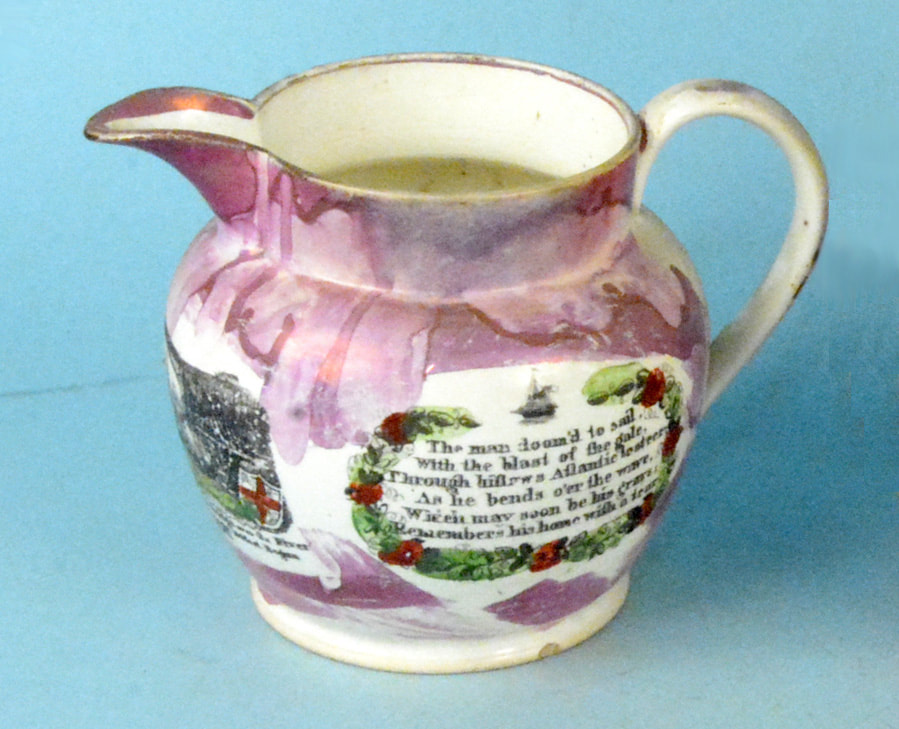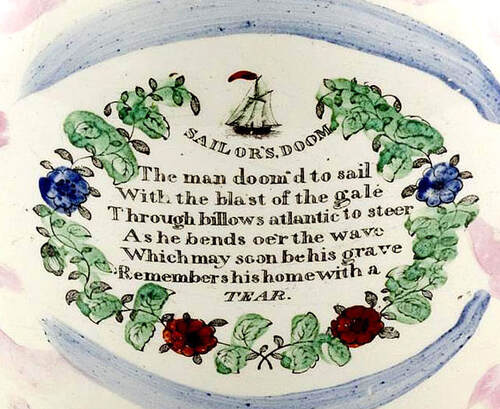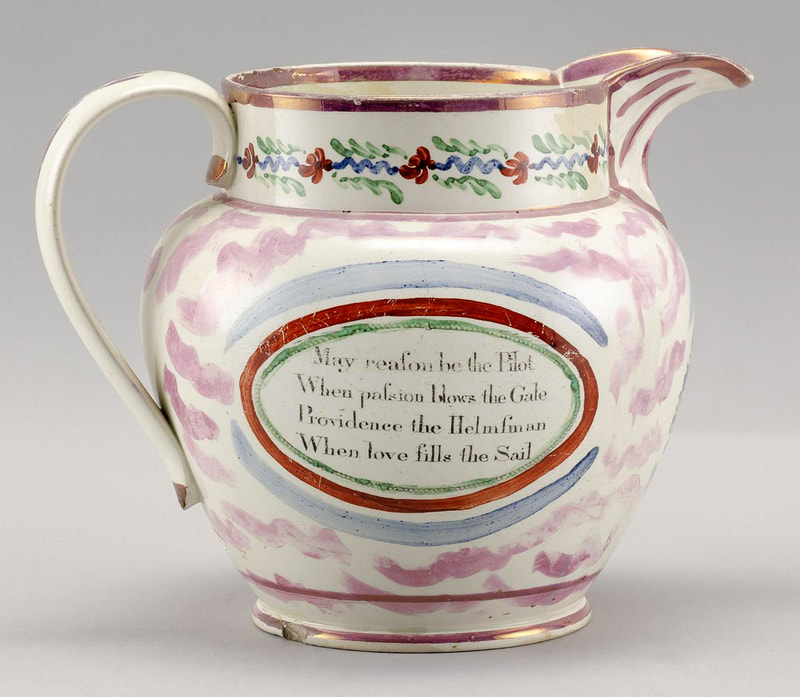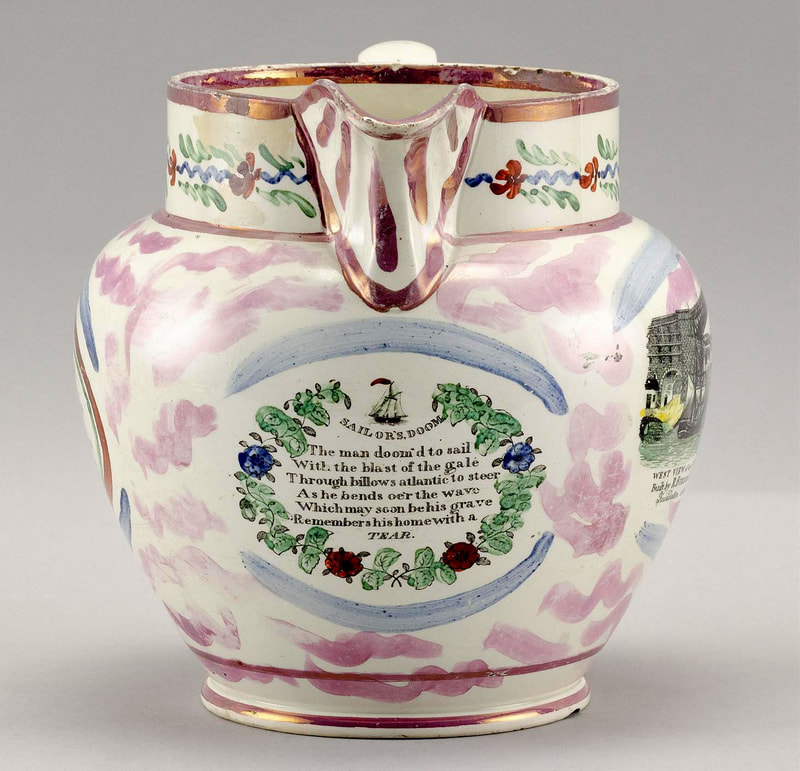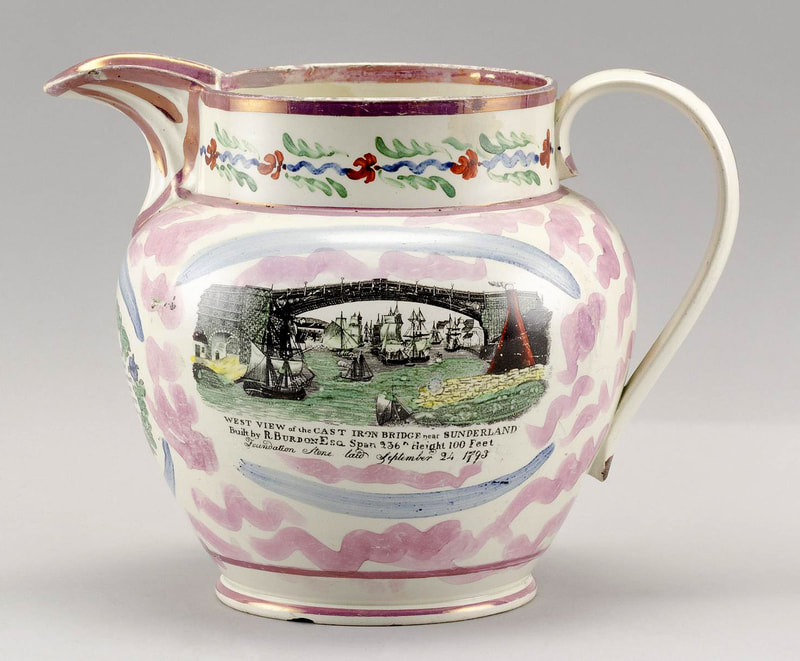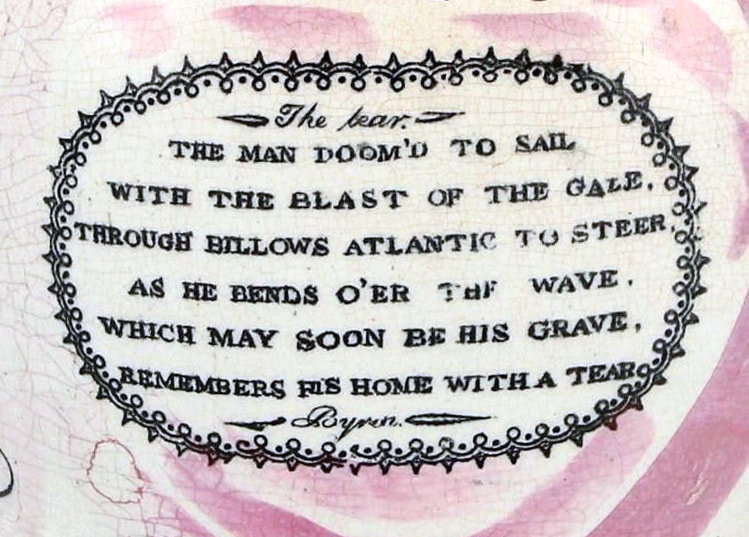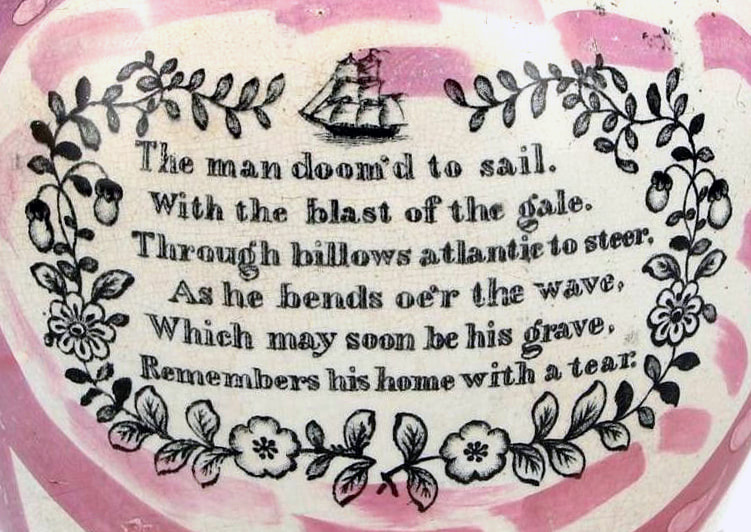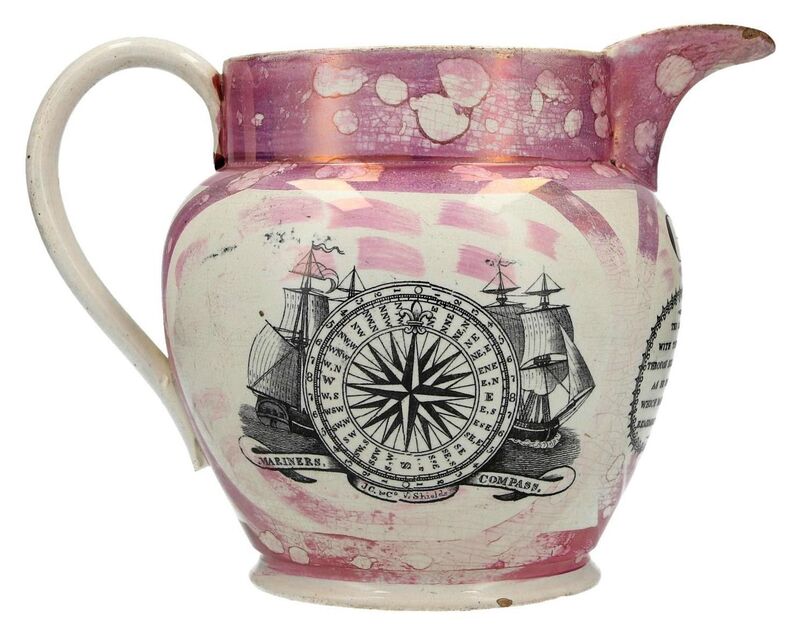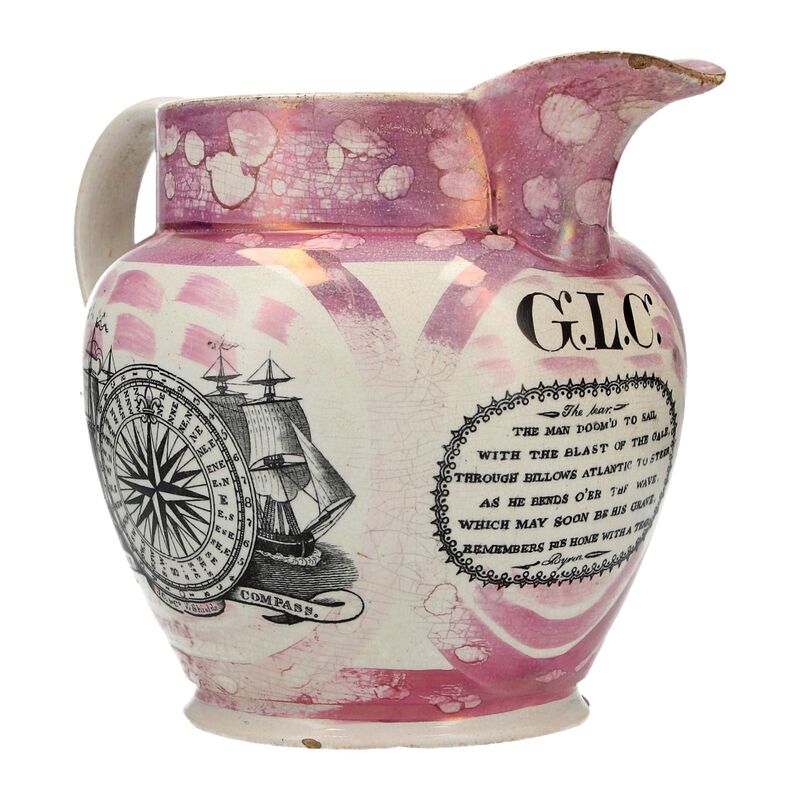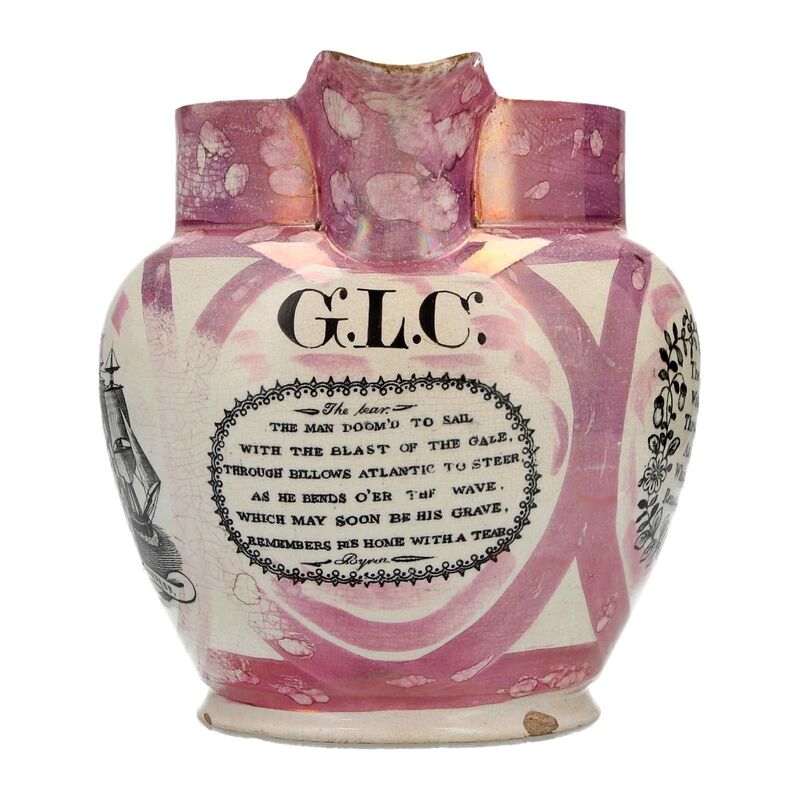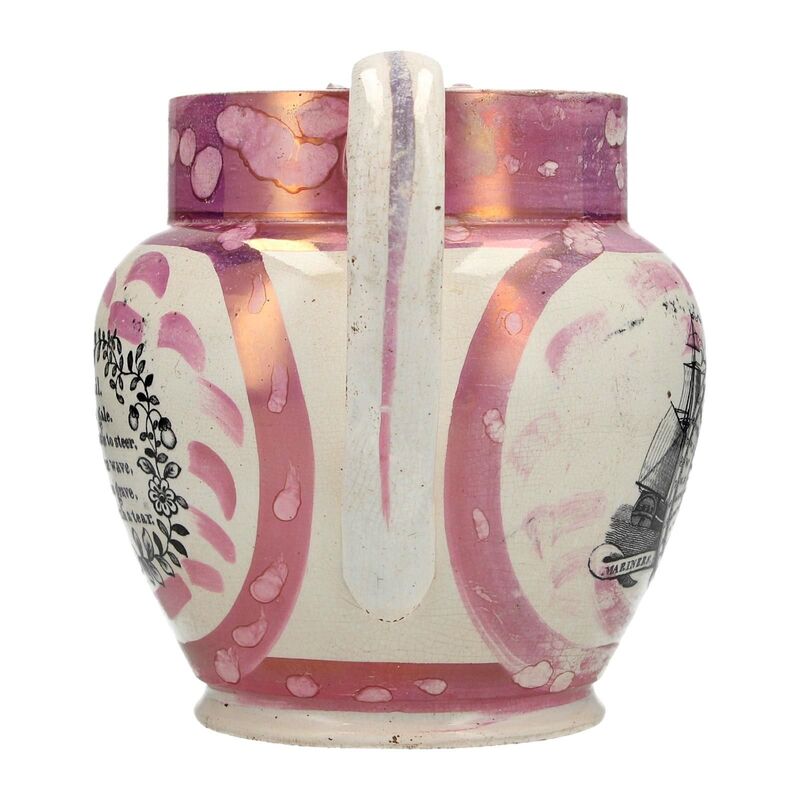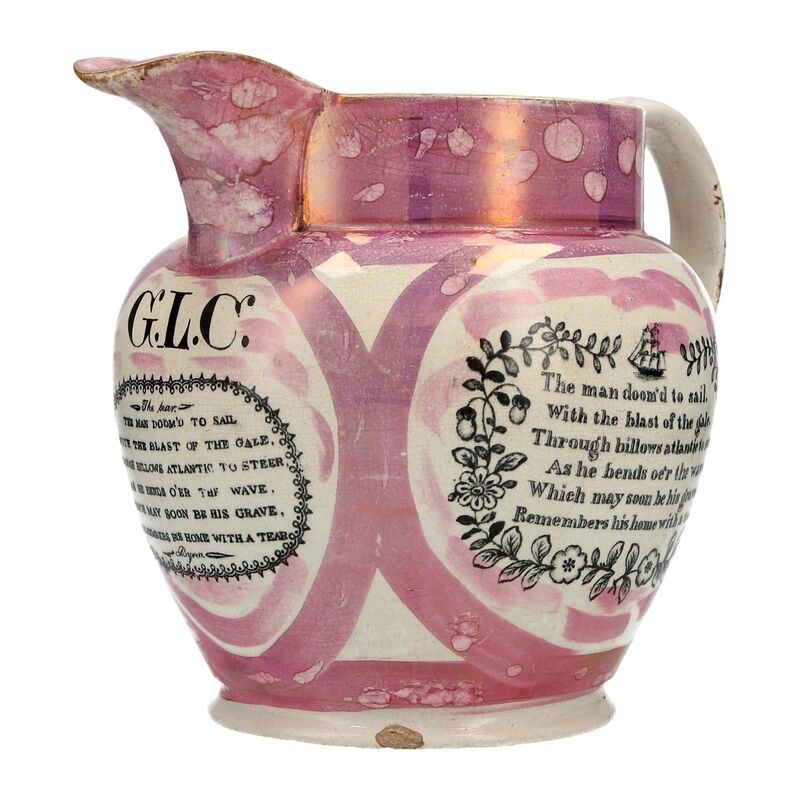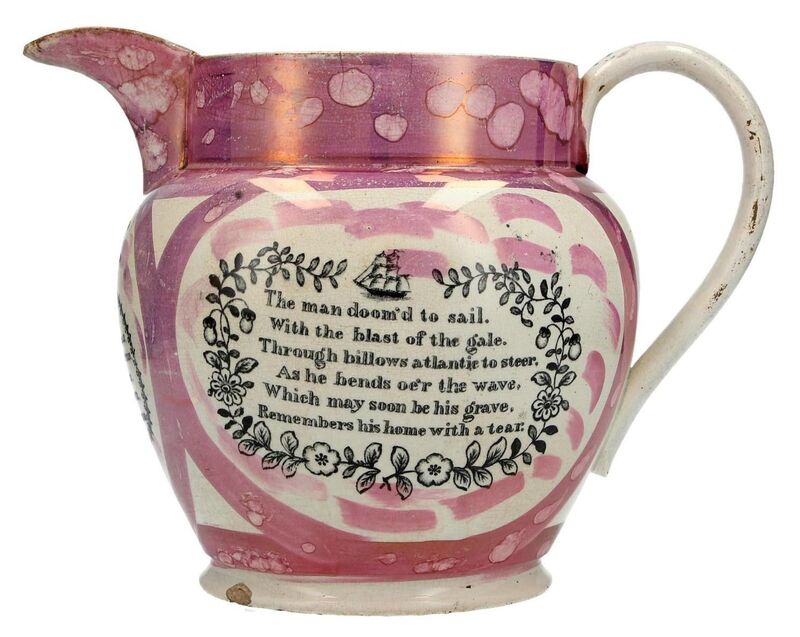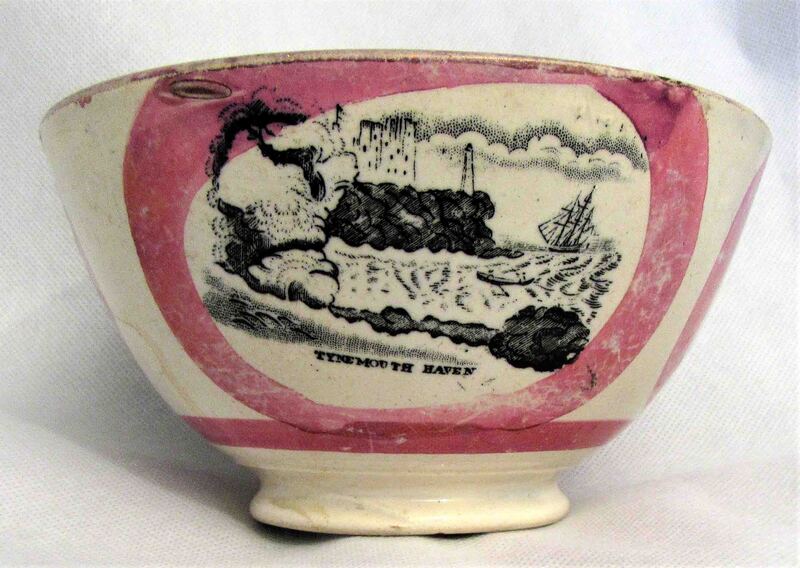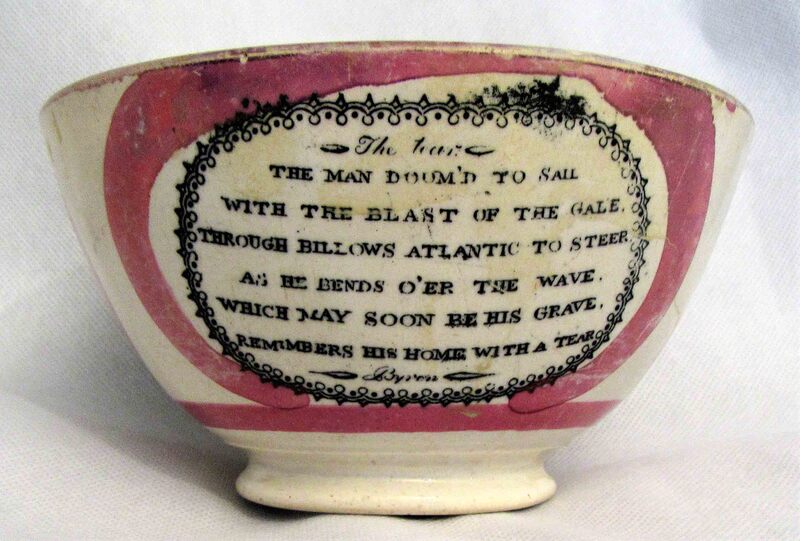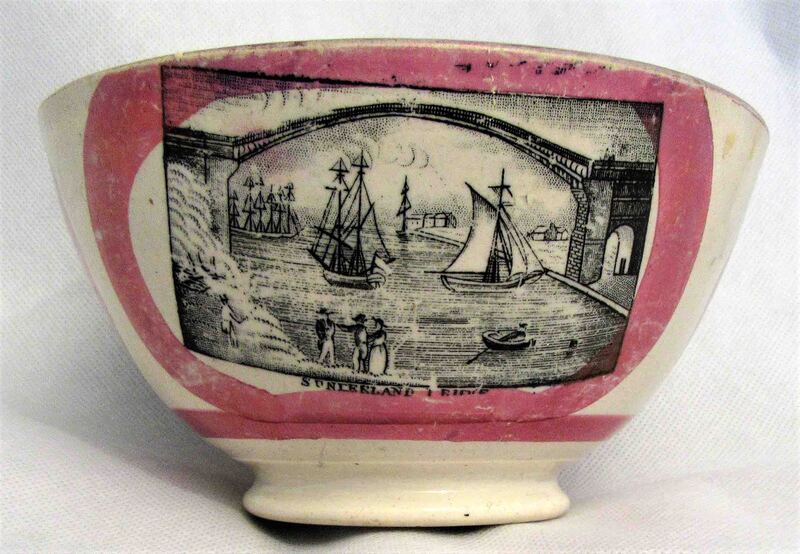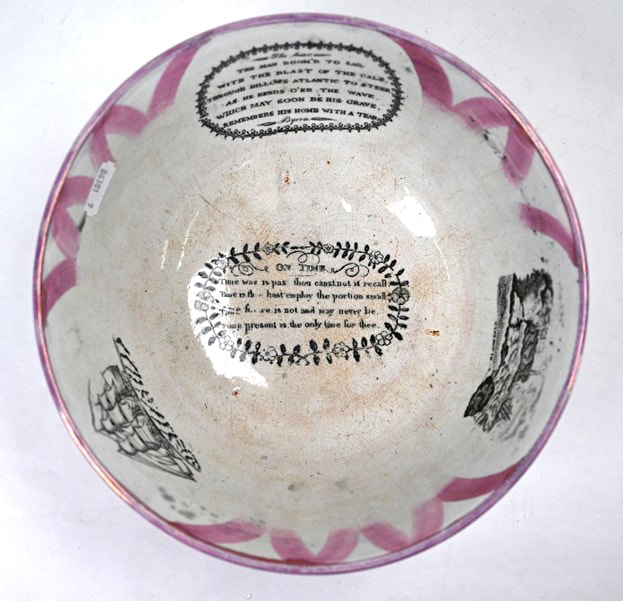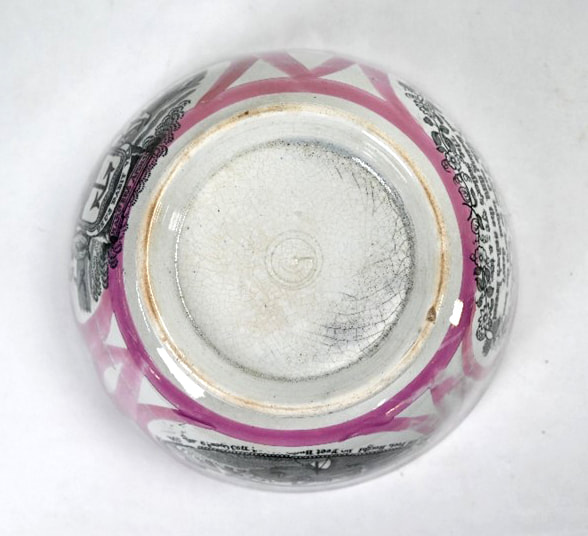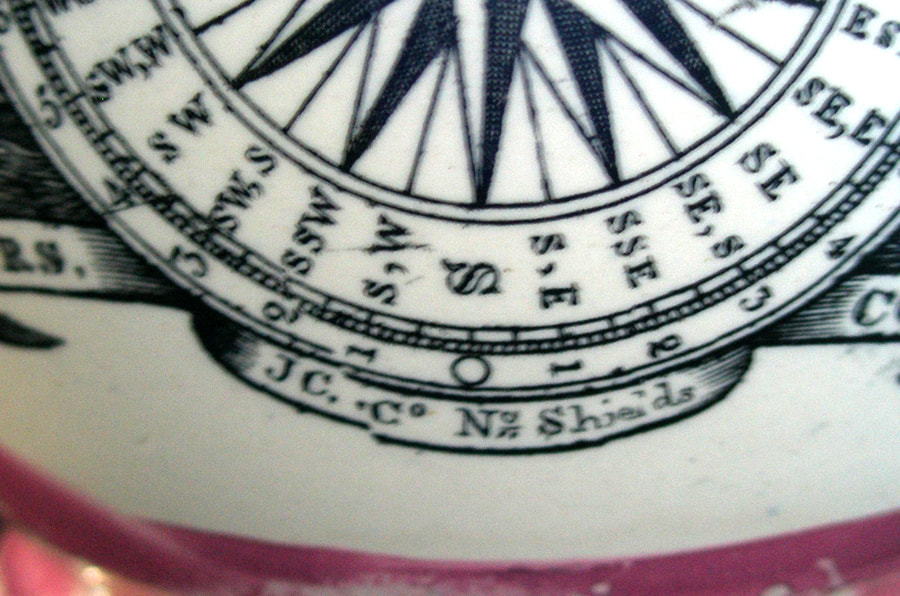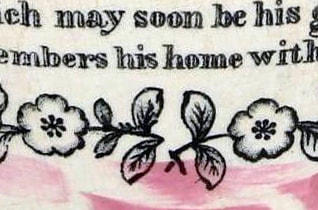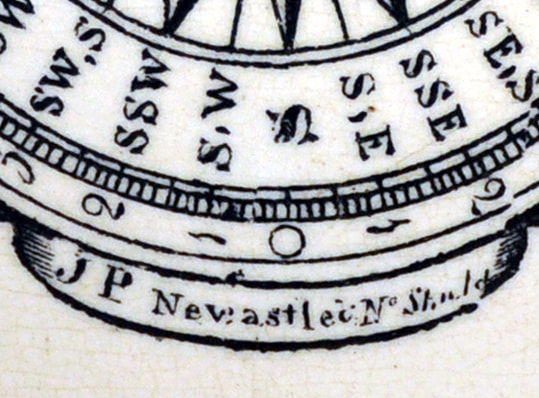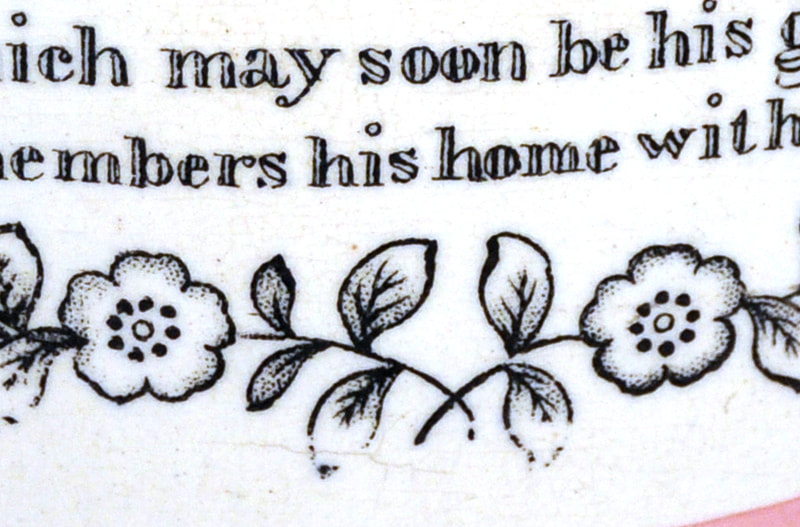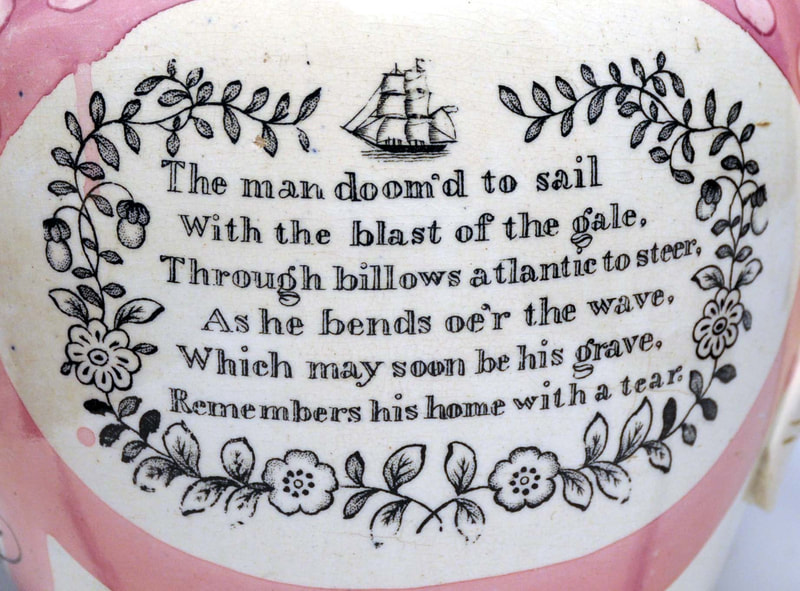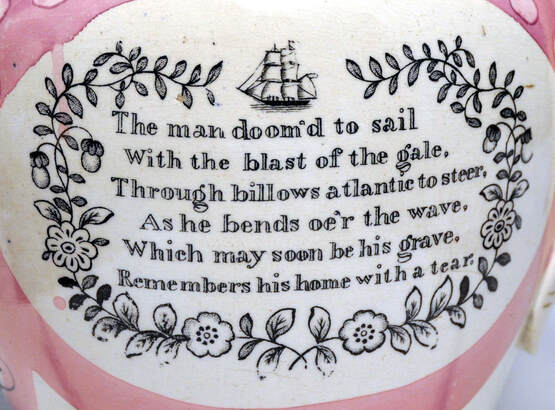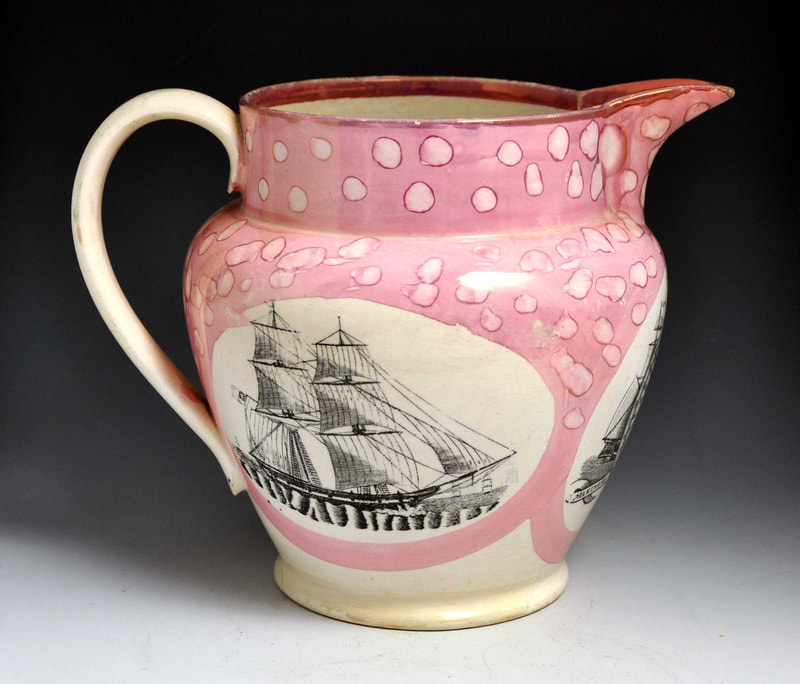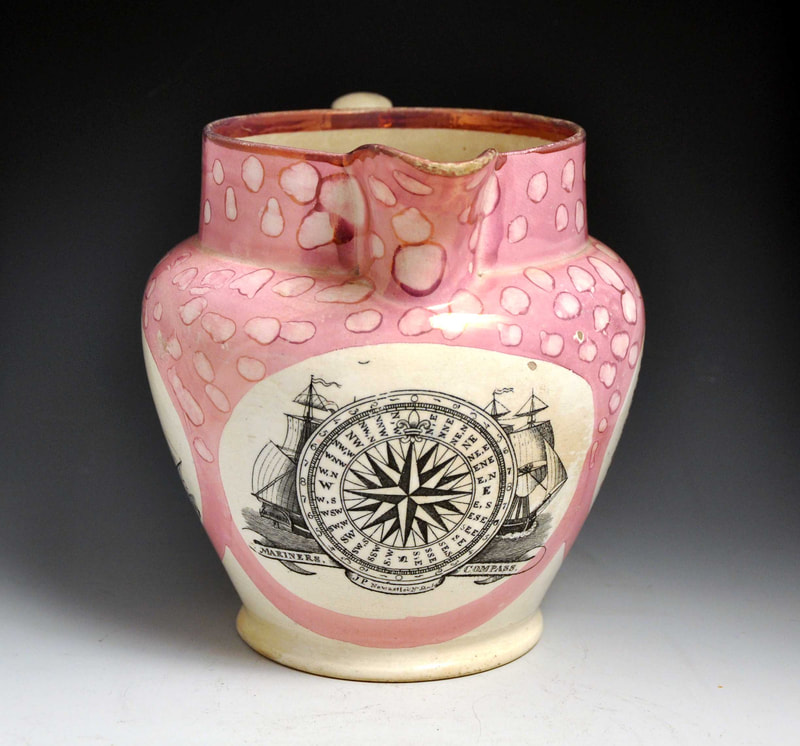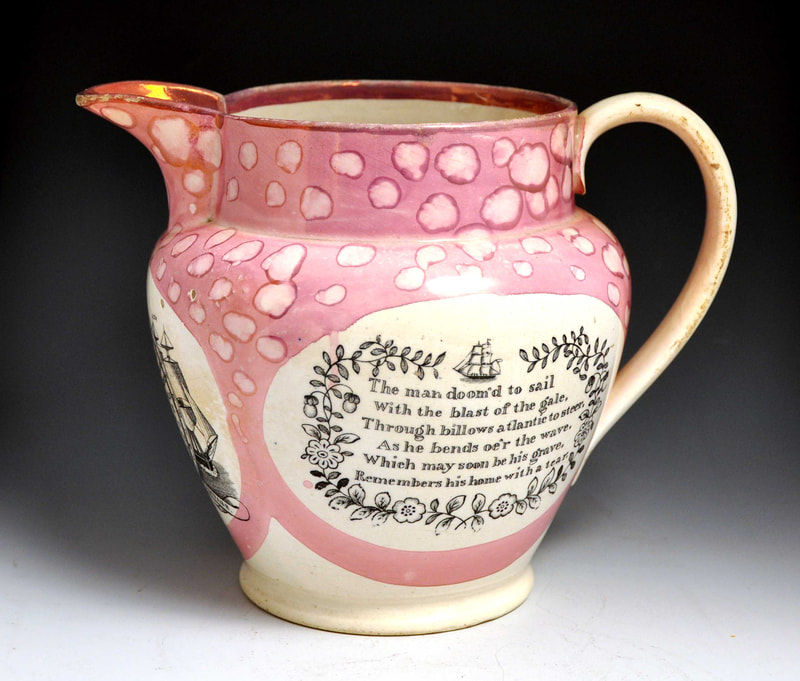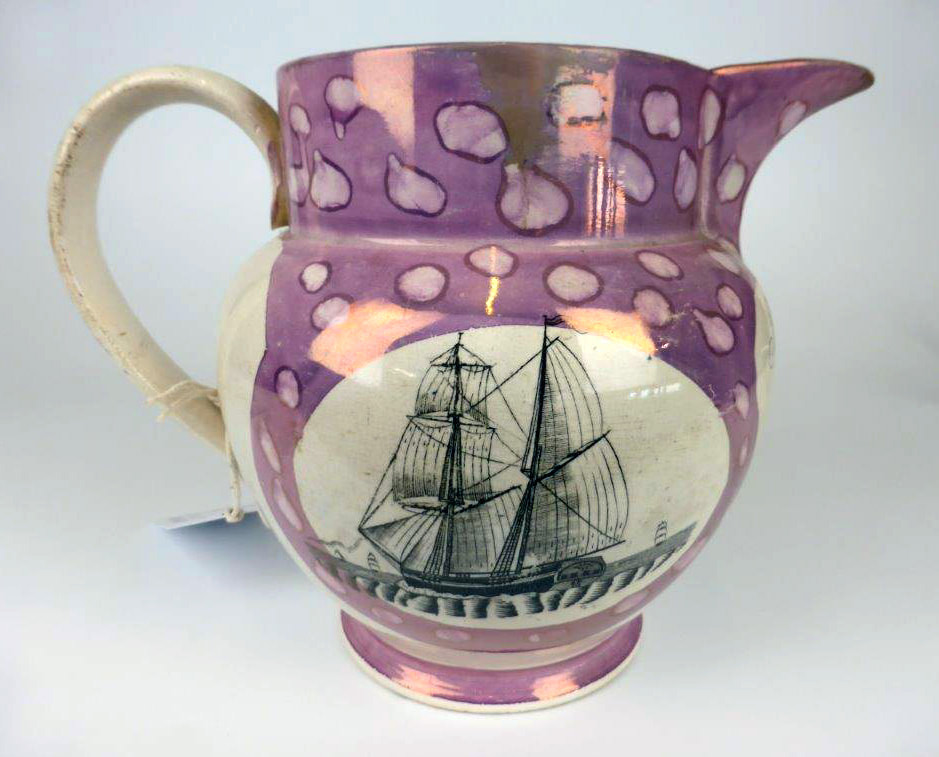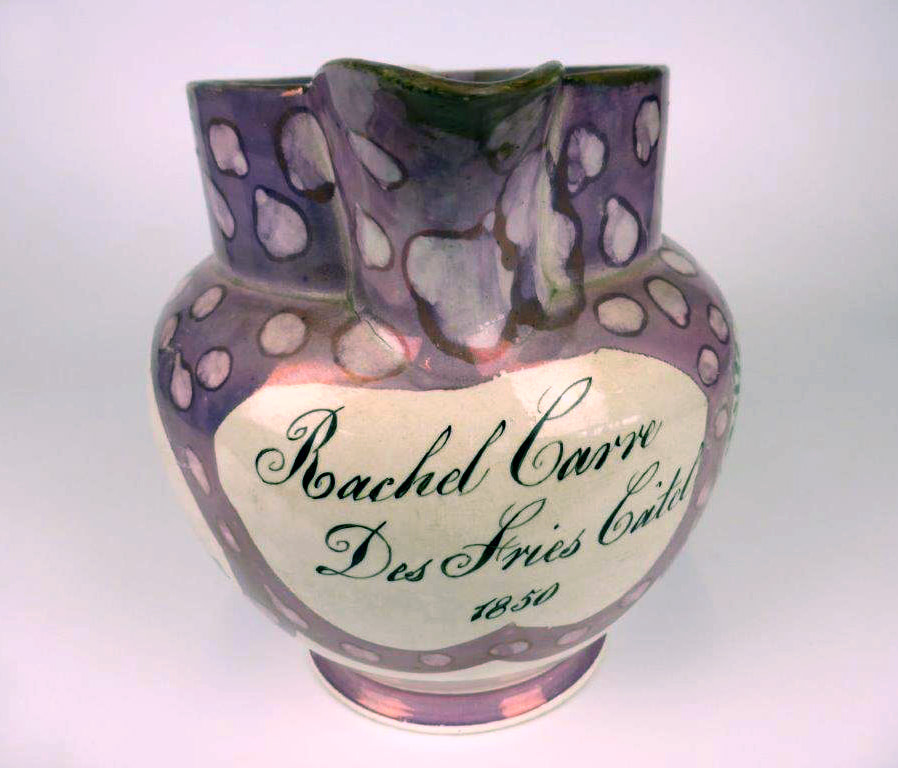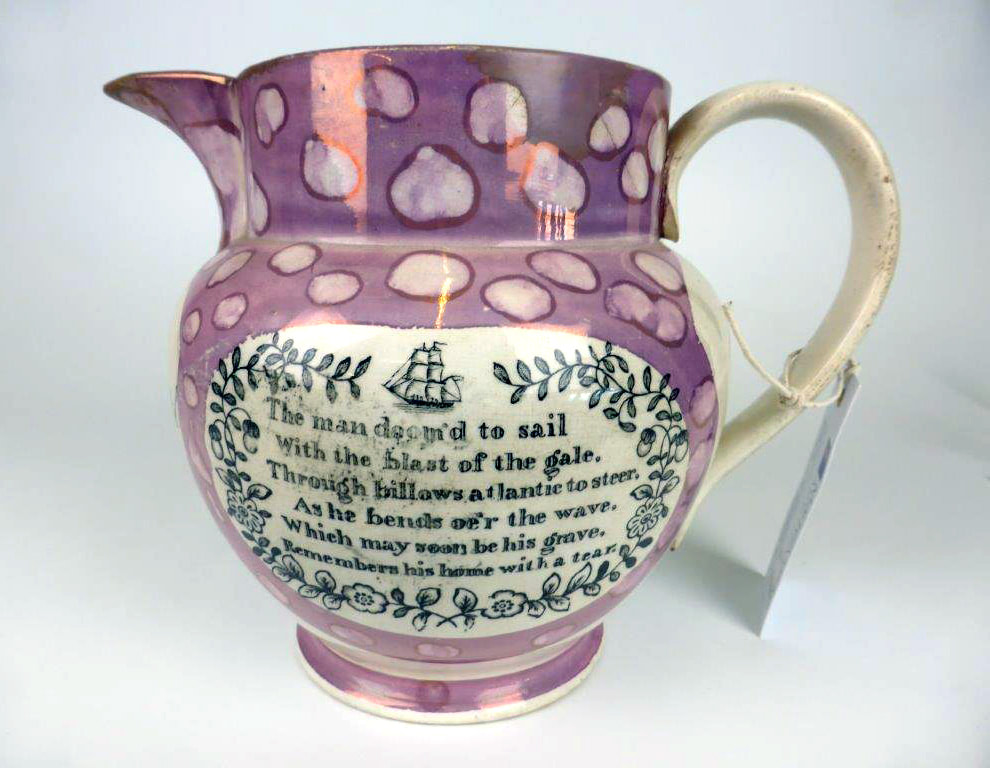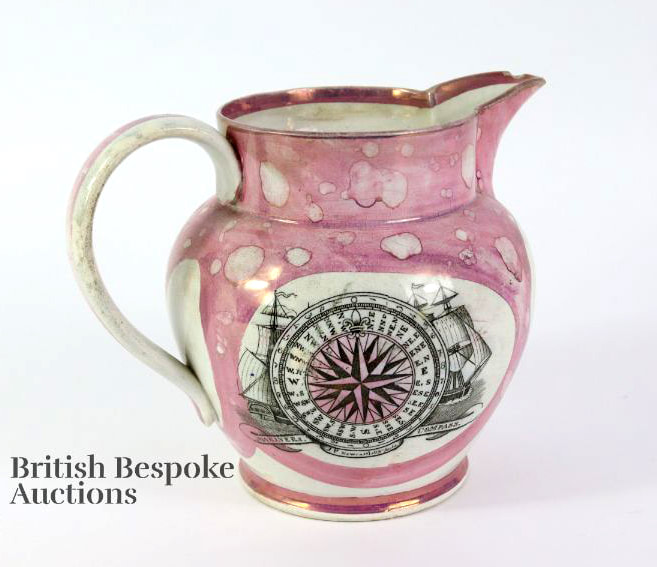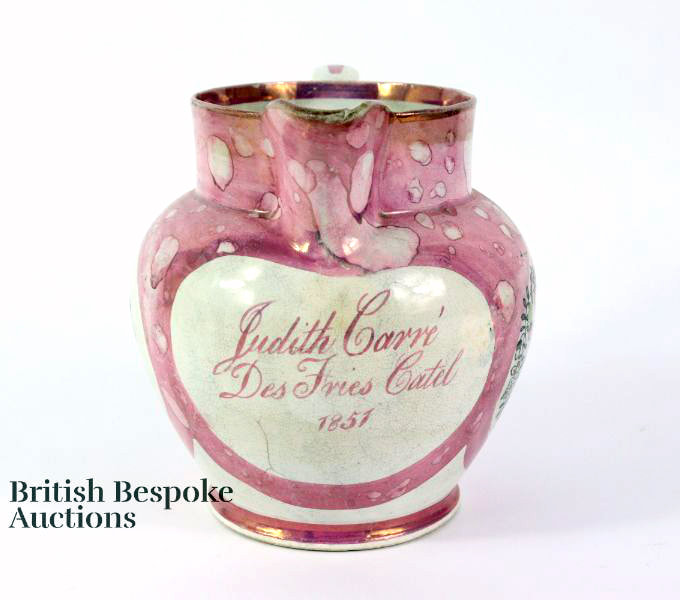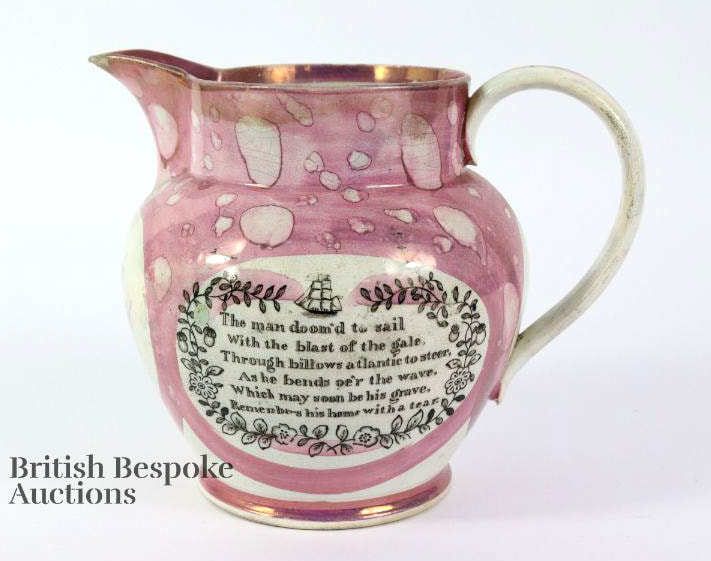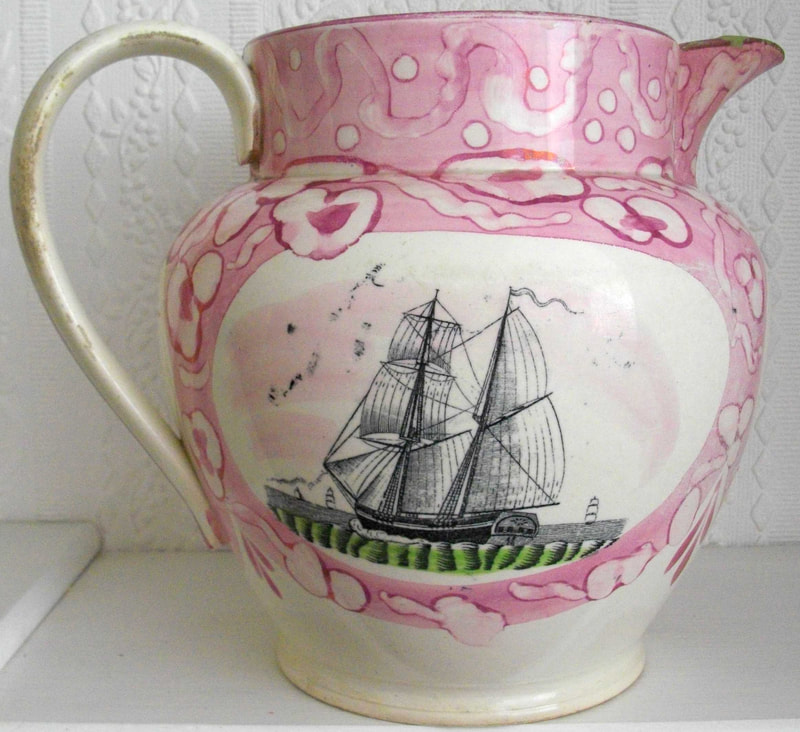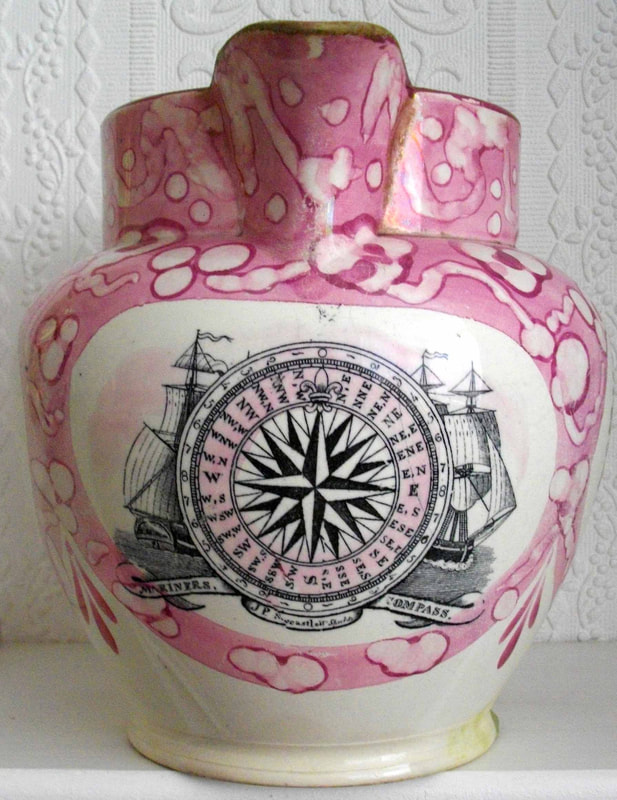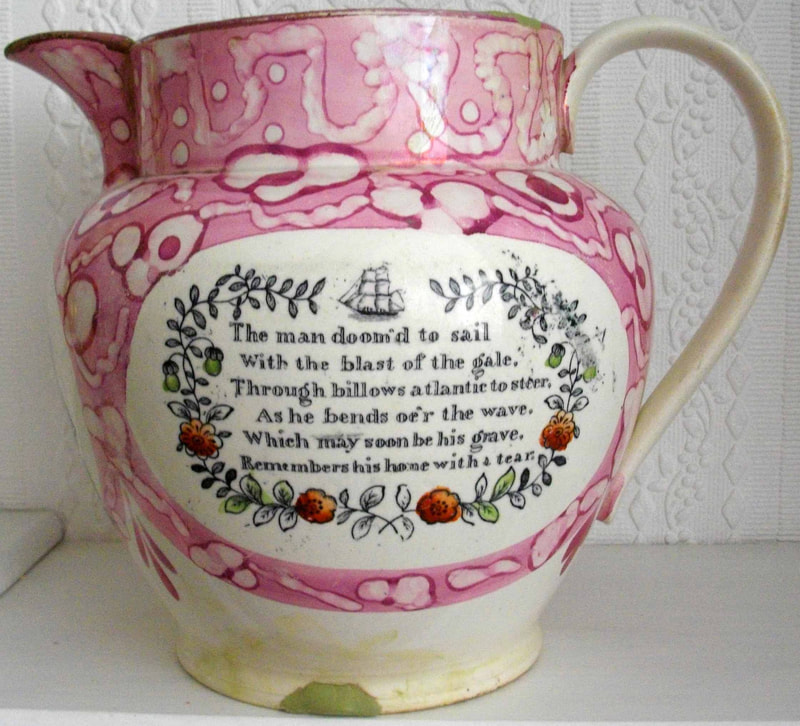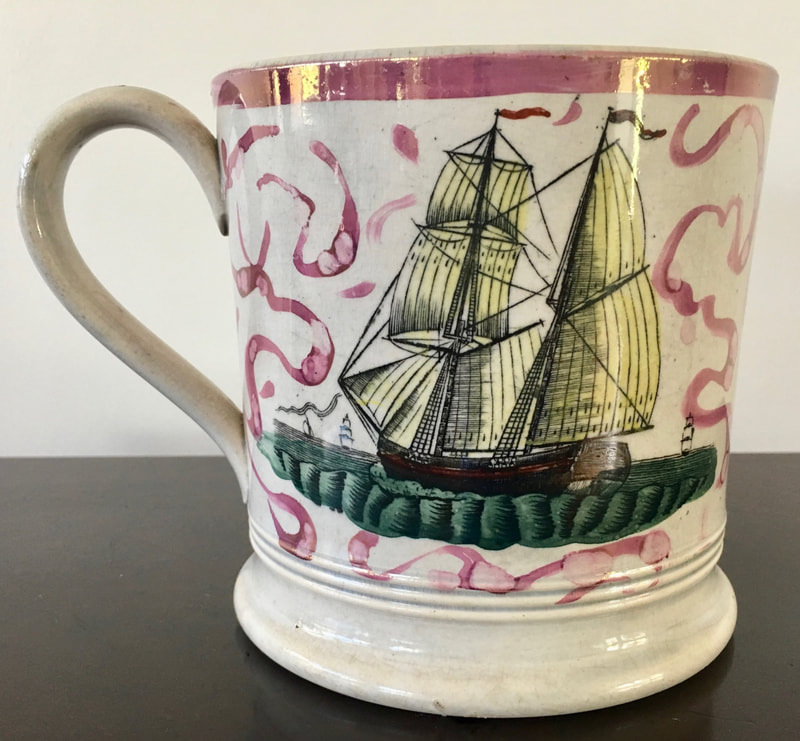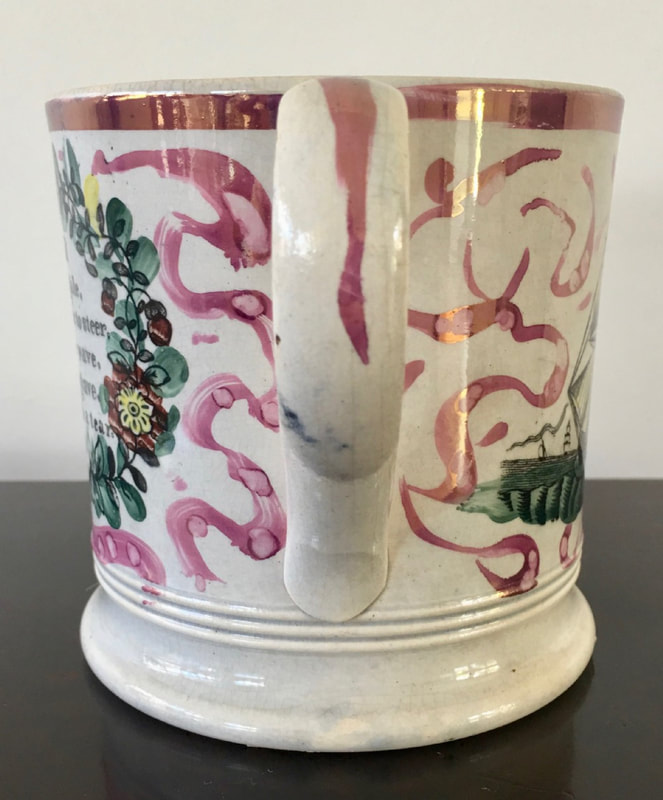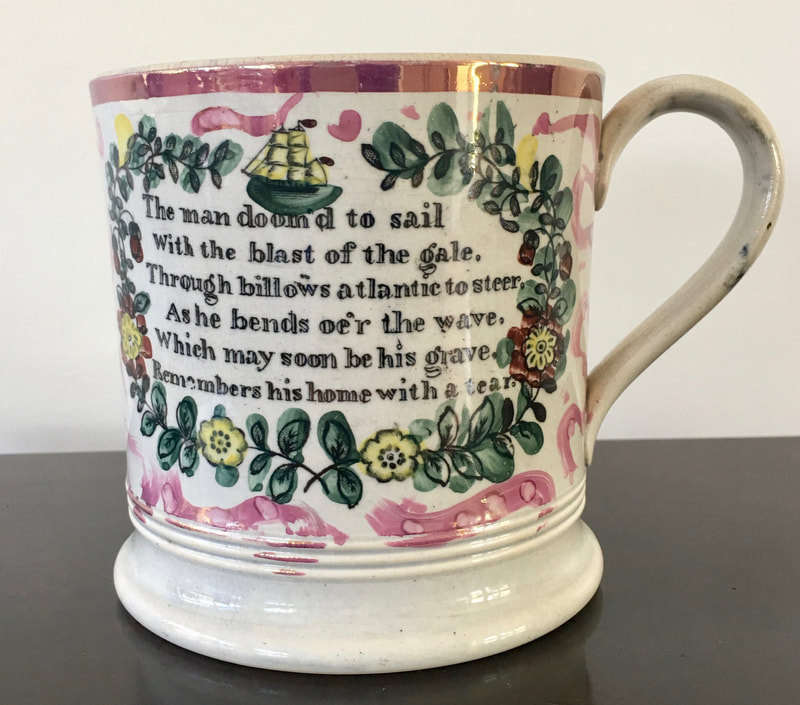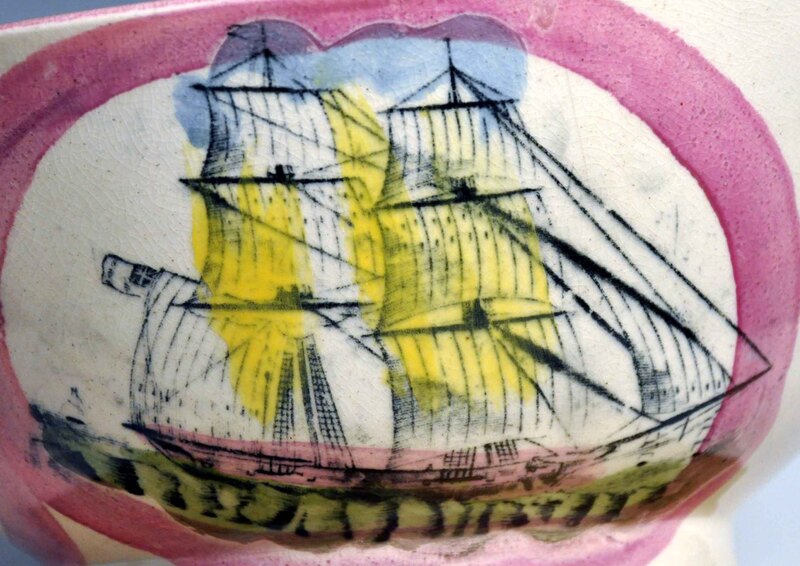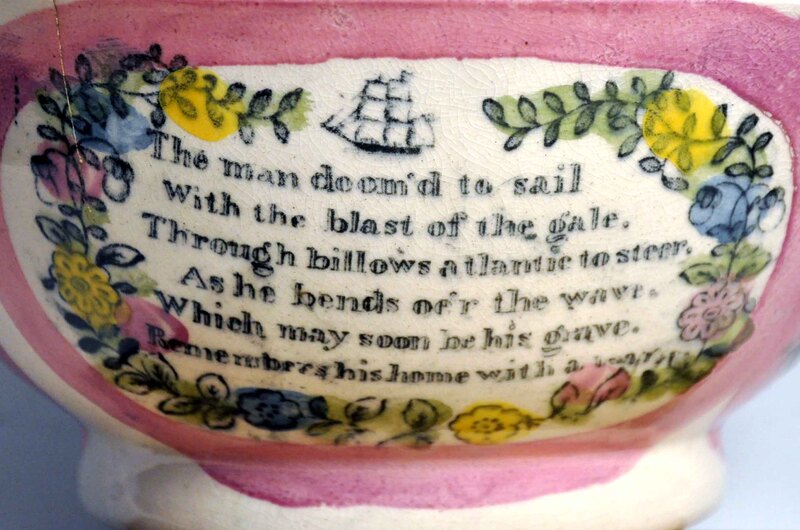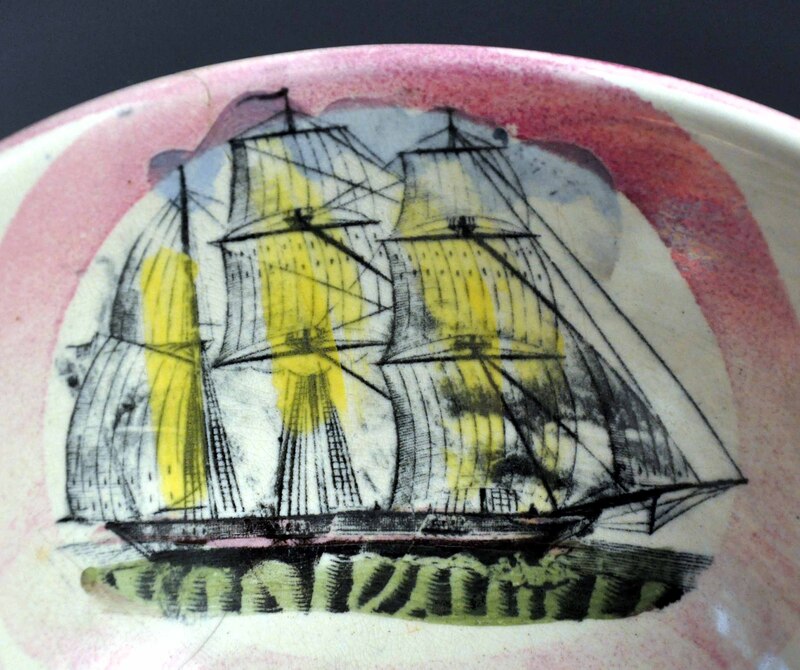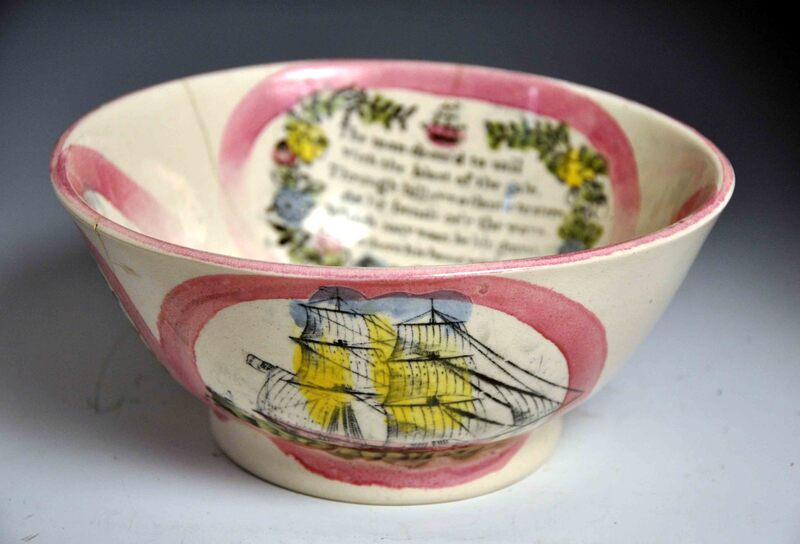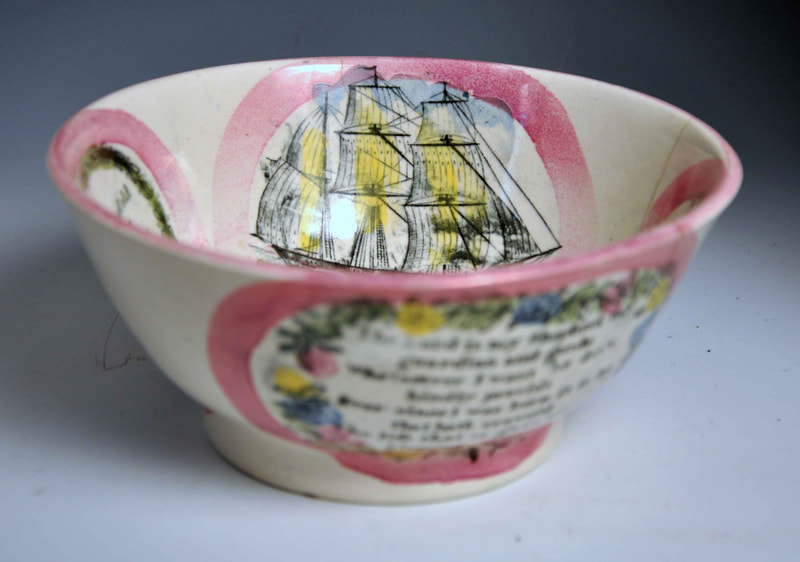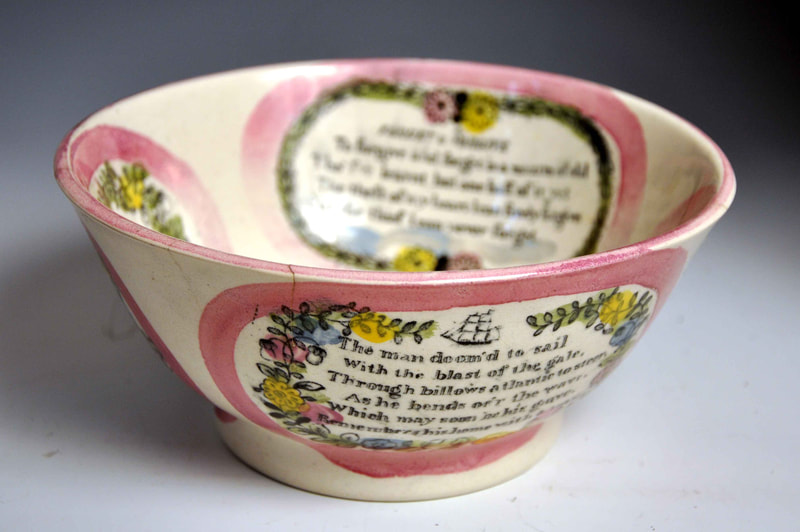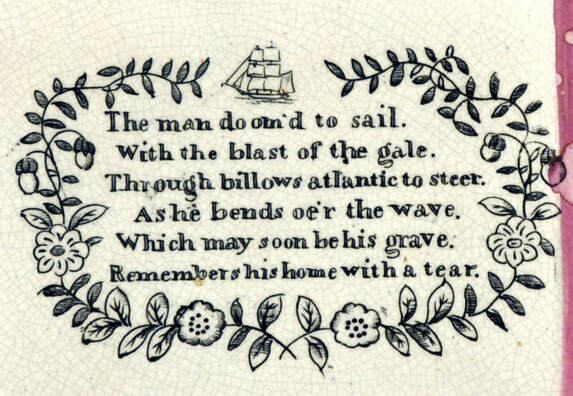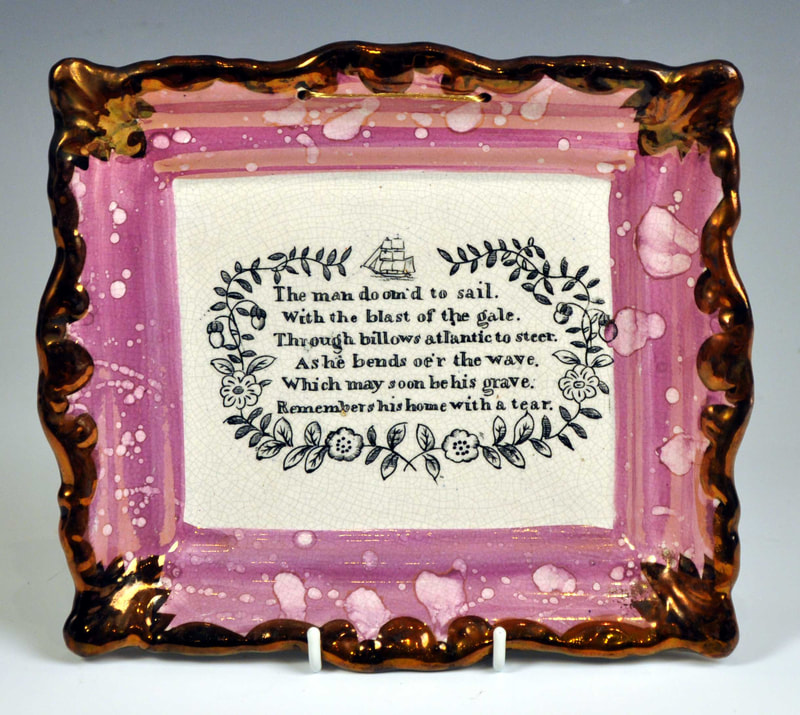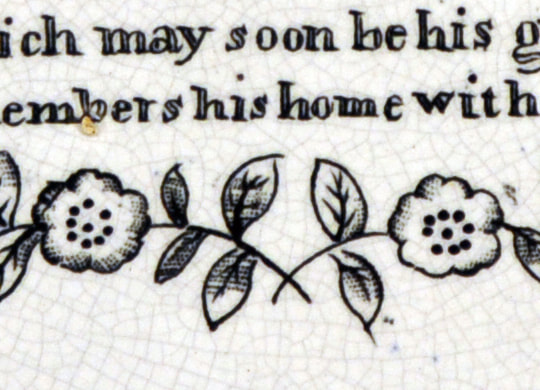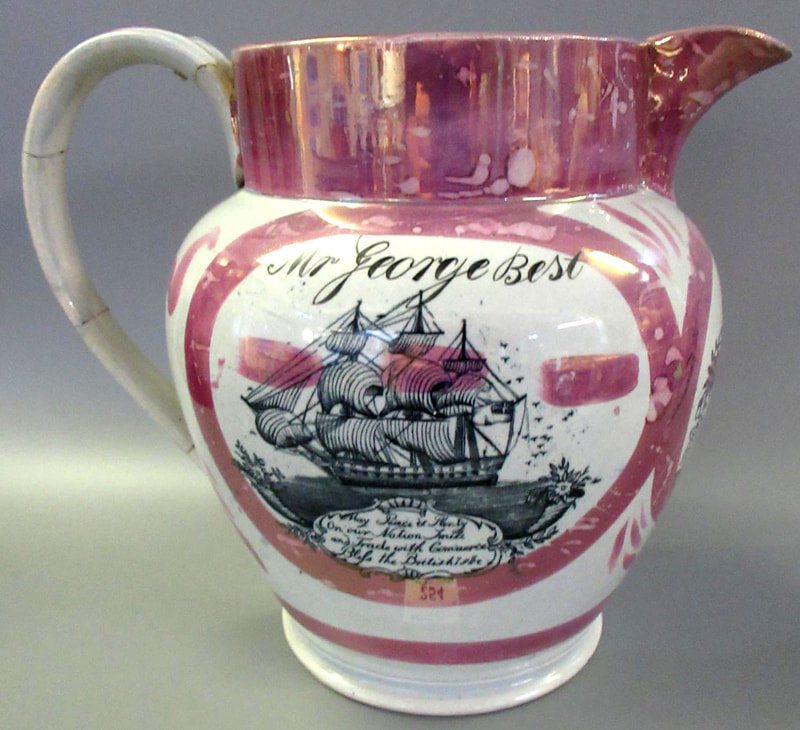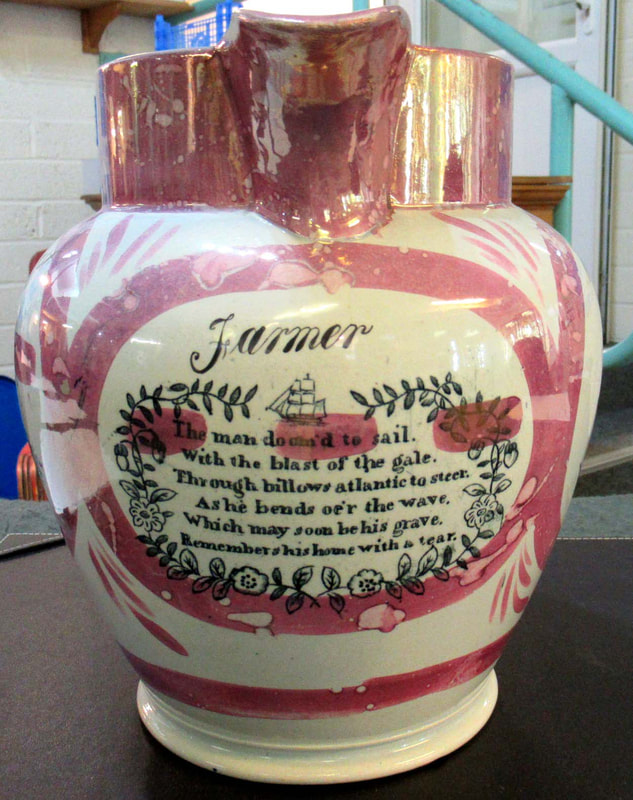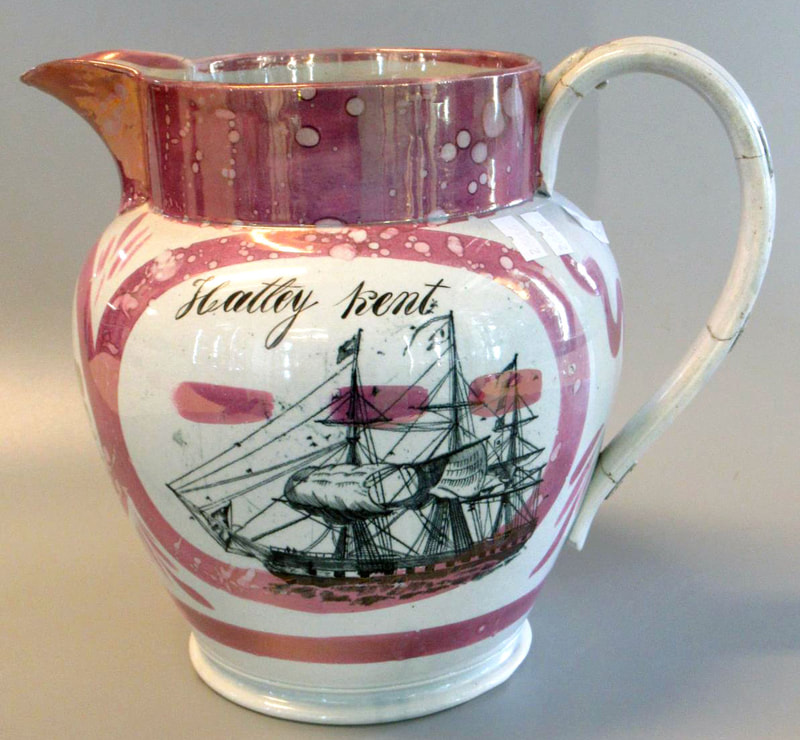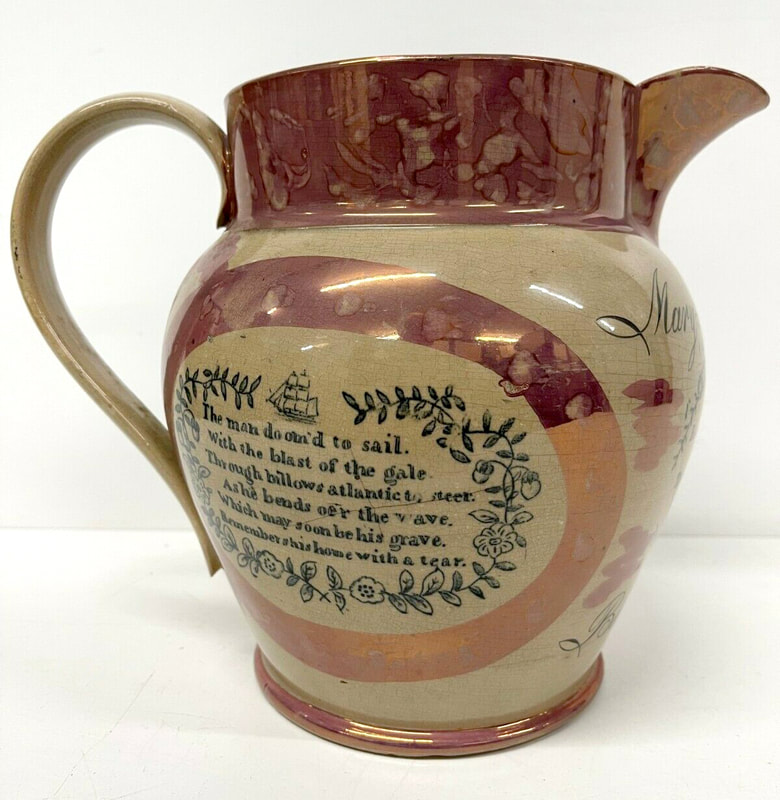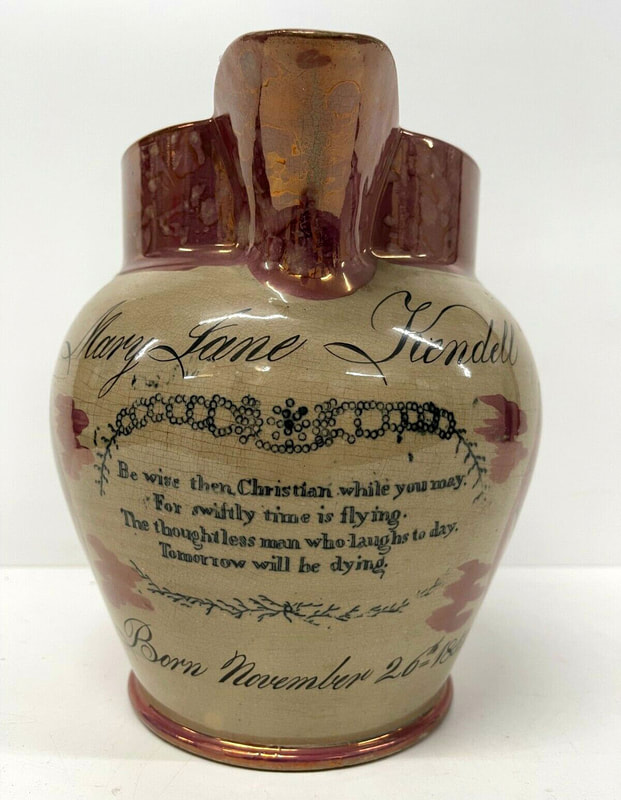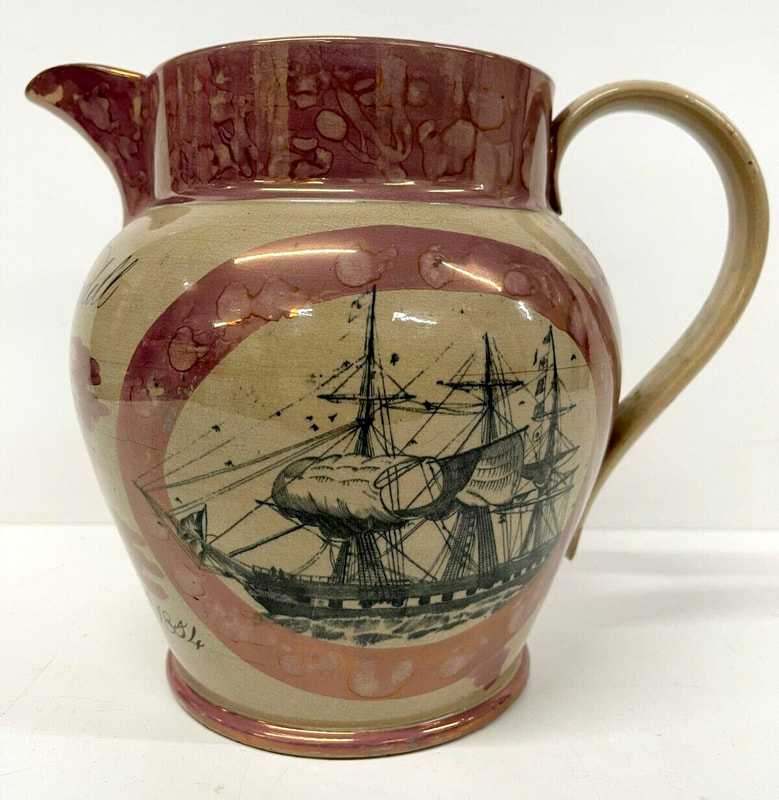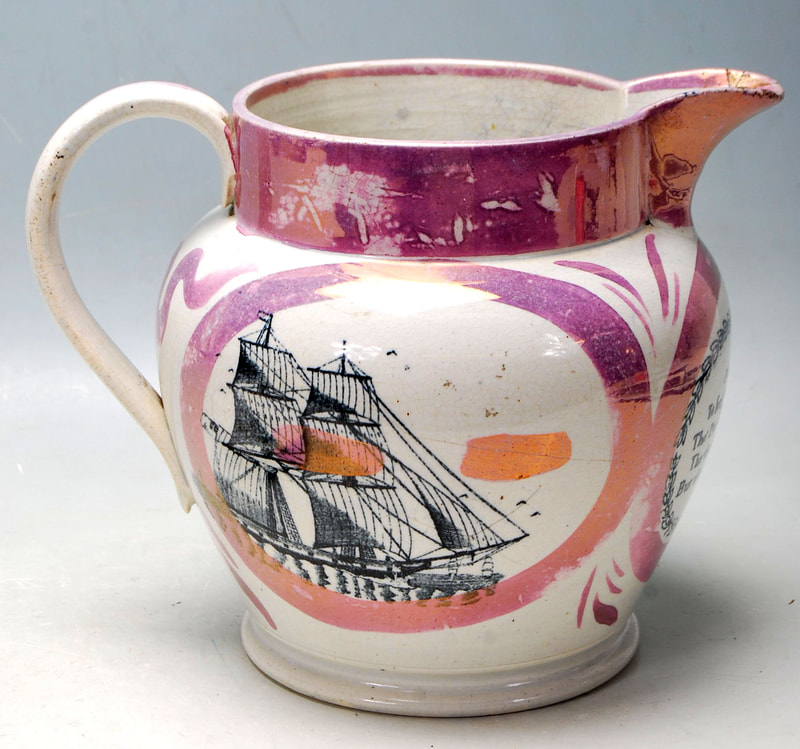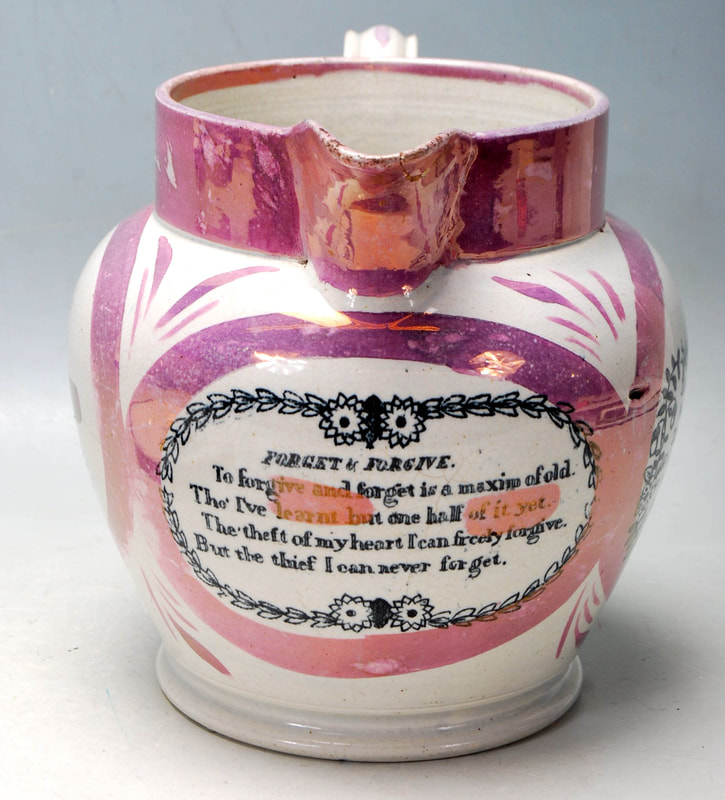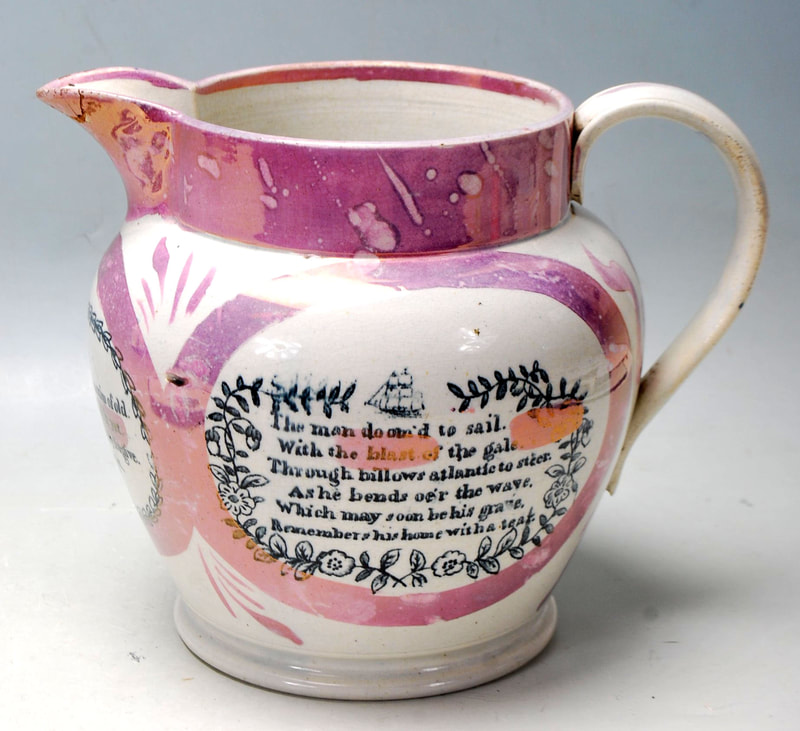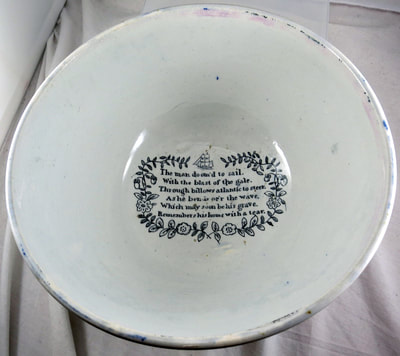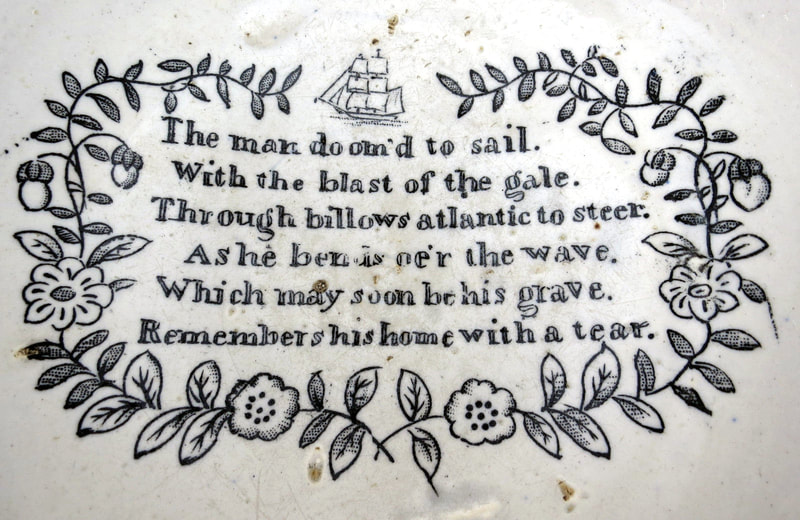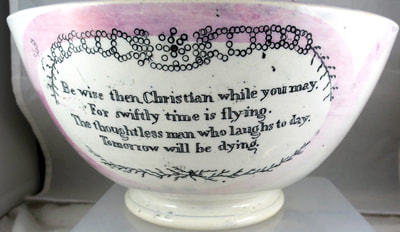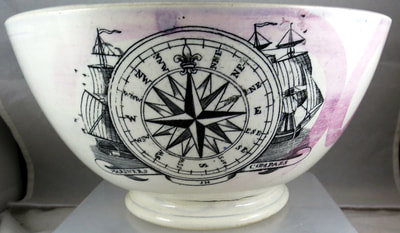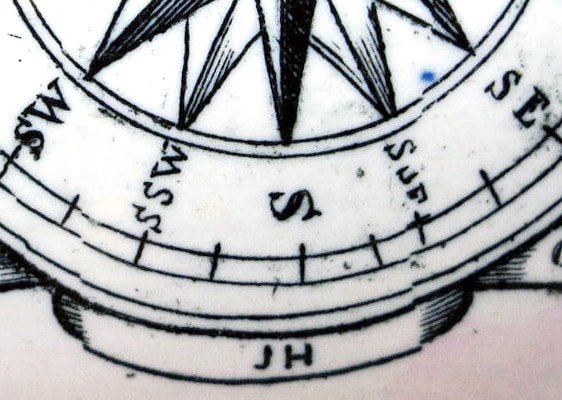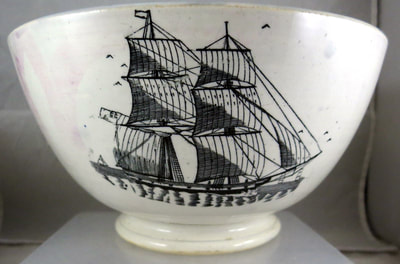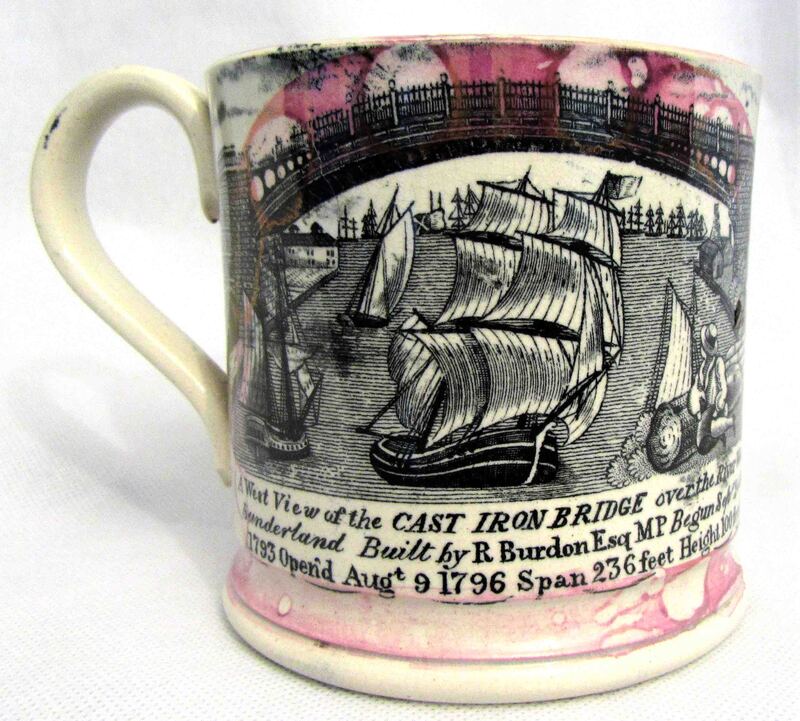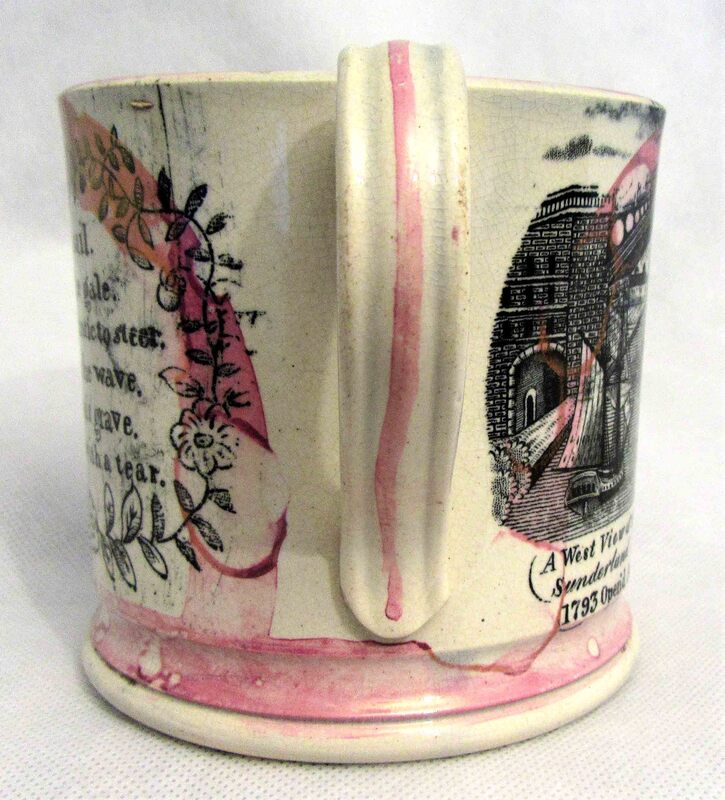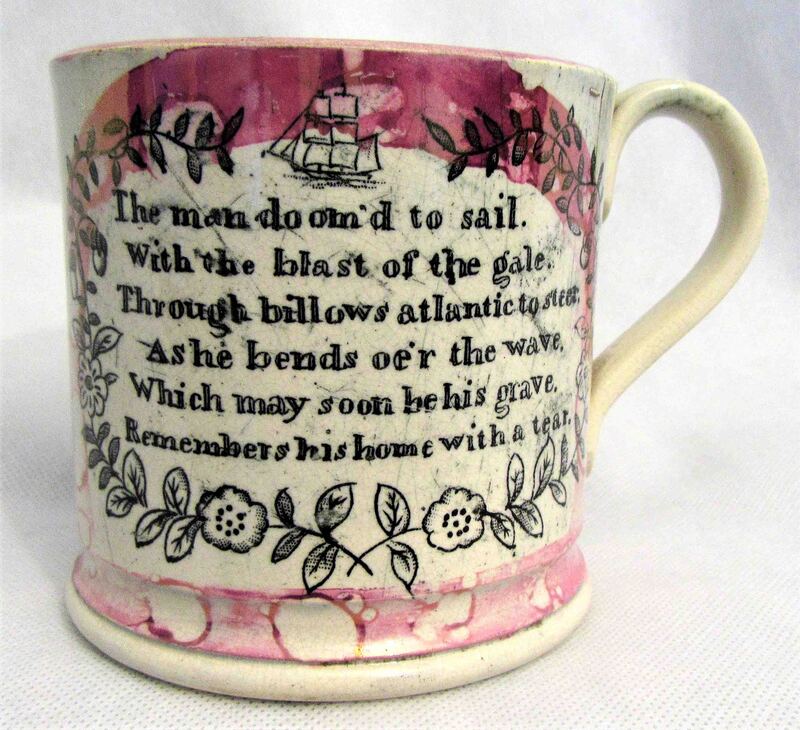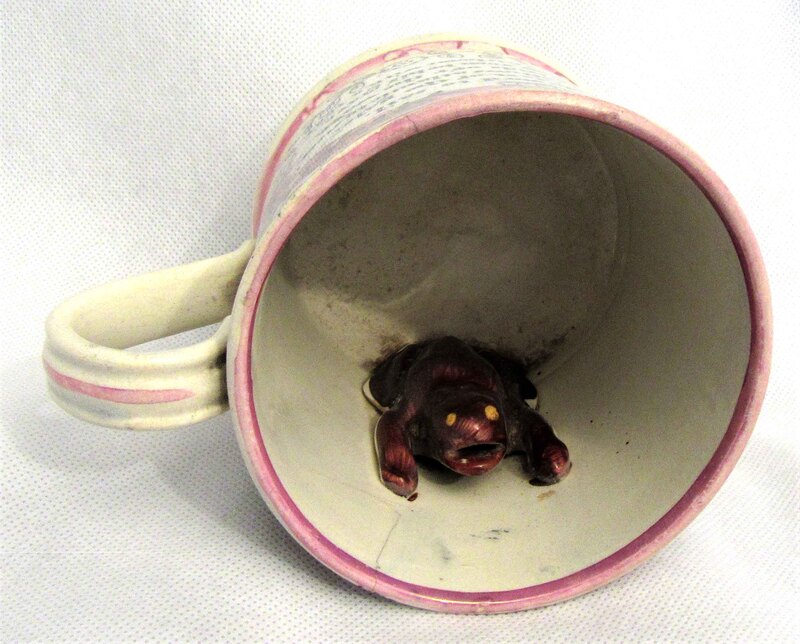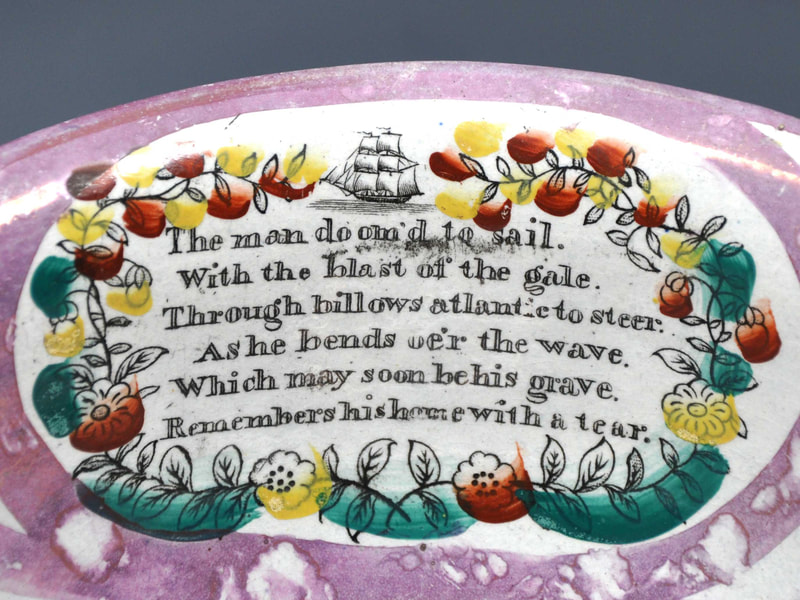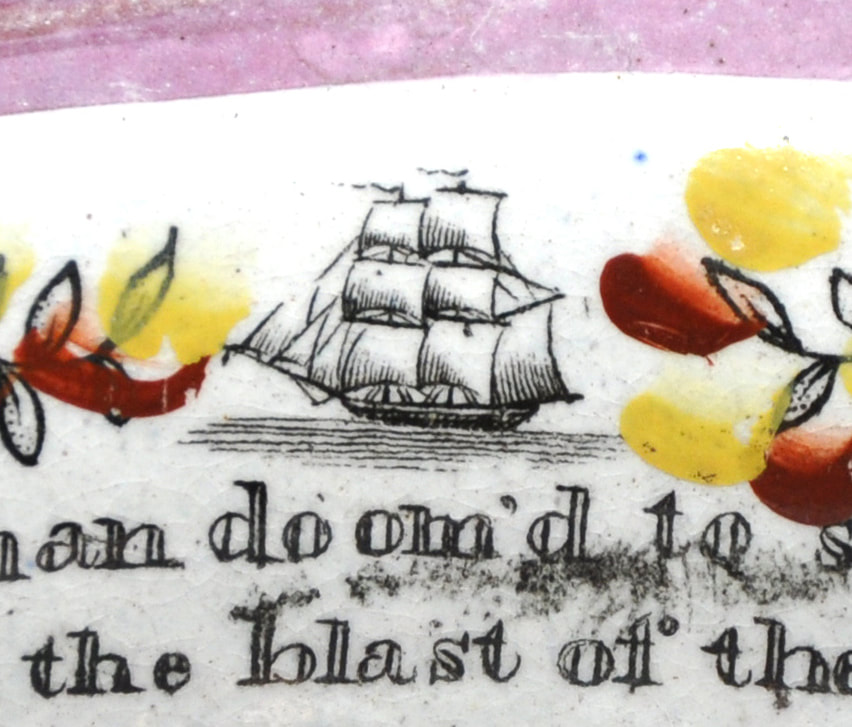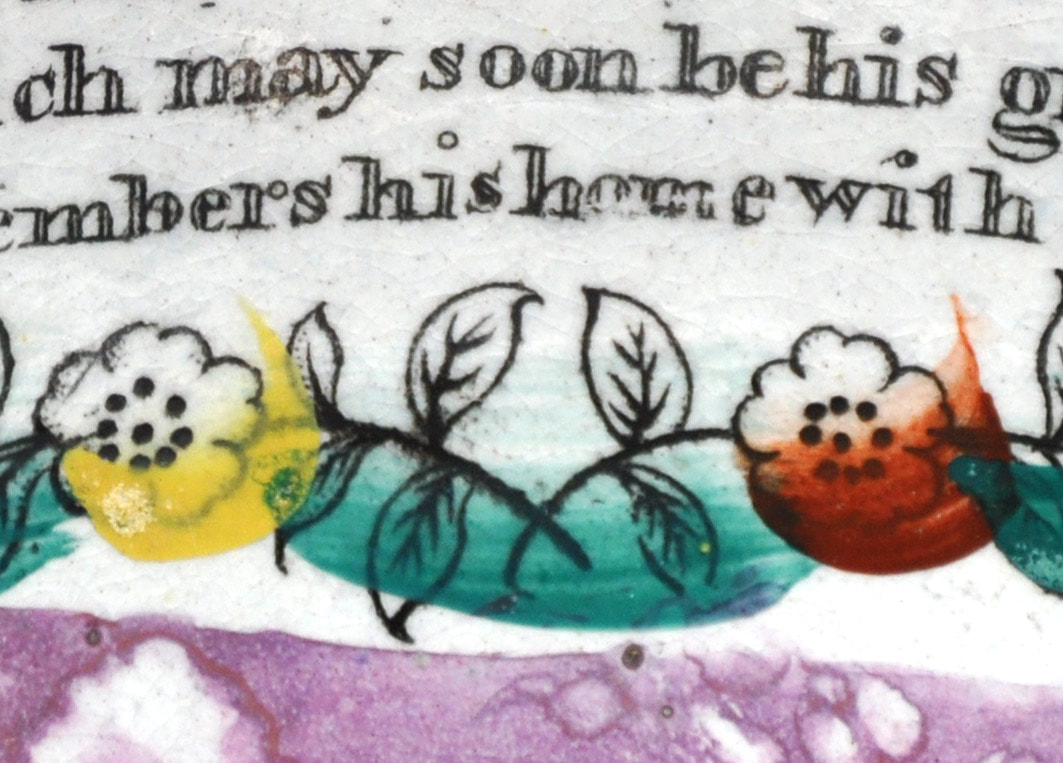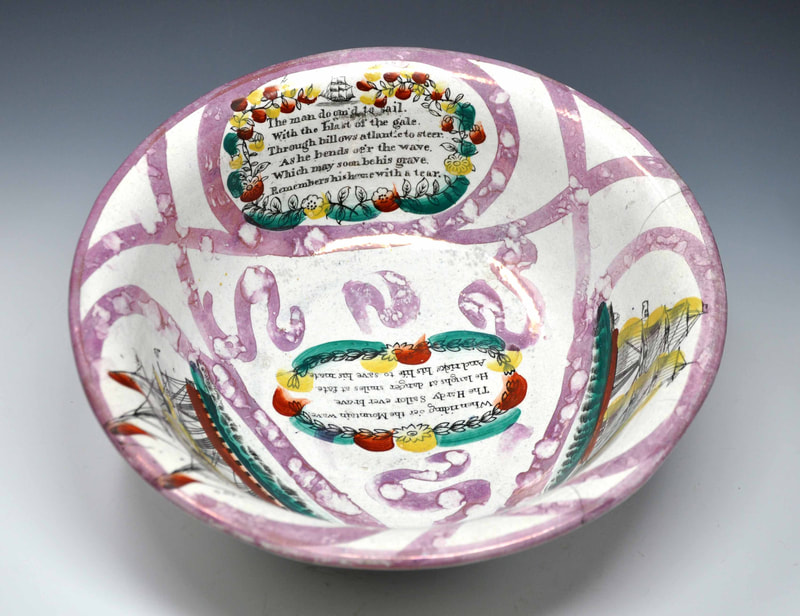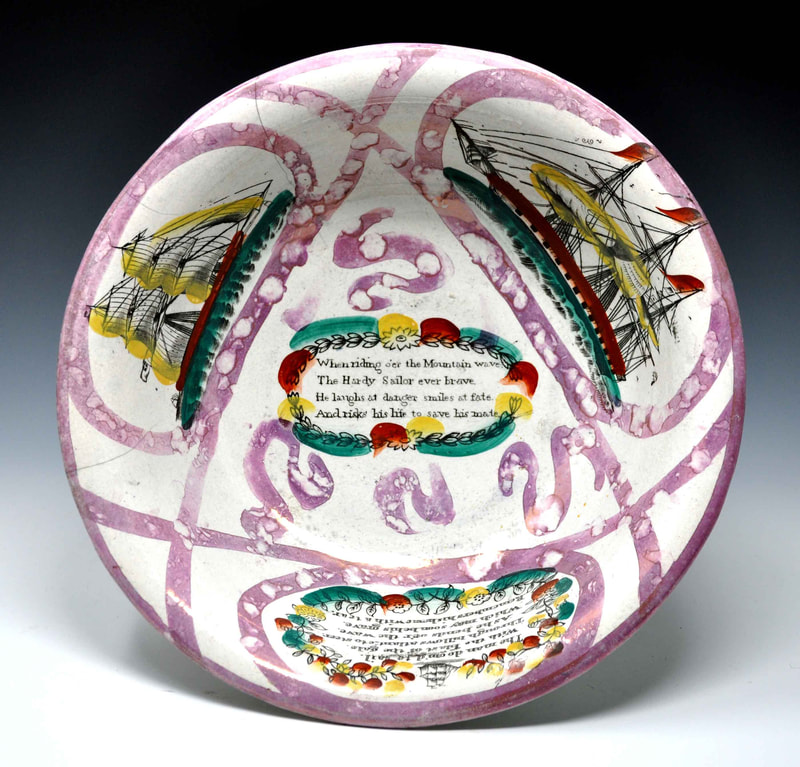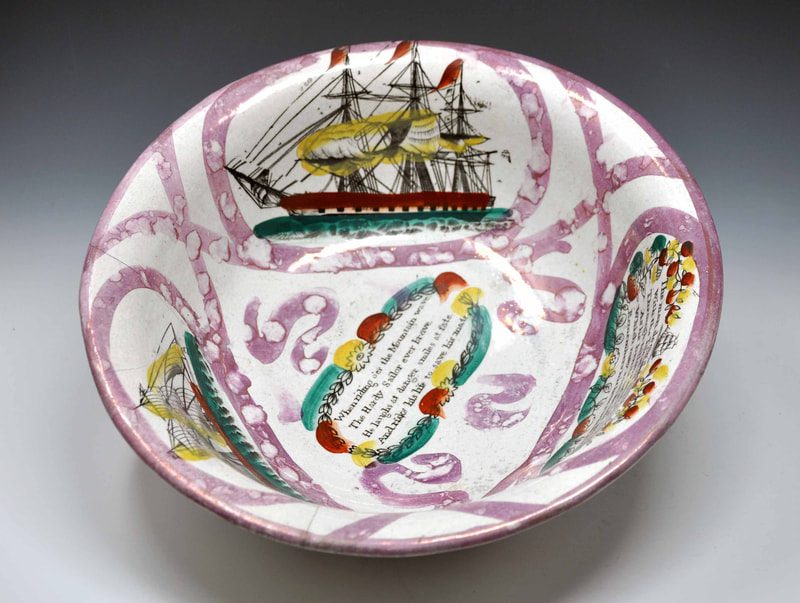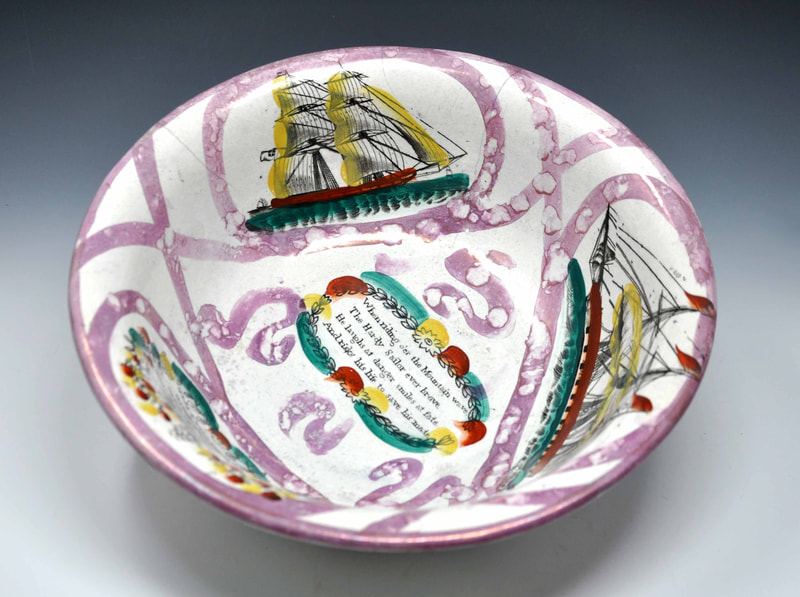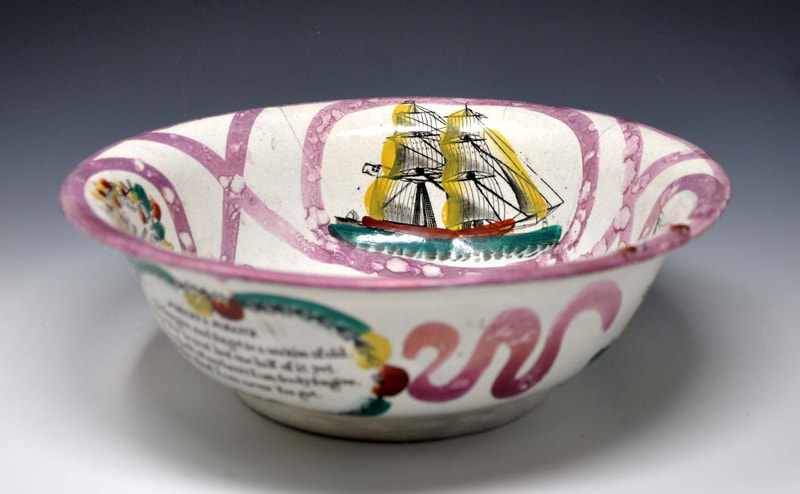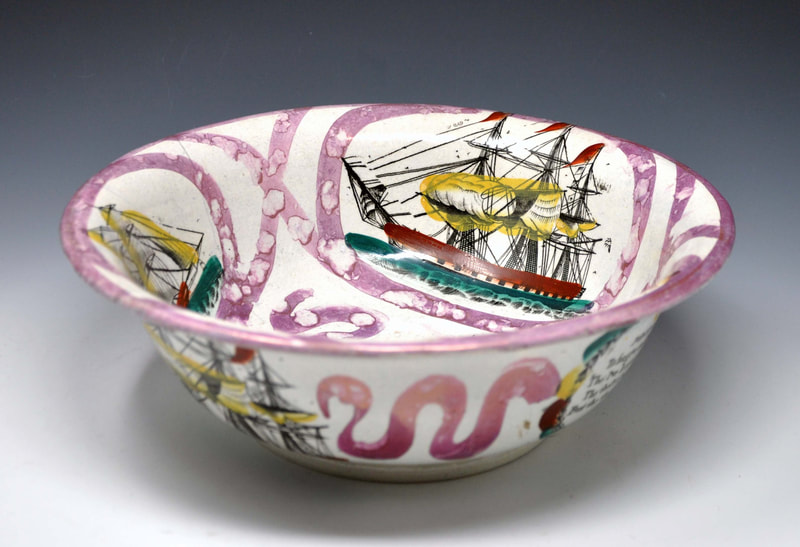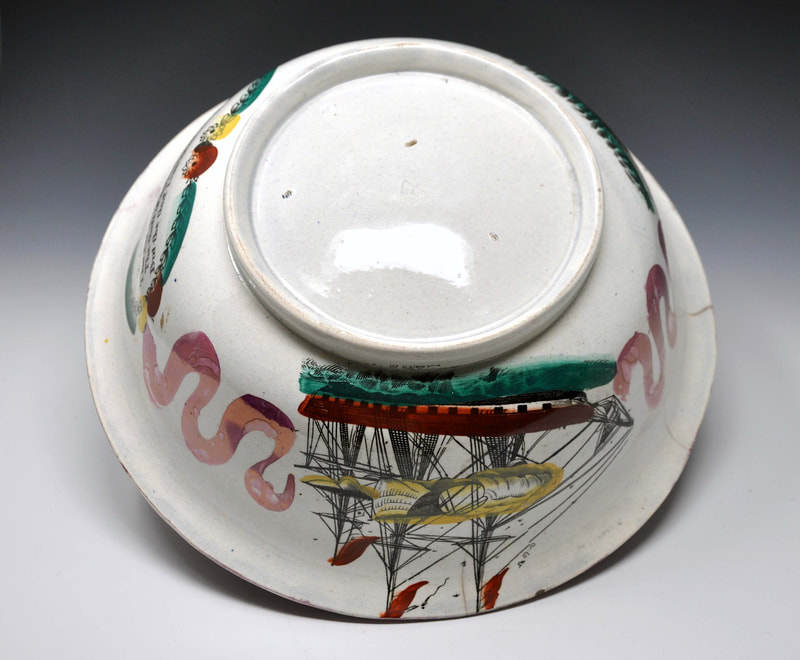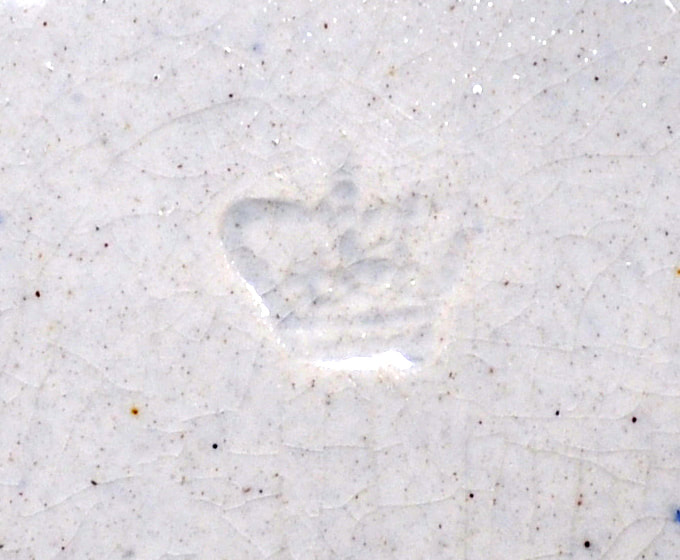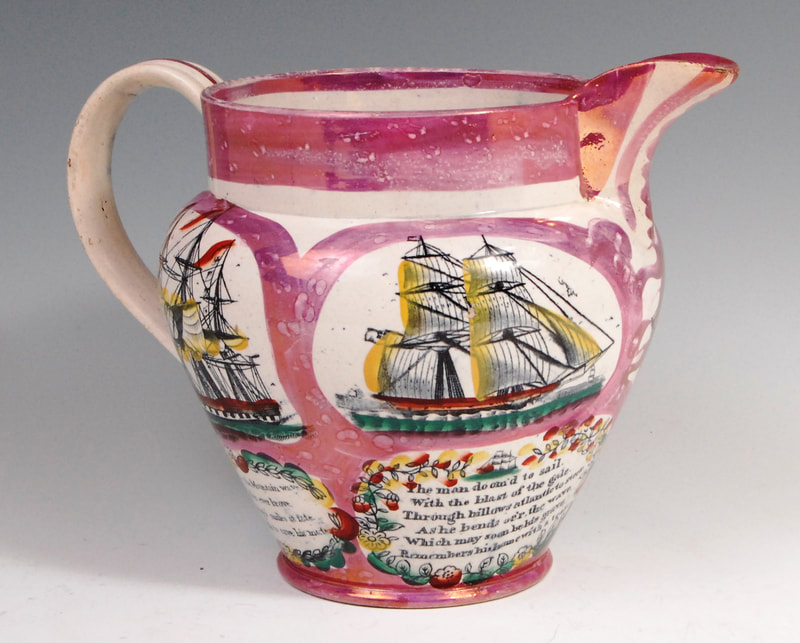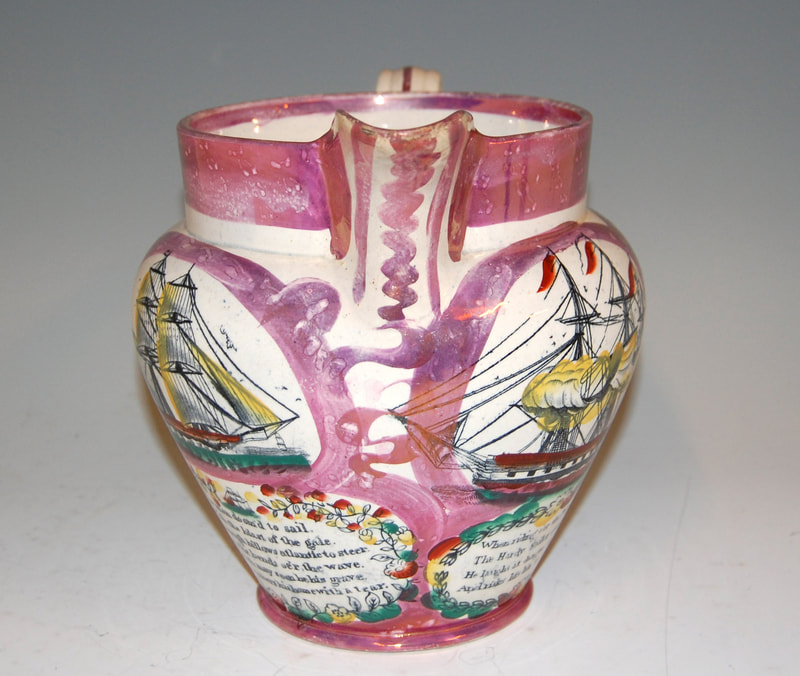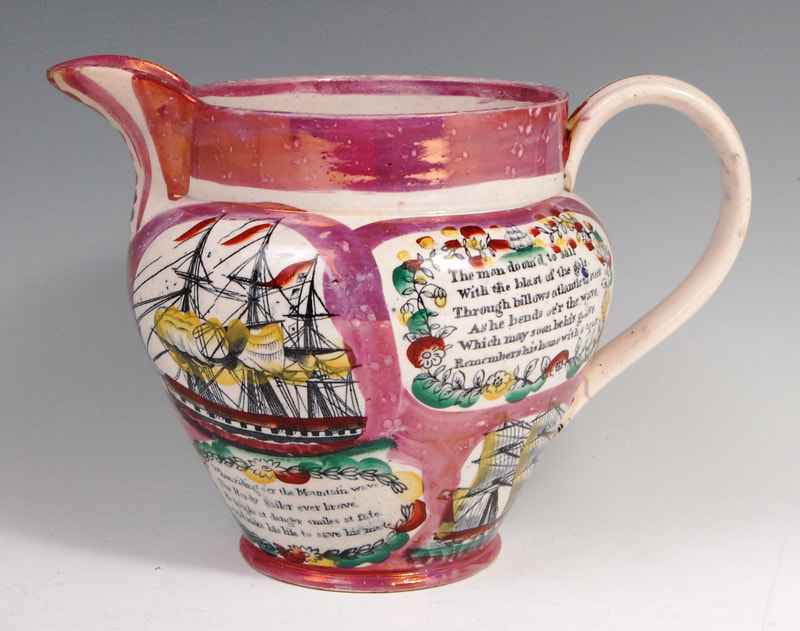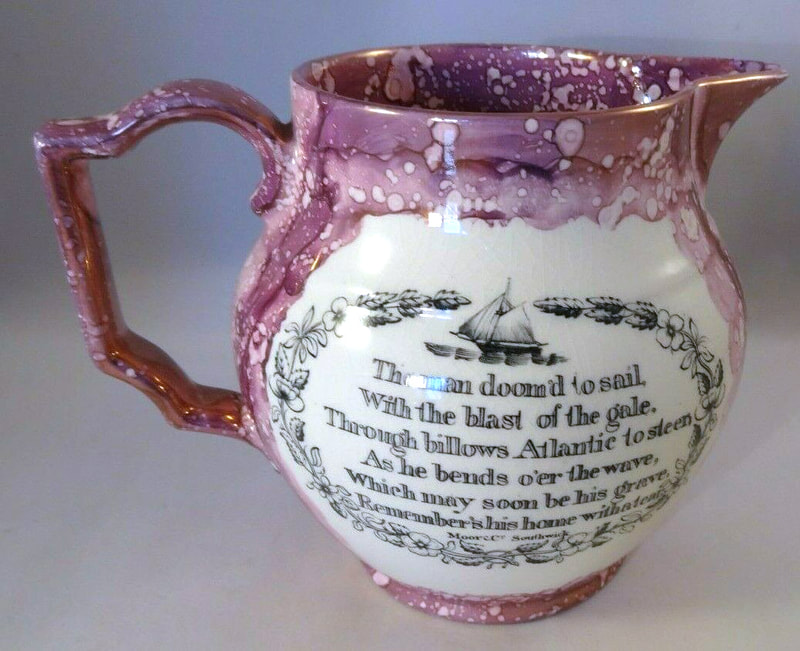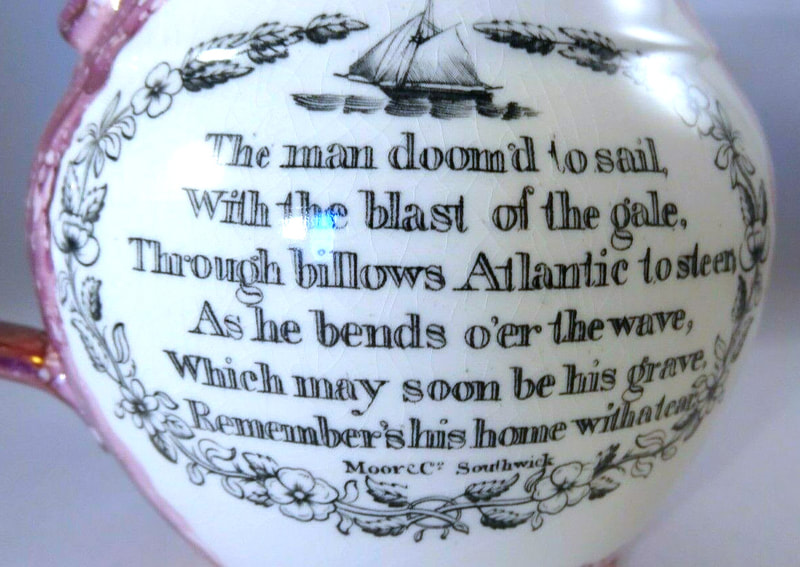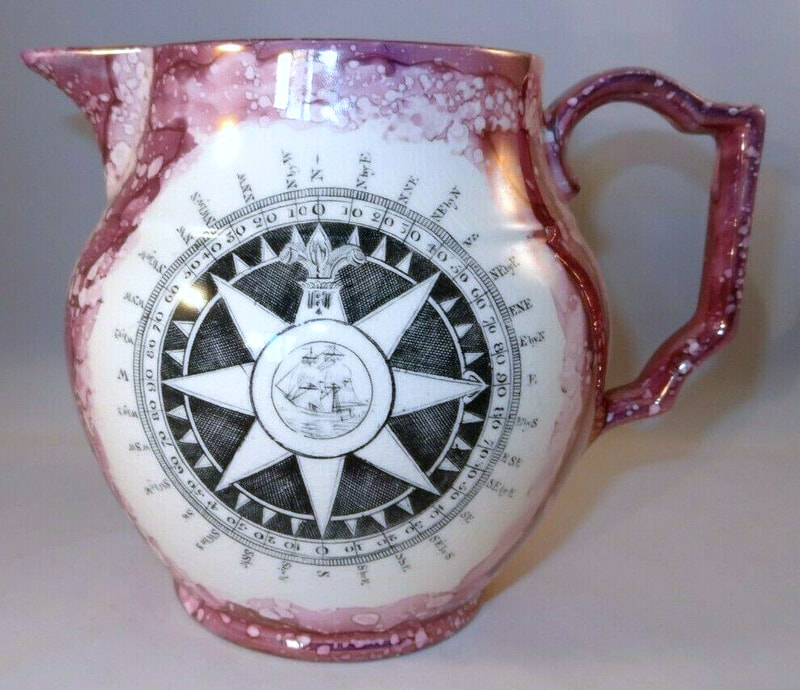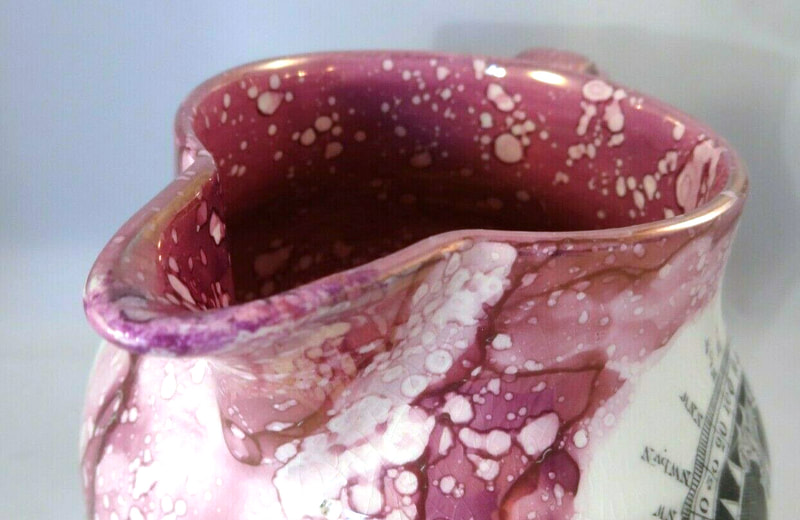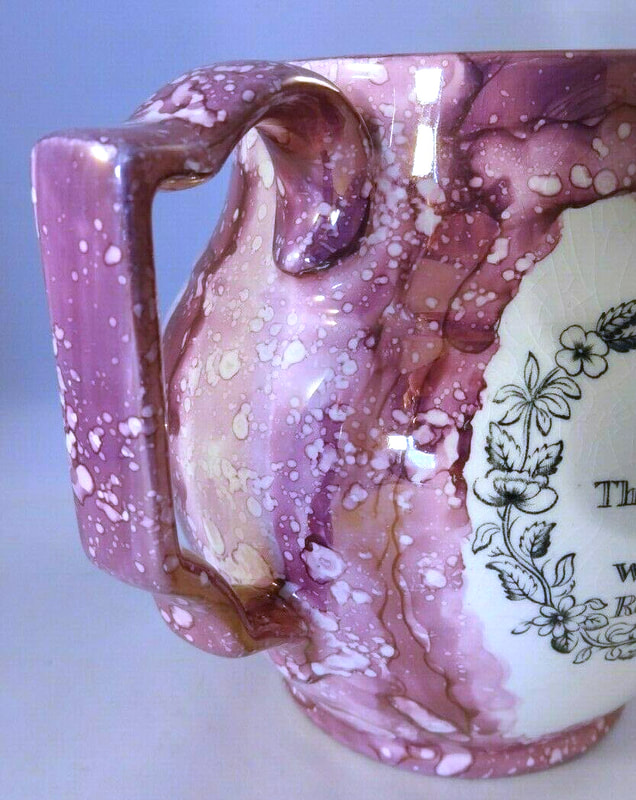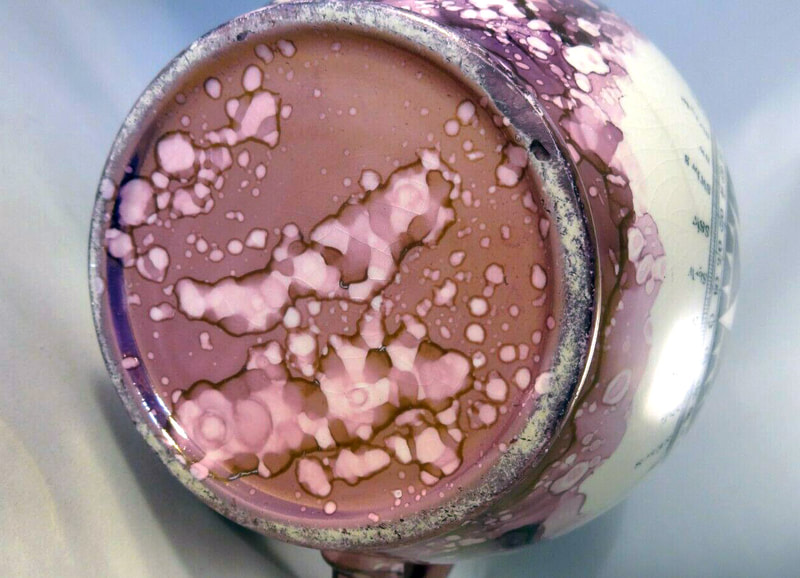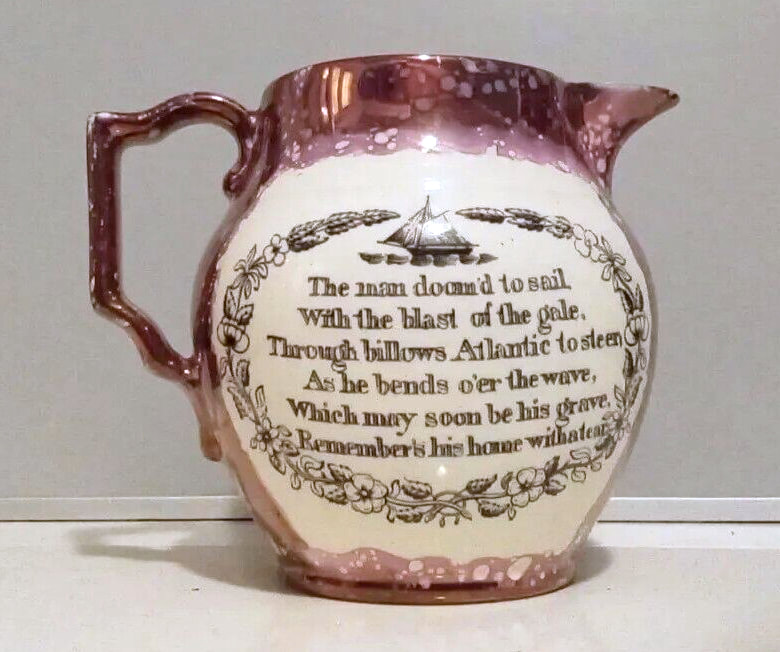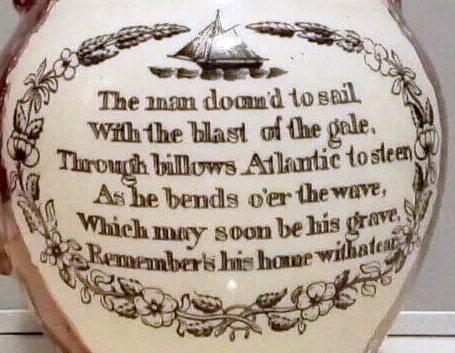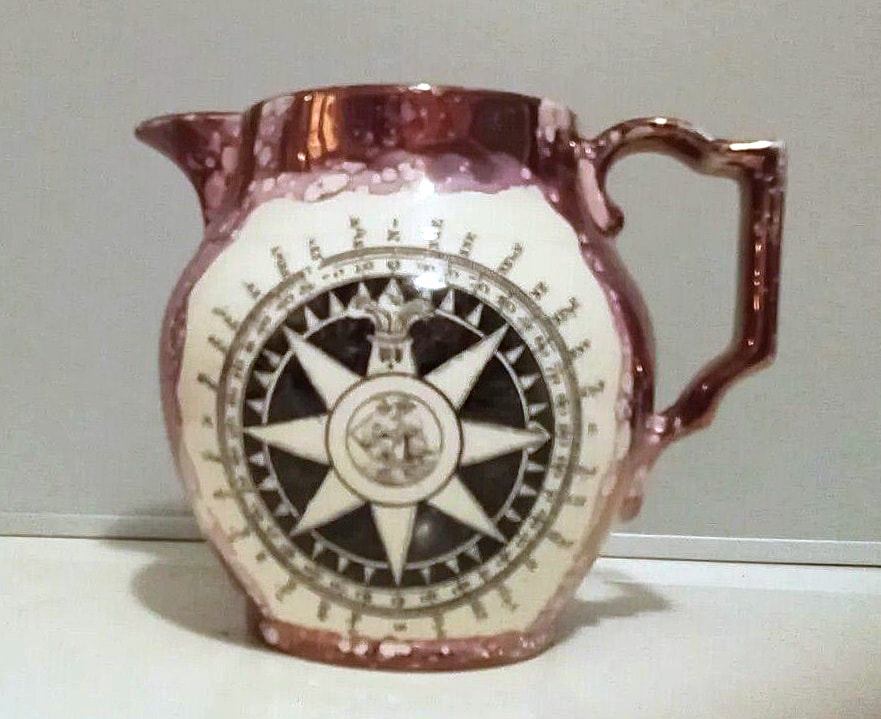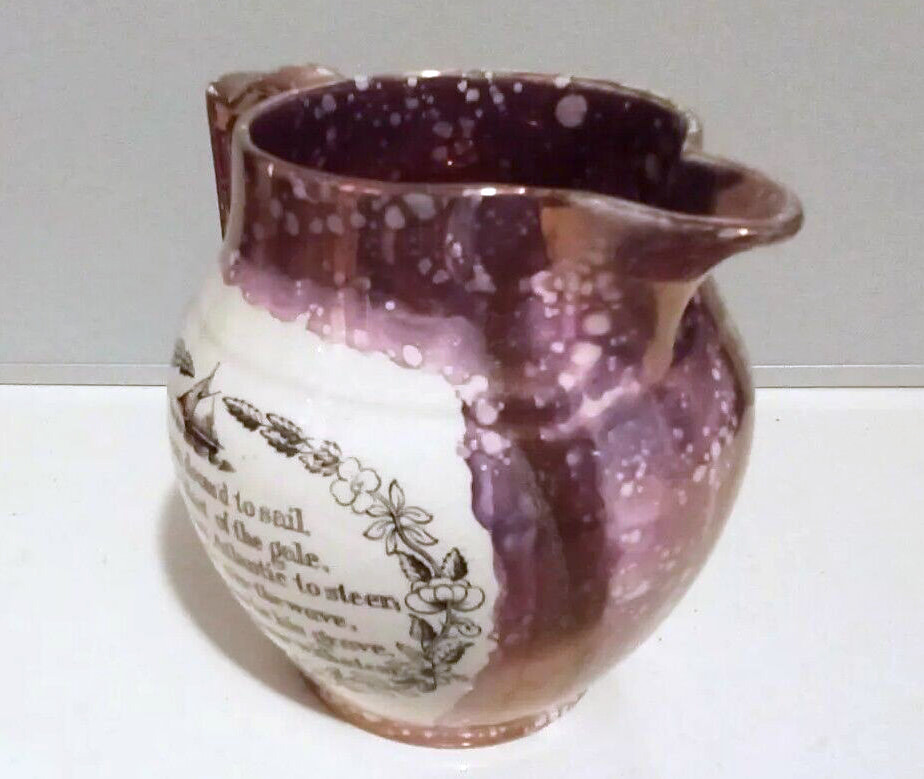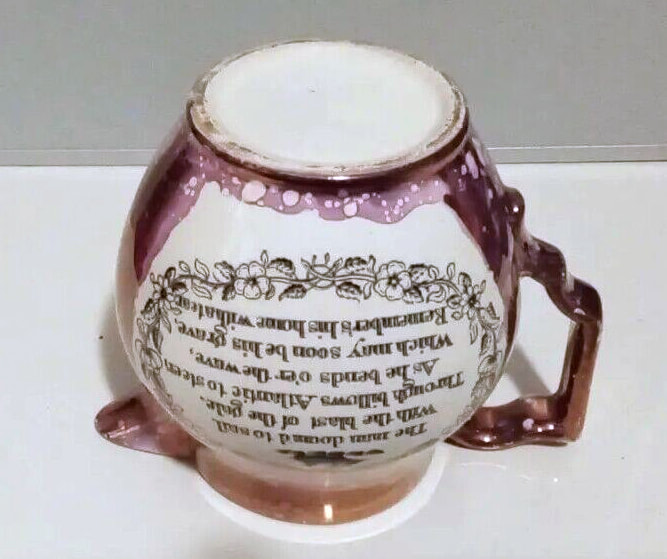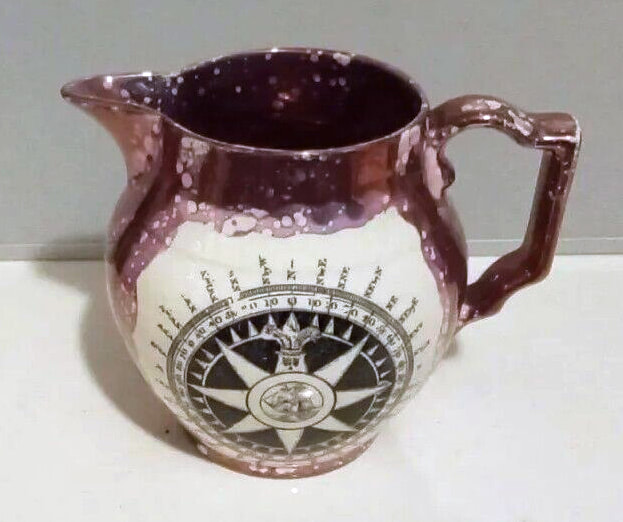The Tear: The Man Doom'd to Sail... – Sunderland
This transfer is the fourth verse of Byron's poem, The Tear. You can read more here, on Ian Holmes' site.
The man doom'd to sail
With the blast of the gale,
Through billows Atlantic to steer,
As he bends o'er the wave
Which may soon be his grave,
Remembers his home with a tear
The man doom'd to sail
With the blast of the gale,
Through billows Atlantic to steer,
As he bends o'er the wave
Which may soon be his grave,
Remembers his home with a tear
Phillips & Co, Sunderland Pottery and Dixon, Austin & Co – earlier Sunderland Pottery items, 1820s
The frog mug below is typical of those of the Phillips period, 1807–1818, at the Sunderland Pottery.
However, Ian Holmes notes that there is a very similarly scribed verse, Clare's 'What is Life', which was published in 1820. So assuming both were engraved on the same copper transfer plate, that would take the mug above just out of the Phillips & Co period. Byron's poem, The Tear, was published in 1806.
A mug from the 1820s with a more unusual moulded handle.
Dixon, Austin & Co – Sunderland Pottery, 1830s
An eel pot with similar enamel decoration to the jugs above.
Attributed to Dawson's Low Ford Pottery 1
The eel pot (above left) has a transfer that has been trimmed to fit. The puzzle jug has coloured over enamels.
Finally, a clear view of the whole transfer (click to enlarge) on a typical Dawson frog mug.
Attributed to Dawson's Low Ford Pottery 2
This large mug with a very simple rendering of the verse. It is attributed to Dawson's on the basis of a similar mug with the Mariners' Arms transfer.
Moore & Co, Wear Pottery, Sunderland
This version has a misspelt printed mark for 'Moor & Co'. It resurfaces on reproduction items a century later (see bottom of this page).
The same misspelt transfer on a pink lustre jug. The decoration around the collar with thick and thin lustre lines is typical of Moore's pottery from the 1840 and 50s, and sometimes combined with transfers of flowers.
A Scott & Sons, Southwick Pottery, Sunderland
Two jugs with typical 'Scott' lustre decoration and short spouts.
The Tear: The Man Doom'd to Sail... – Tyneside
Robert Maling, Ouseburn Bridge Pottery, Newcastle
|
I am indebted to Gloria from Sussex Lustreware for telling me about the 'Woolner jug', which was the subject of a book called 'A Tangled Web' by LM Montgomery, Canadian author of Anne of Green Gables. You can read more about it on page 4 of this link.
The jug itself has the Robert Maling transfer above, but with earlier 'wheat ear' decoration from the 1820s. The inscription on the jug (which is now in pieces) reads 'Harriet Kemp. Albro. 1826'. |
Redhead, Wilson & Co, Forth Banks, Newcastle Pottery – 1833–1838
A small jug from the Newcastle Pottery with typical yellow band decoration from the 1830s.
Thomas Fell & Co, St Peter's Pottery
This version, reliably attributed to Thomas Fell on the basis of the other transfers, is similar to the Newcastle Pottery version above, but without a border.
Cornfoot, Carr & Co, North Shields – 1832–1838 or
Carr & Patton, North Shields – 1838–1846
Two jugs from the 1830s with transfers reliably attributed to North Shields.
Carr & Patton, North Shields – 1838–1846
This jug, with flowers around the collar, appears to imitate those made by Scott's in the 1830s. The bridge view, however, is a version I've attributed to North Shields.
John Carr & Co, North Shields – 1848–1854 or
John Carr & Son/s – 1854–1893
Carr produced two versions of the transfer, and both appear on the large jug below.
When the Carr and Patton partnership dissolved in 1846, John Carr continued at North Shields, and John Patton at the Phoenix Pottery in Newcastle. Each proprietor had their own version of the Mariner's Compass transfer with a printed signature beneath (see left details below). Those Mariner's Compass transfers were evidently paired with unique versions of the verse transfer (shown right below). The easiest way to tell them apart is by the centres of the flowers at the bottom of the verse.
John Patton, Phoenix Pottery, Newcastle – 1847–?
Two jugs with inscriptions for the Carre family, dated 1850 and 1851. Inscriptions with French names from the Channel Islands appear frequently on these items. See more Patton inscribed items here.
A Patton marked jug and a large mug with coloured over-enamels applied to the transfers.
A degraded imprint of the transfer on a bowl with crude enamelling. This could be the product of another later pottery using the Patton copper plate. See the Mariners' Compass page for a similar bowl with a 'HOBSON' impressed mark.
Unidentified Tyne pottery – John Hobson
These small plaques, which are specific to Tyneside, are known to have been made by CT Maling, Newcastle, and John Carr & Sons, North Shields. This is a freer version of the Patton transfer. Note the ends of the leaves in the centre version below, and compare them to the Patton version, on the right.
The inscriptions on the jugs below are similar to those on the Patton items. However, it is possible that the enameller moved between potteries. The second jug has an inscription for 1854 that would put it within the Patton period. However, the lustre decoration on the first and last jugs is very distinctive, and doesn't appear on either the Carr or Patton items above.
The bowl below has this version of the transfer, coupled with the version of the mariner's compass with a J H printed mark. Sometimes these bowls are impressed 'J H' beneath a Staffordshire knot (it was not uncommon for North East potters to try to pass off their wares as Staffordshire). I have one bowl on record with the impressed mark 'Hobson'. As yet, I've been able to find out little about this potter. See the mariner's compass page for more information. I've previously assumed that items with the J H printed mark to be from North Shields.
A late mug with the transfer. Again, I had previously assumed this bridge transfer and frog to be North Shields.
Thomas Fell & Co, St Peter's Pottery
This bowl came as a surprise to me as it very closely resembles, in both lustre decoration and enamelling, items attributed to North Shields. However, it has an impressed crown mark known to have been used by Thomas Fell. The ship above the verse is more finally engraved than on the North Shields items above.
The wavy lustre decoration is more usually found on items with John Carr & Sons impressed marks.
A jug with the 'Fell' version of the transfer. Again, it looks very similar to North Shields jugs made at that time.
The Tear: The Man Doom'd to Sail... – Reproductions
Gray's Pottery
The items below were likely from the 1950s. You can read more about Gray's Pottery here.
This appears to be the original transfer used by Moore's in the 1840s, with a misspelt mark (see above). These reproduction items are easy to spot because they are lustred to the base and on the inside, a feature that almost never appears on original Sunderland items.
Interestingly, these items were also produced without the printed maker's mark. Note that the jug below has an undecorated base.
